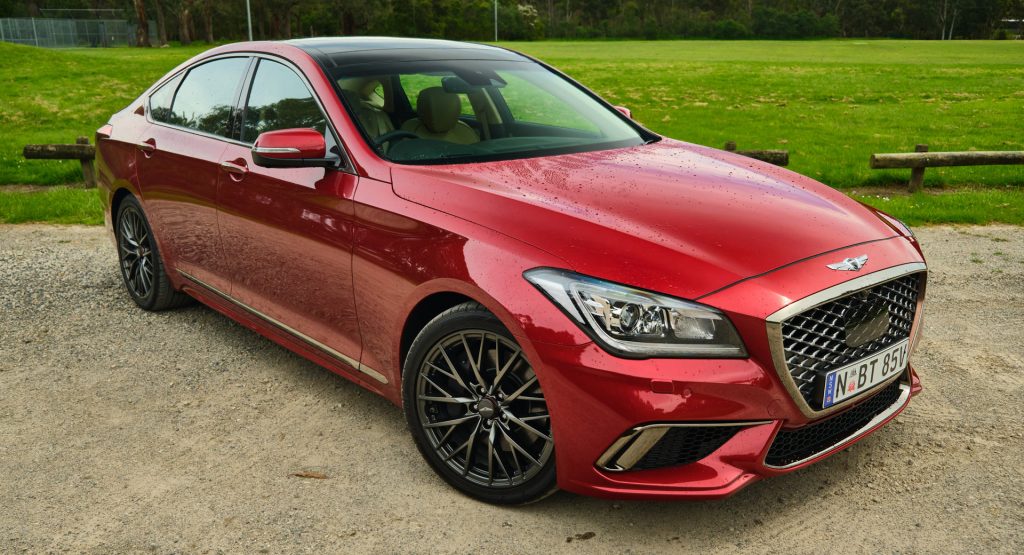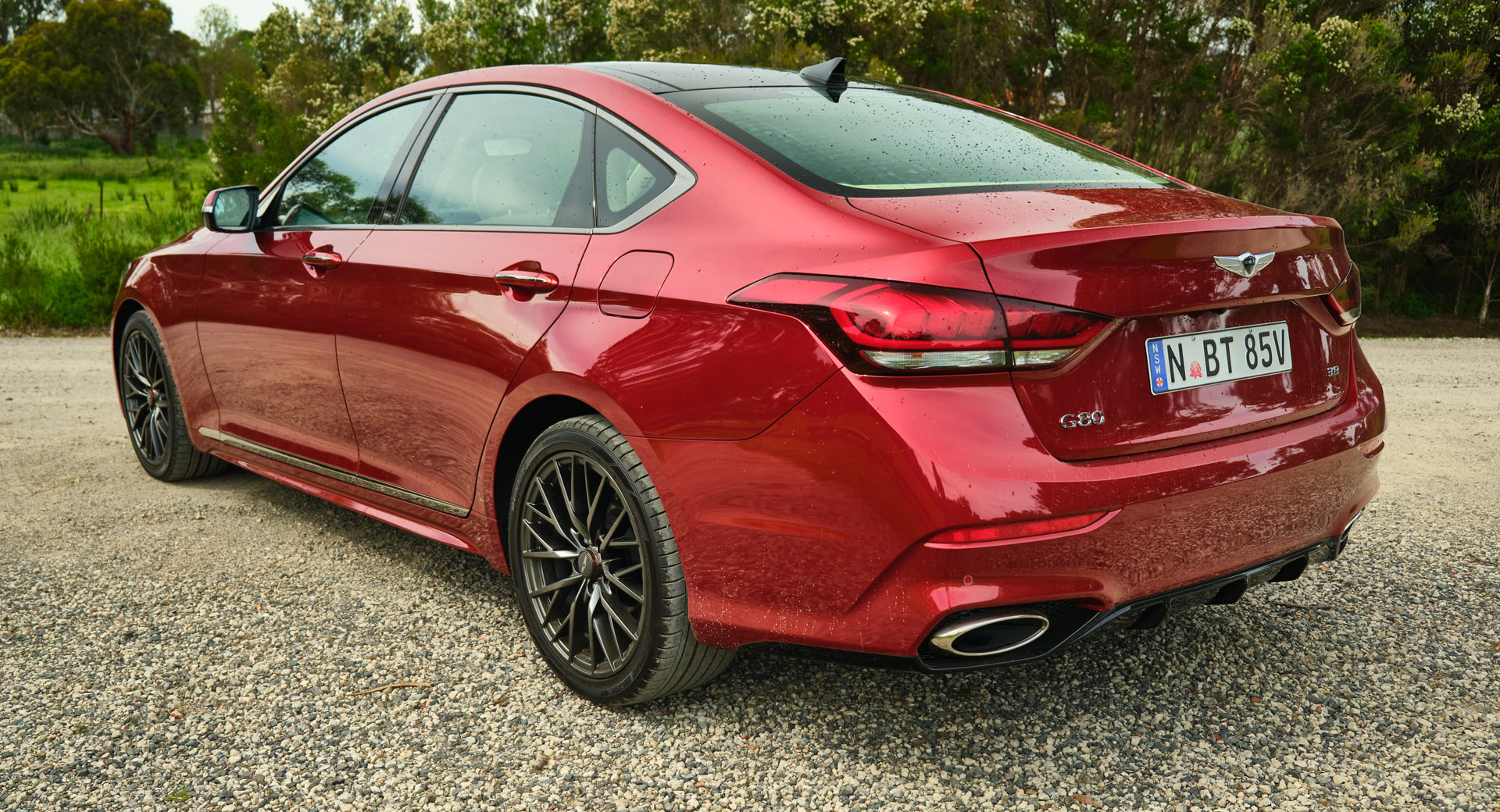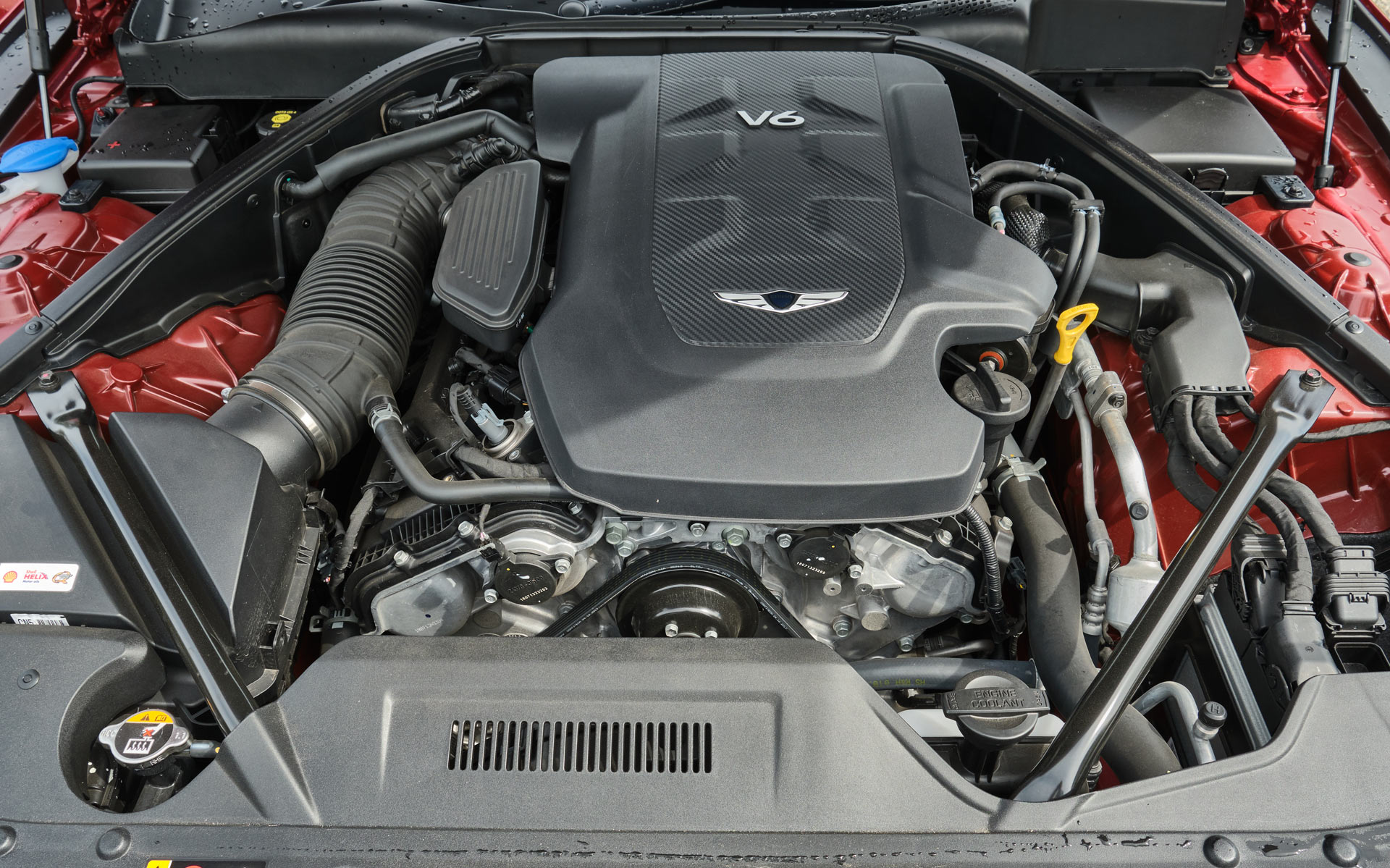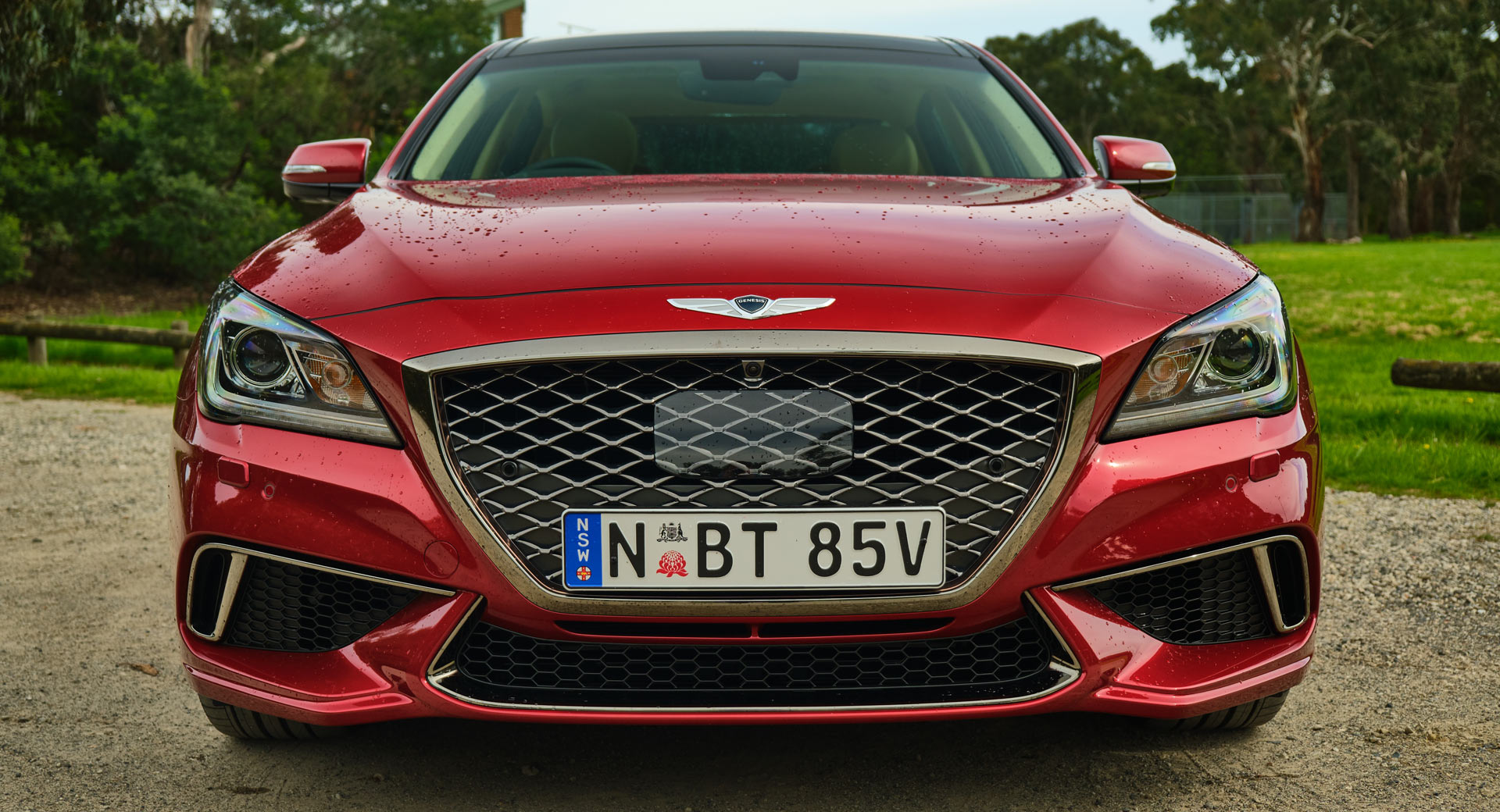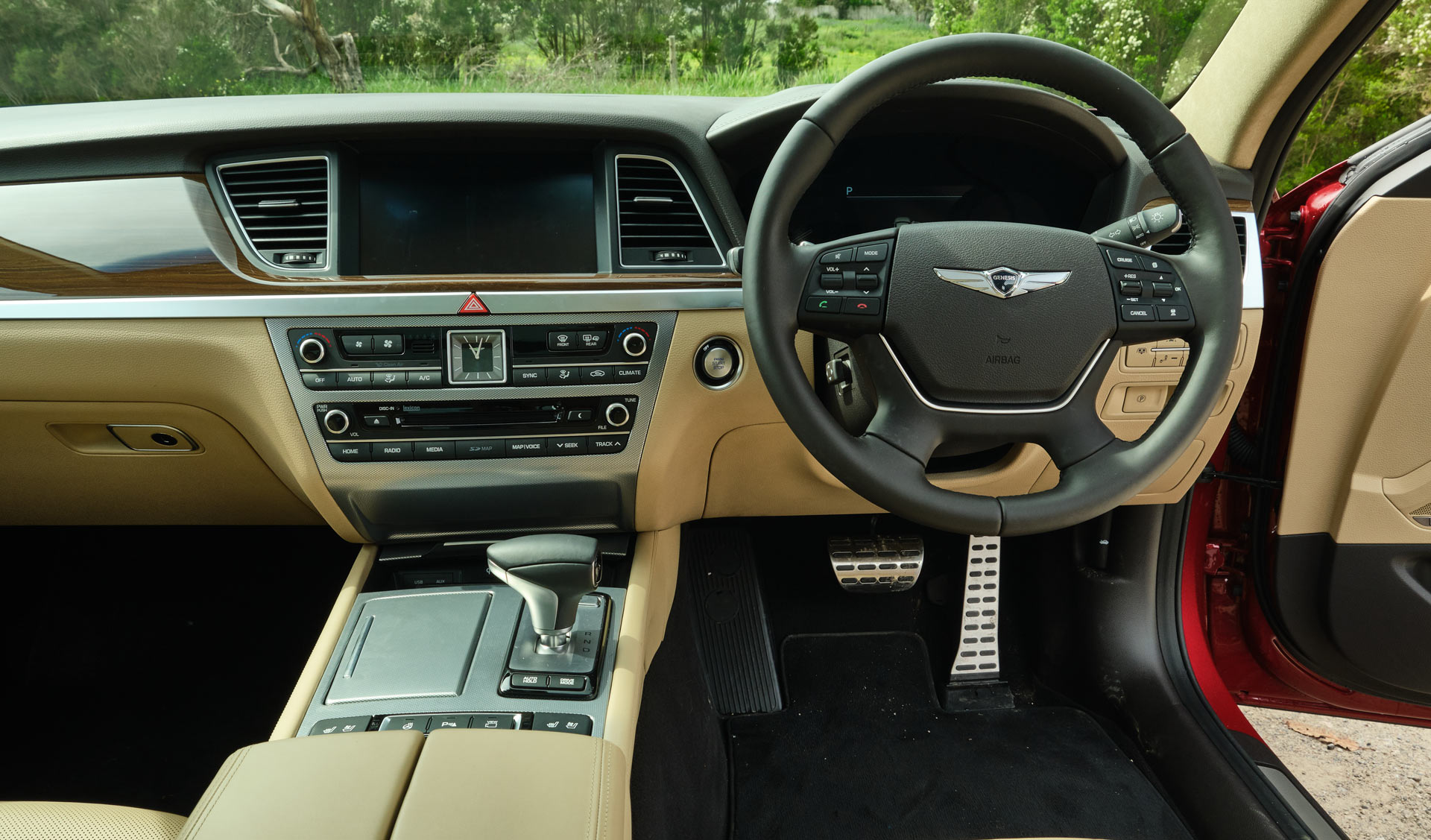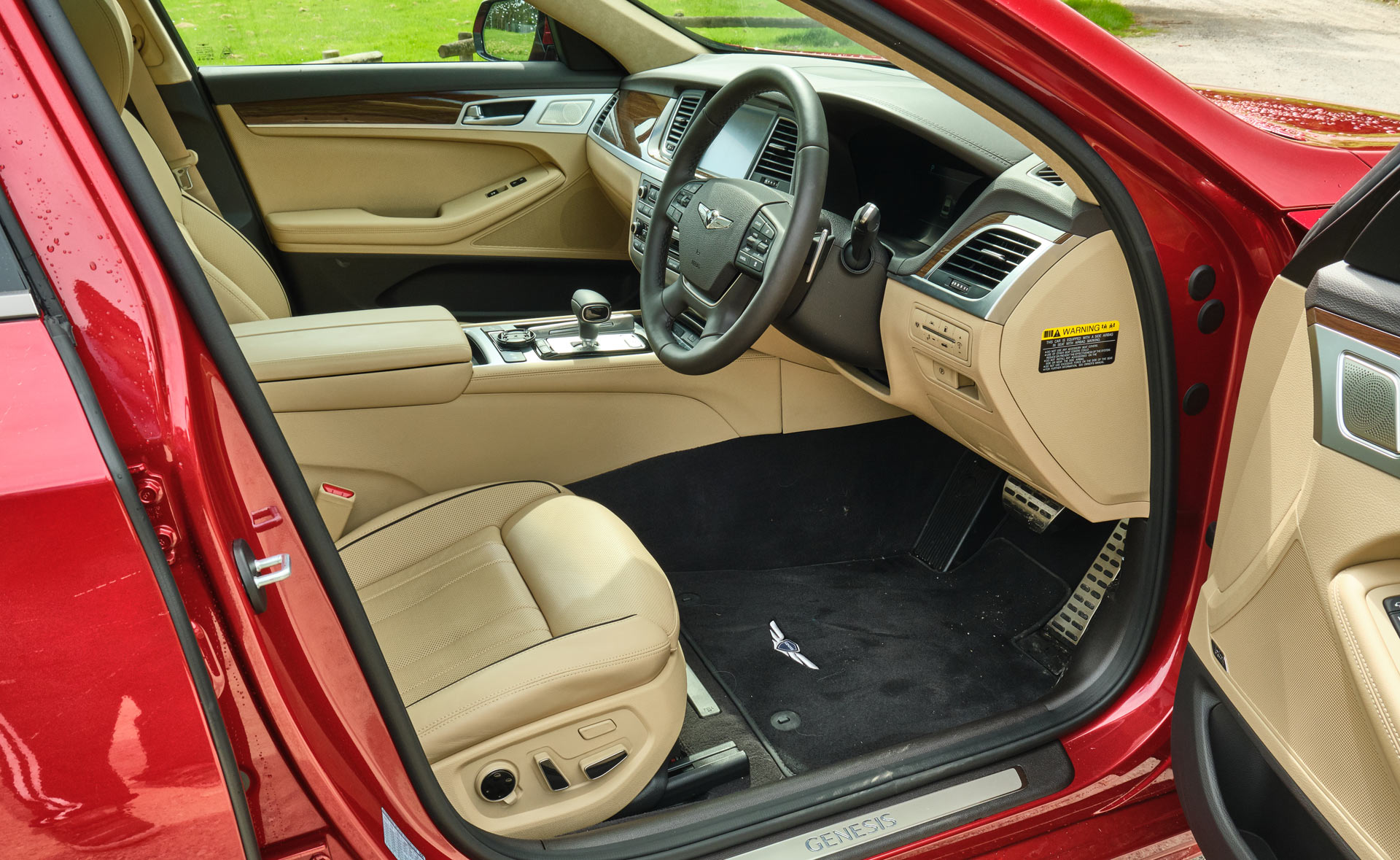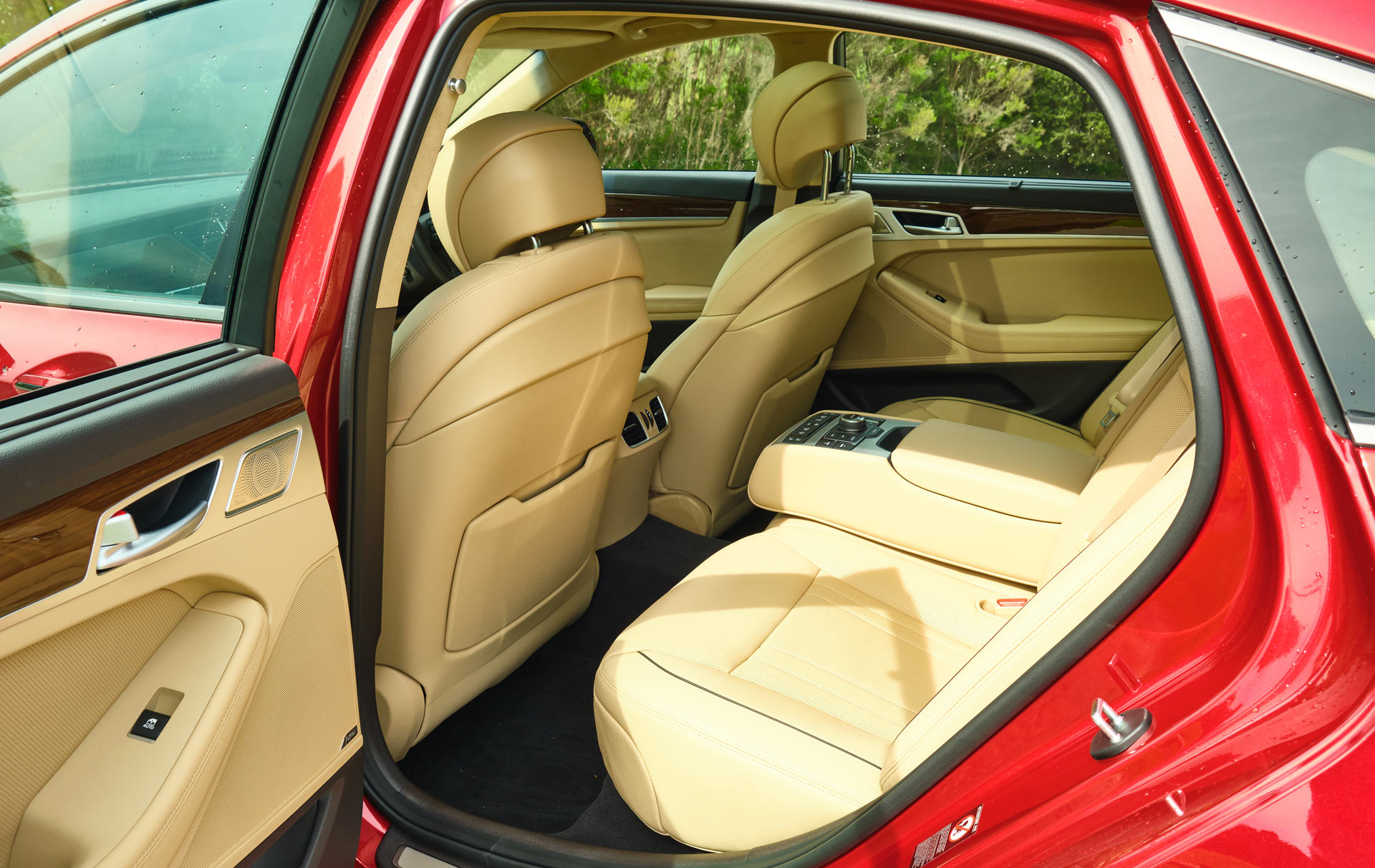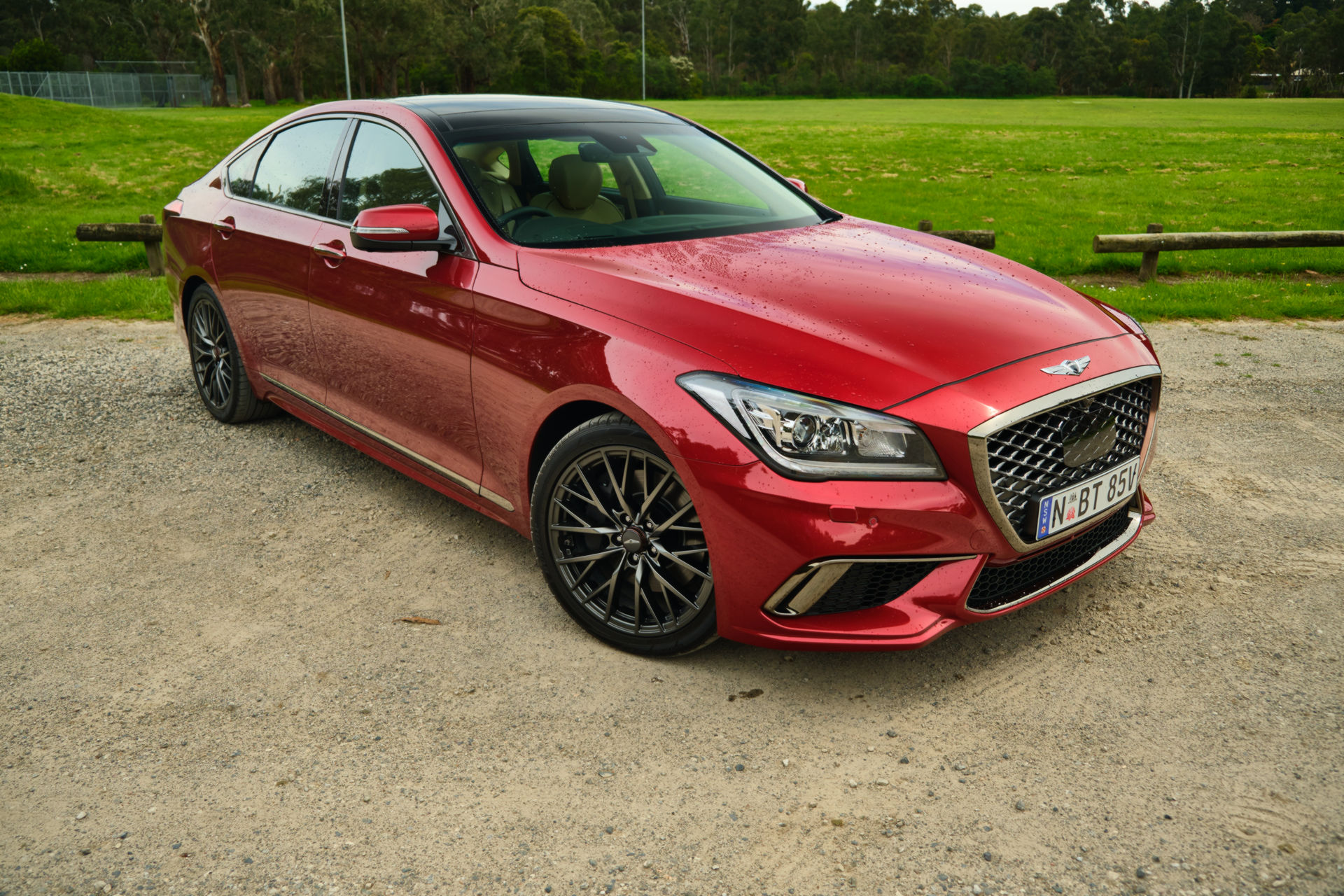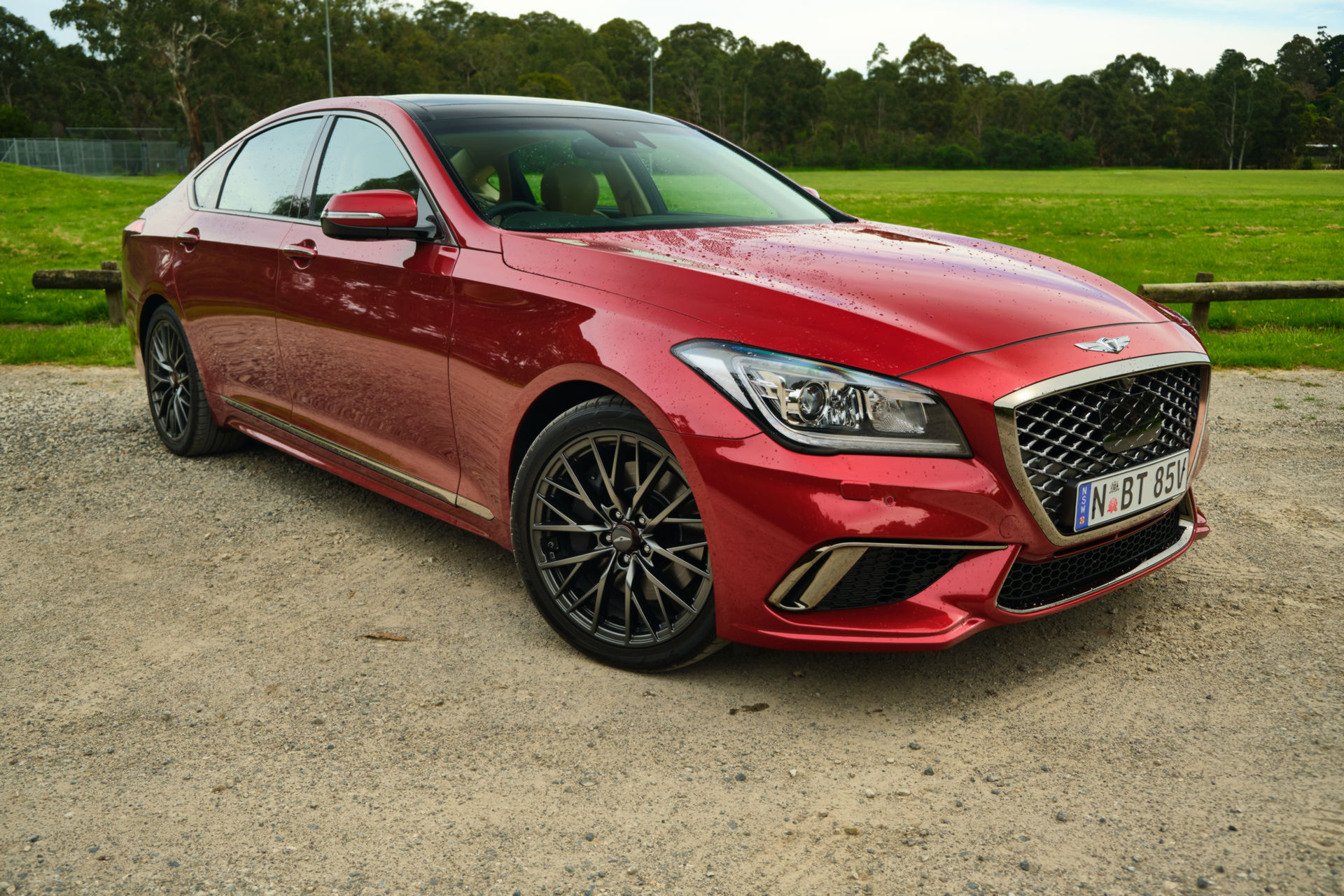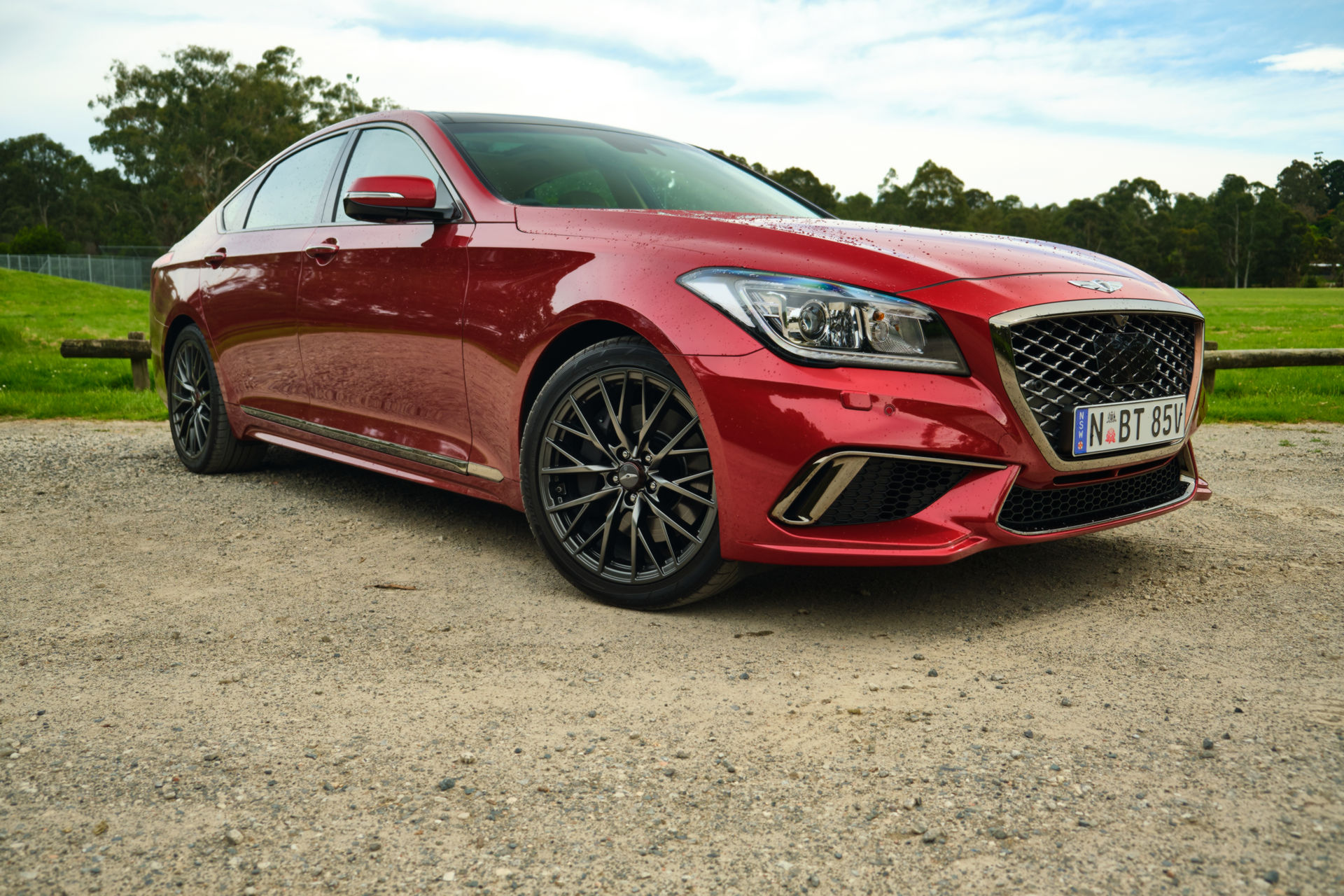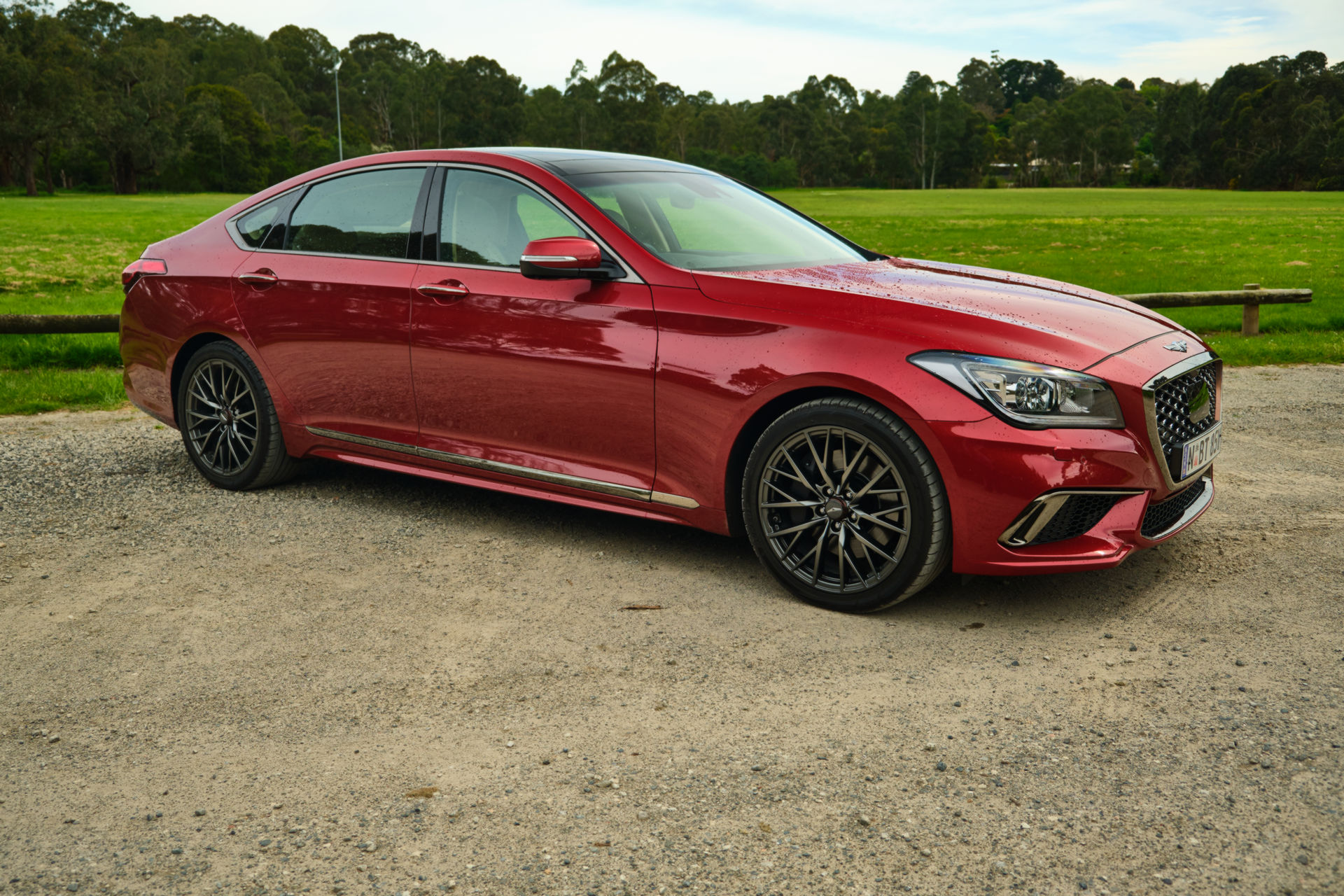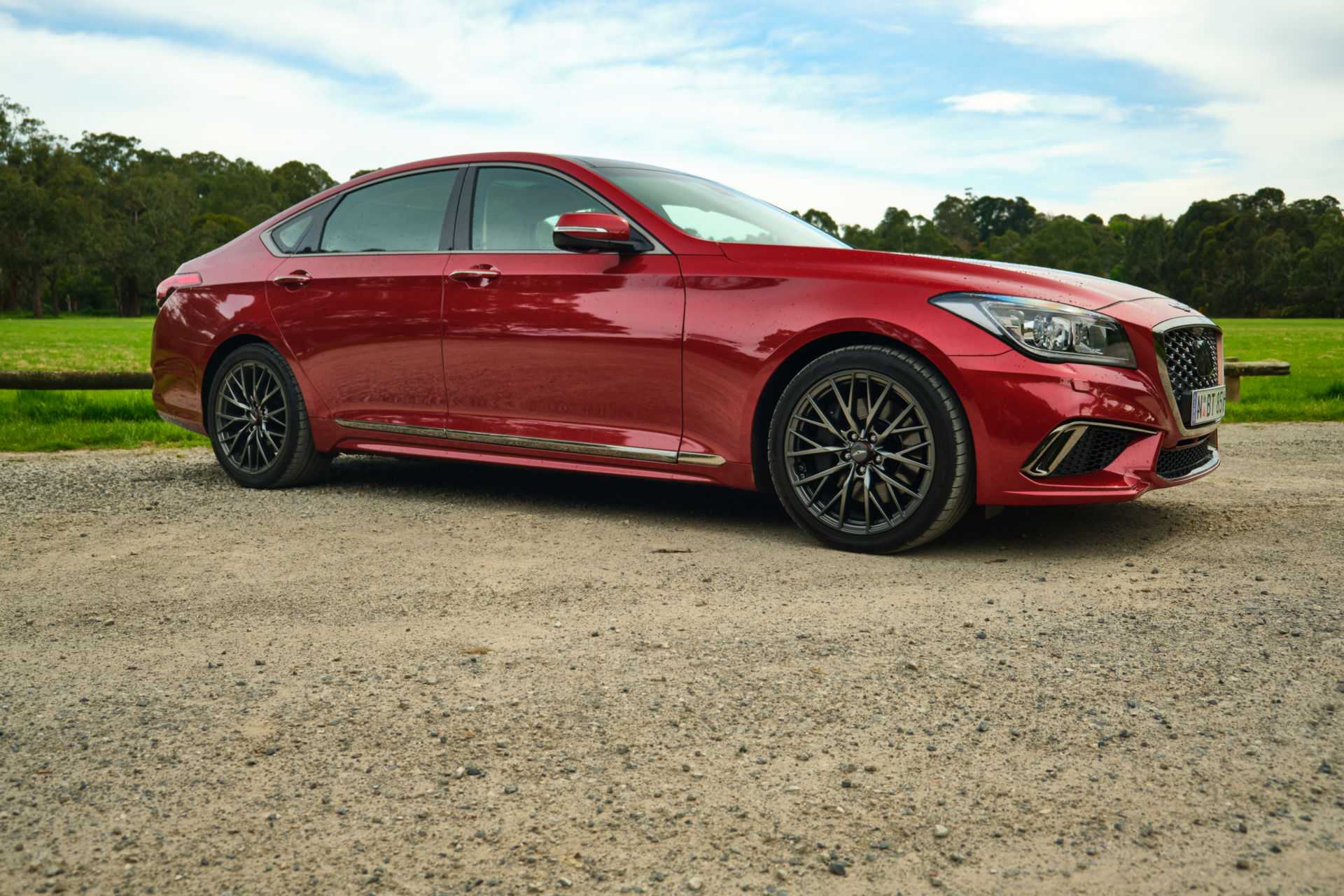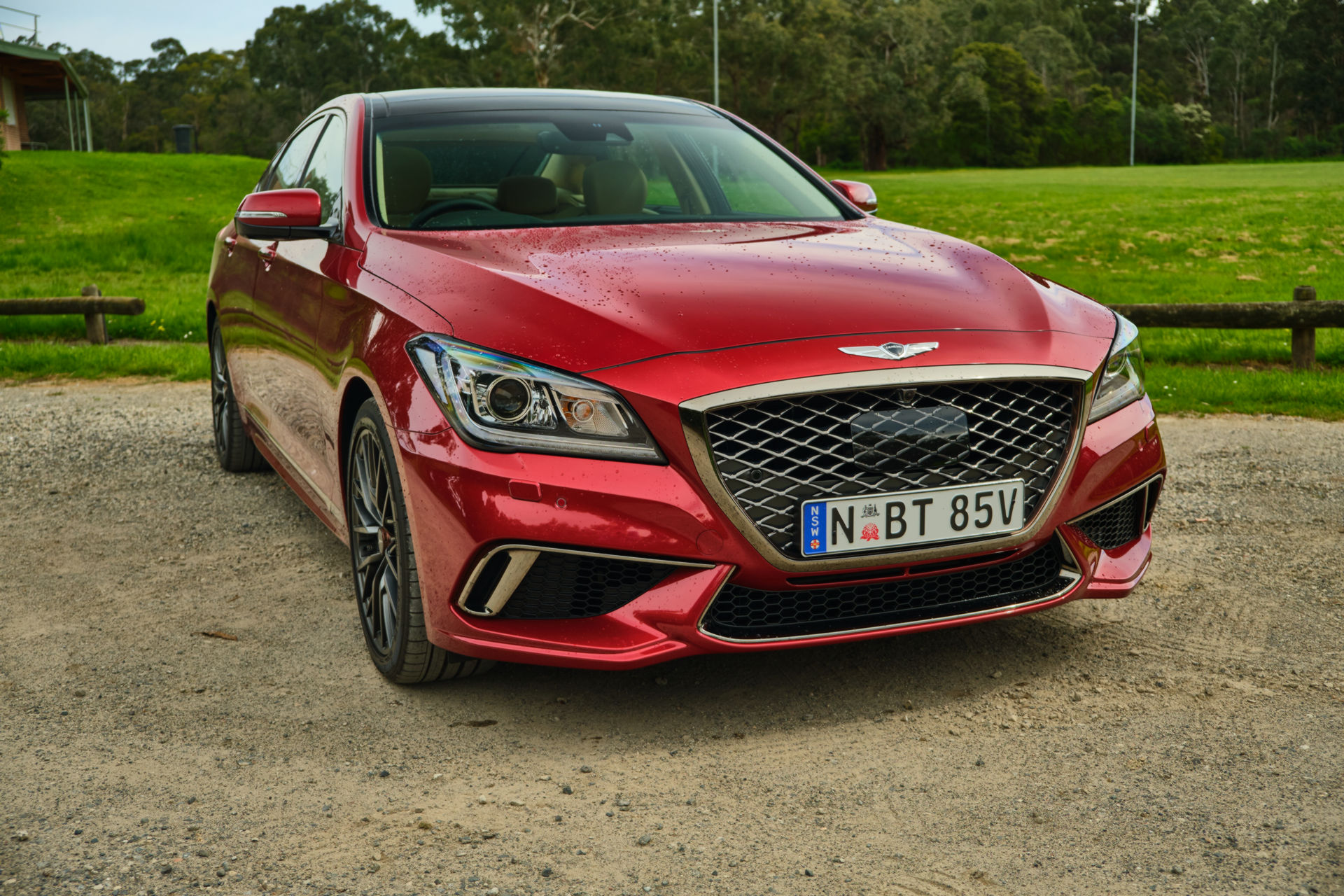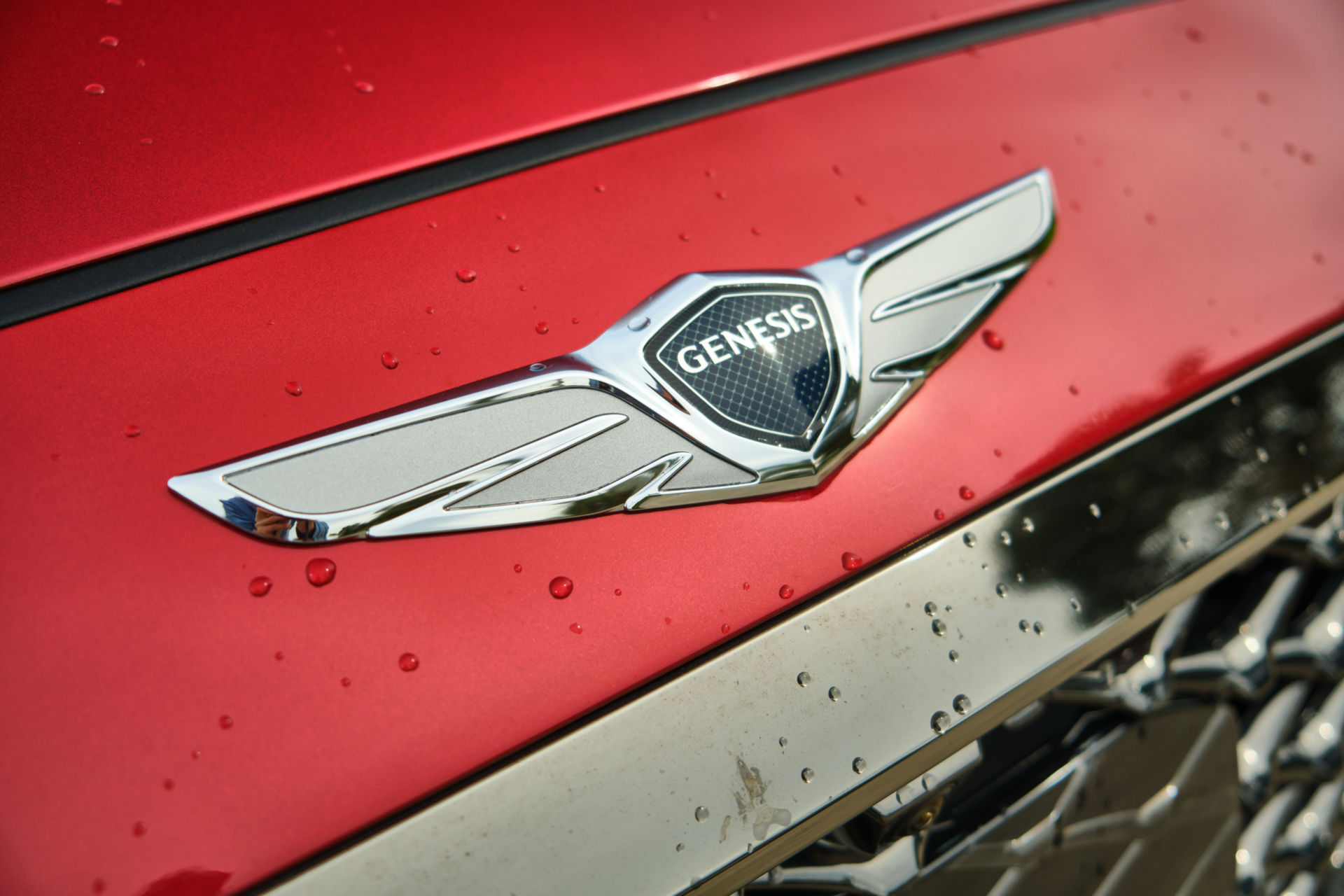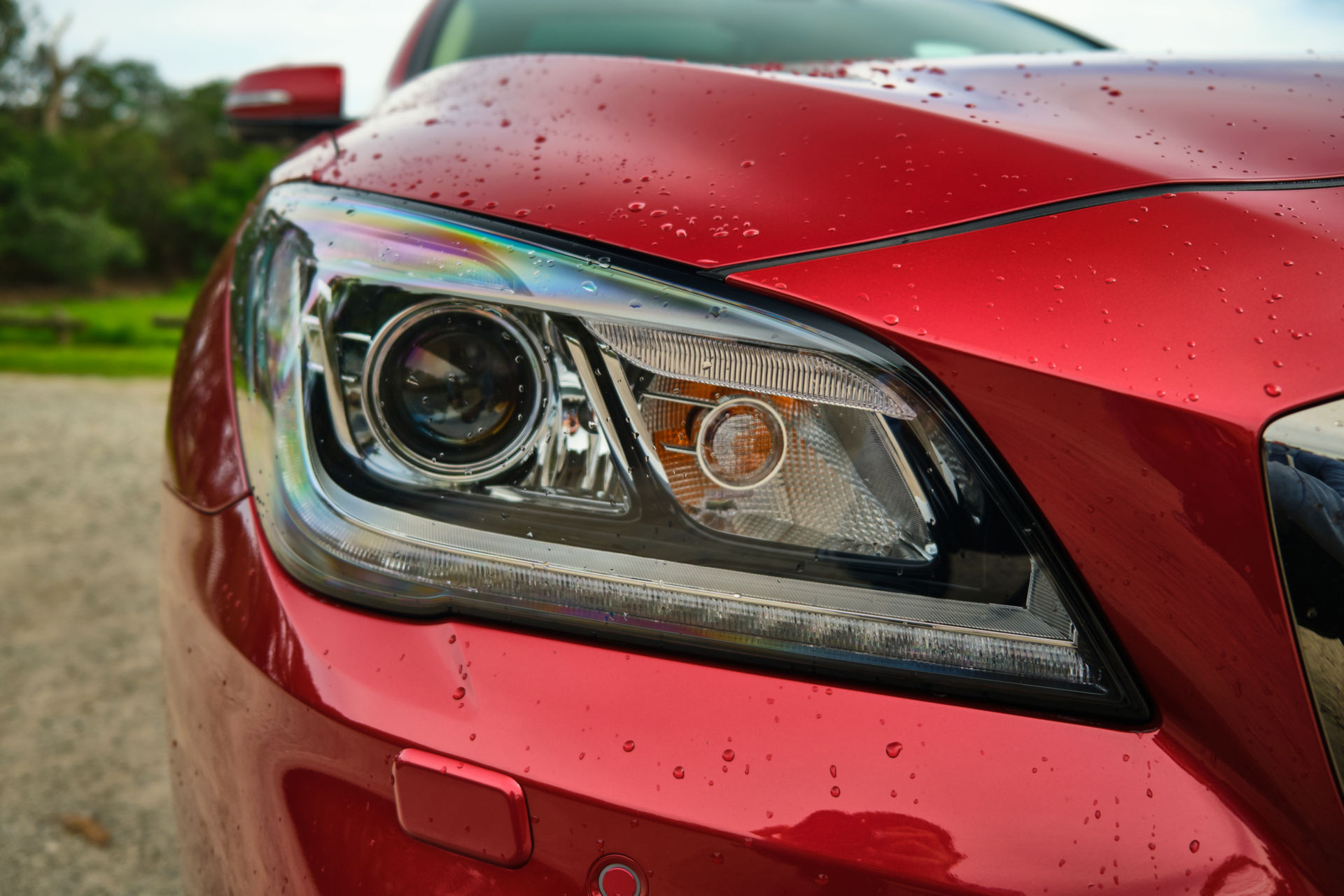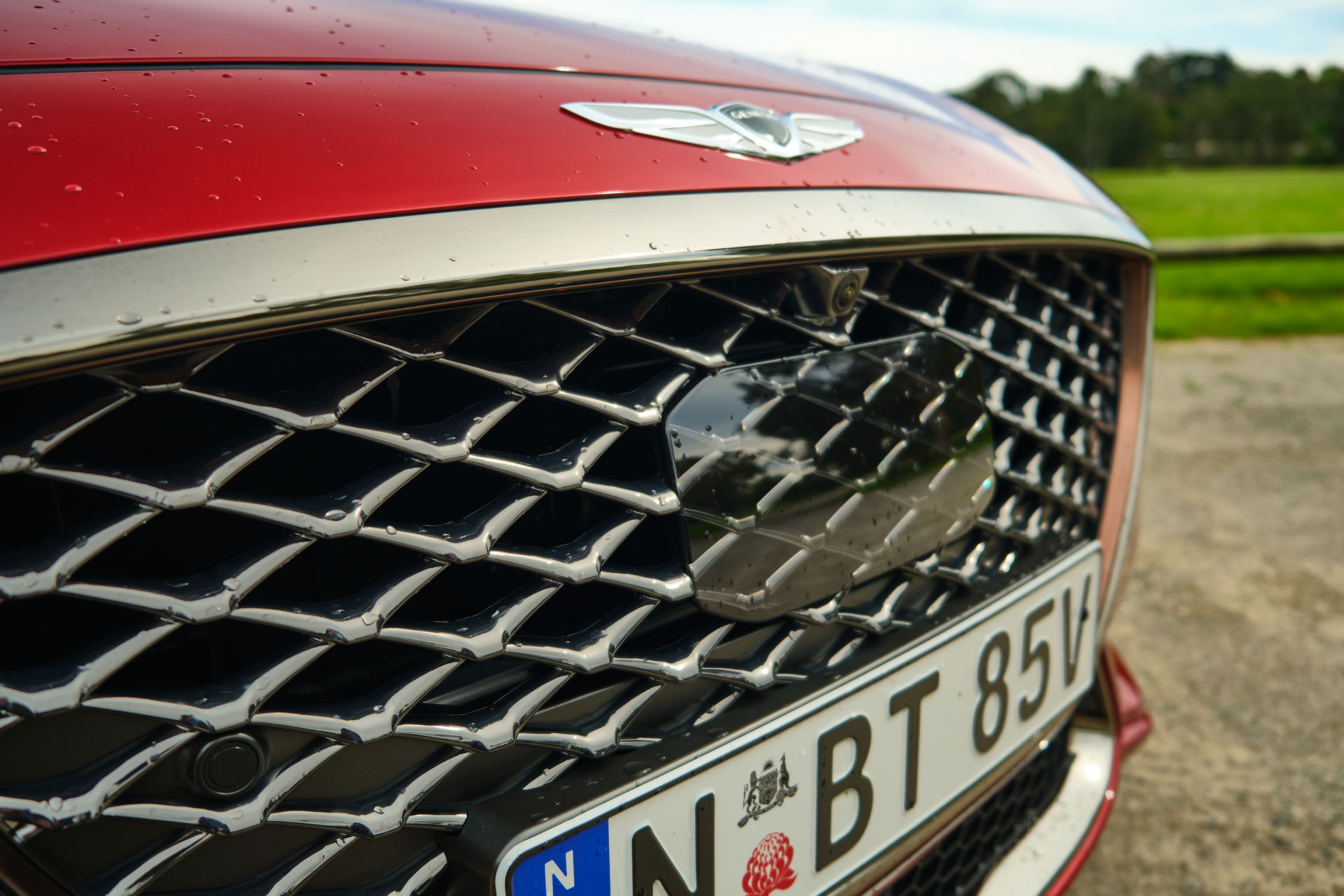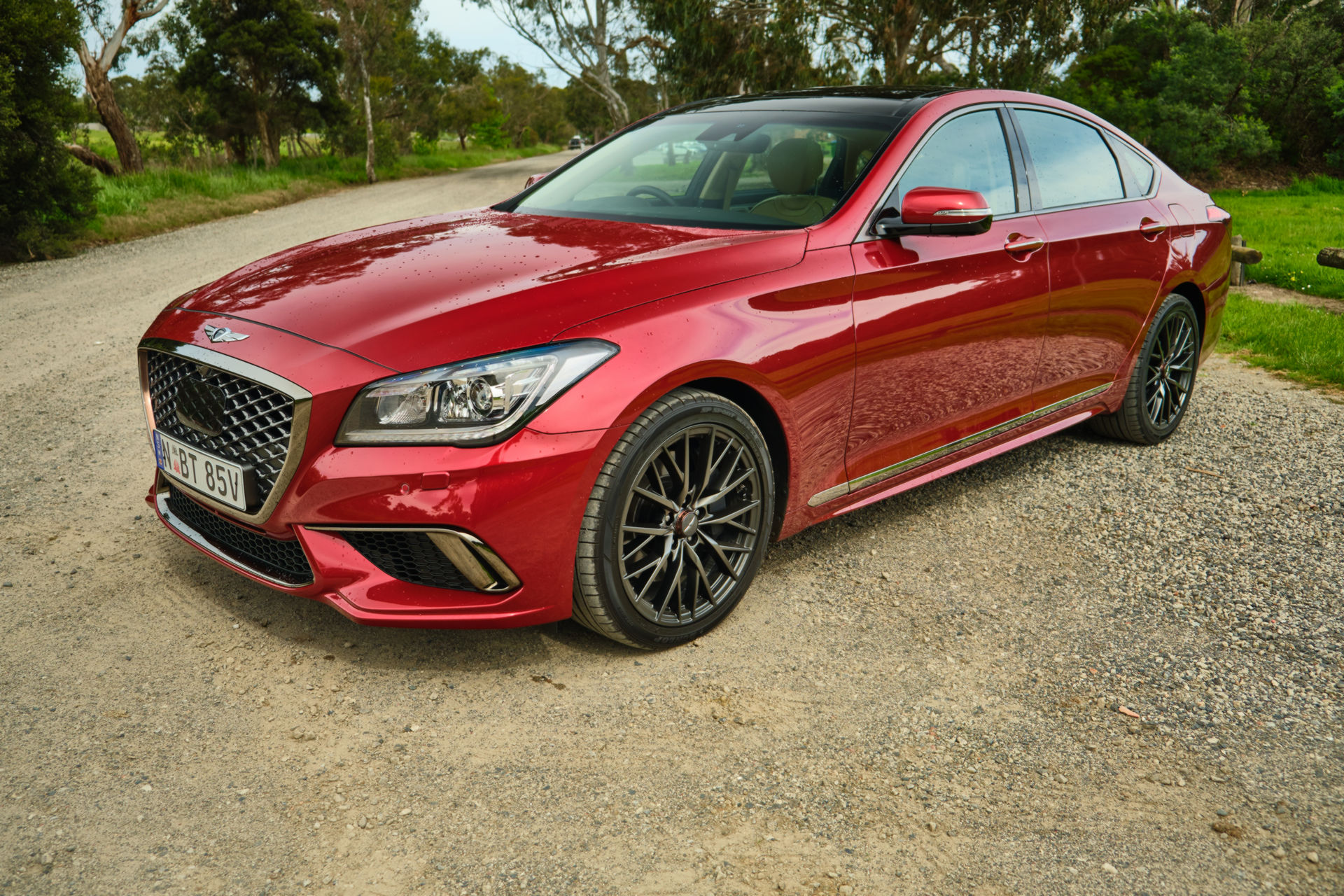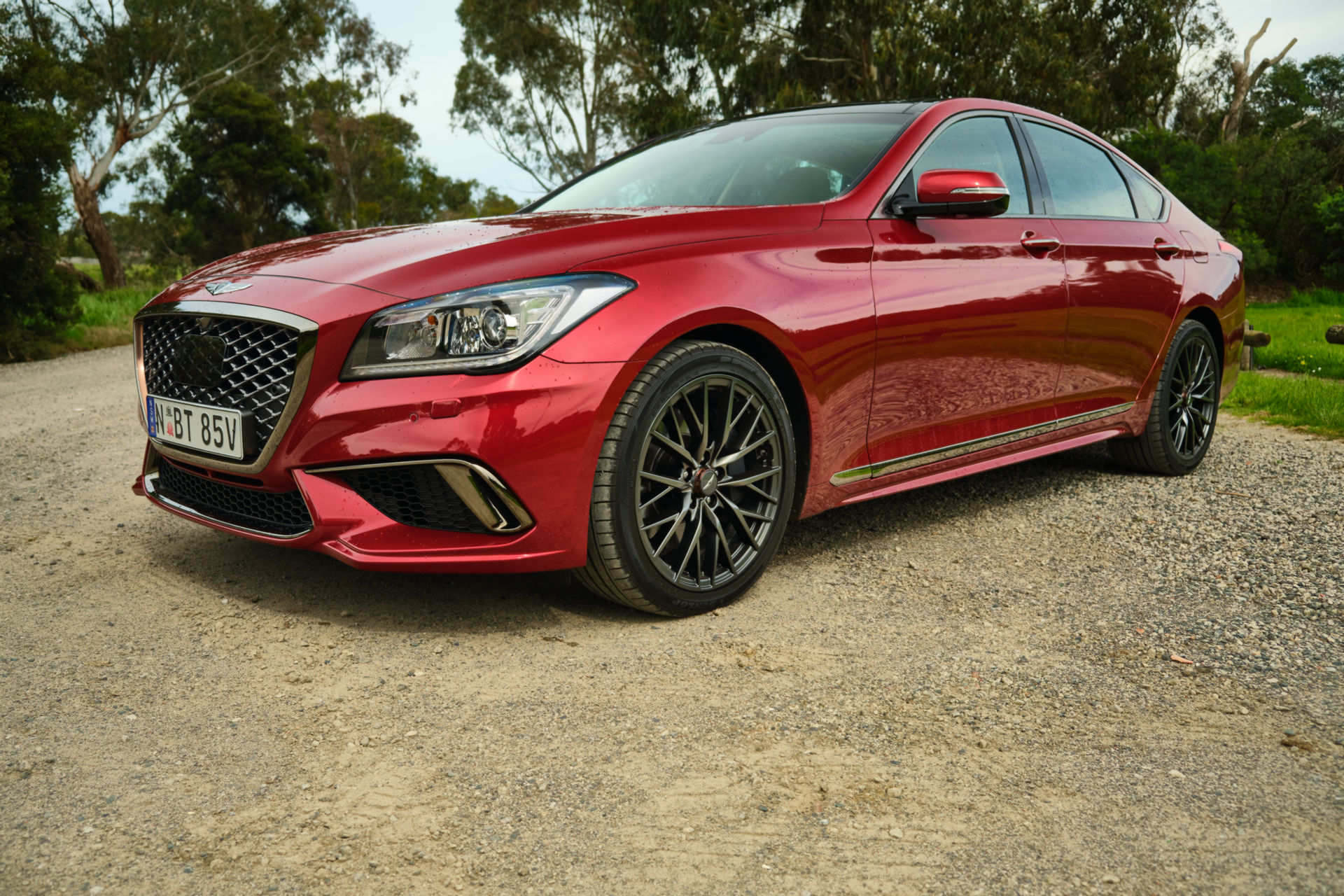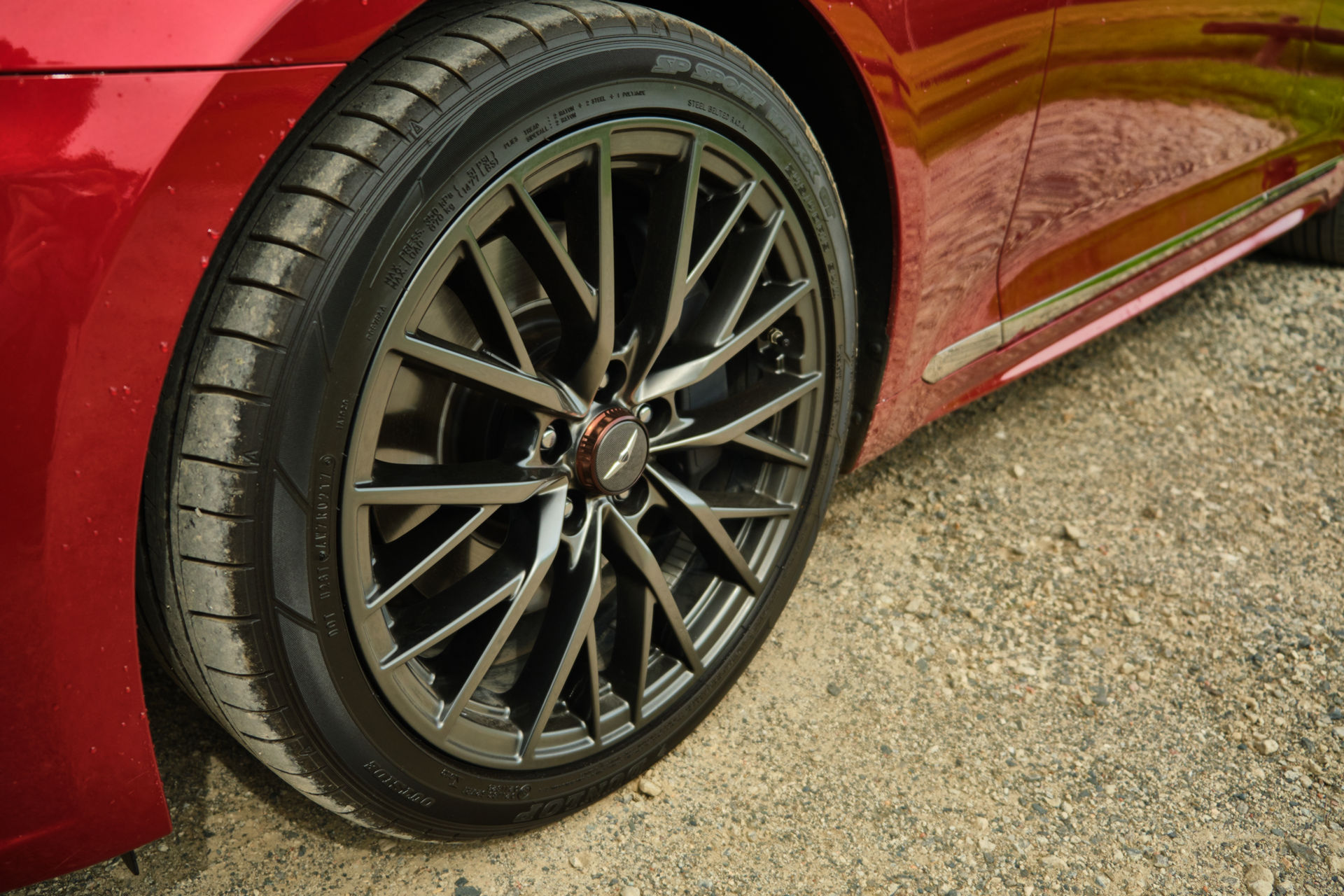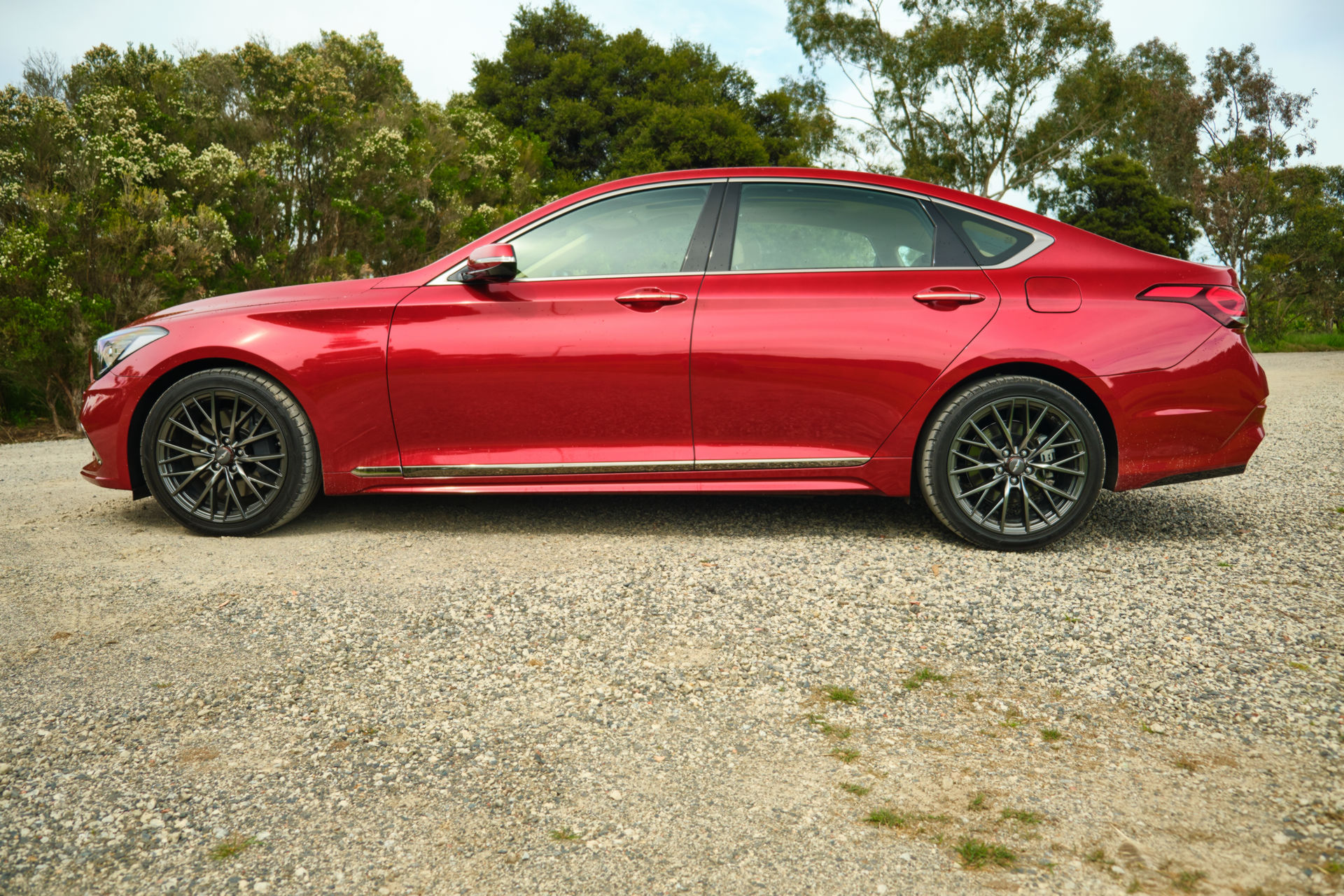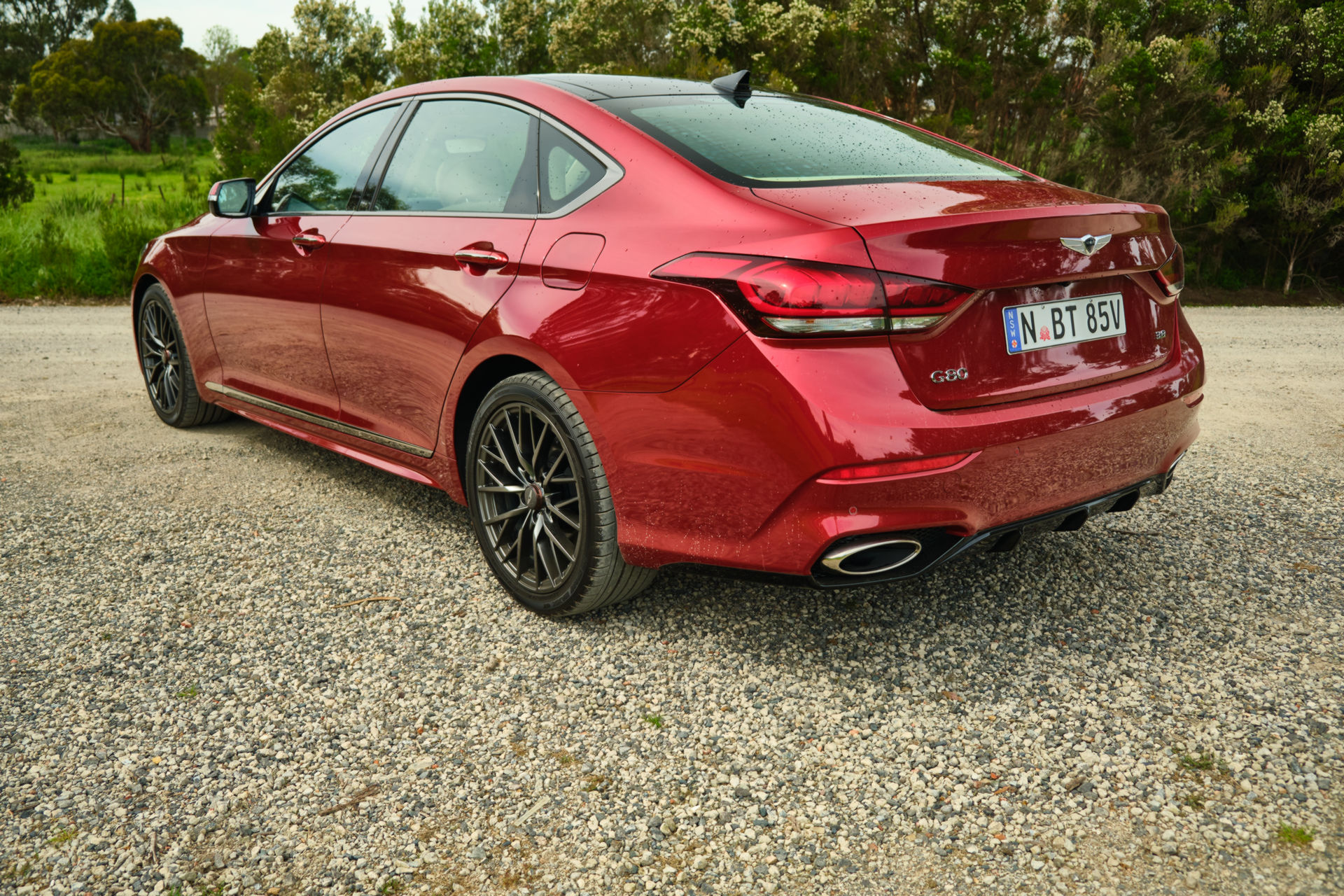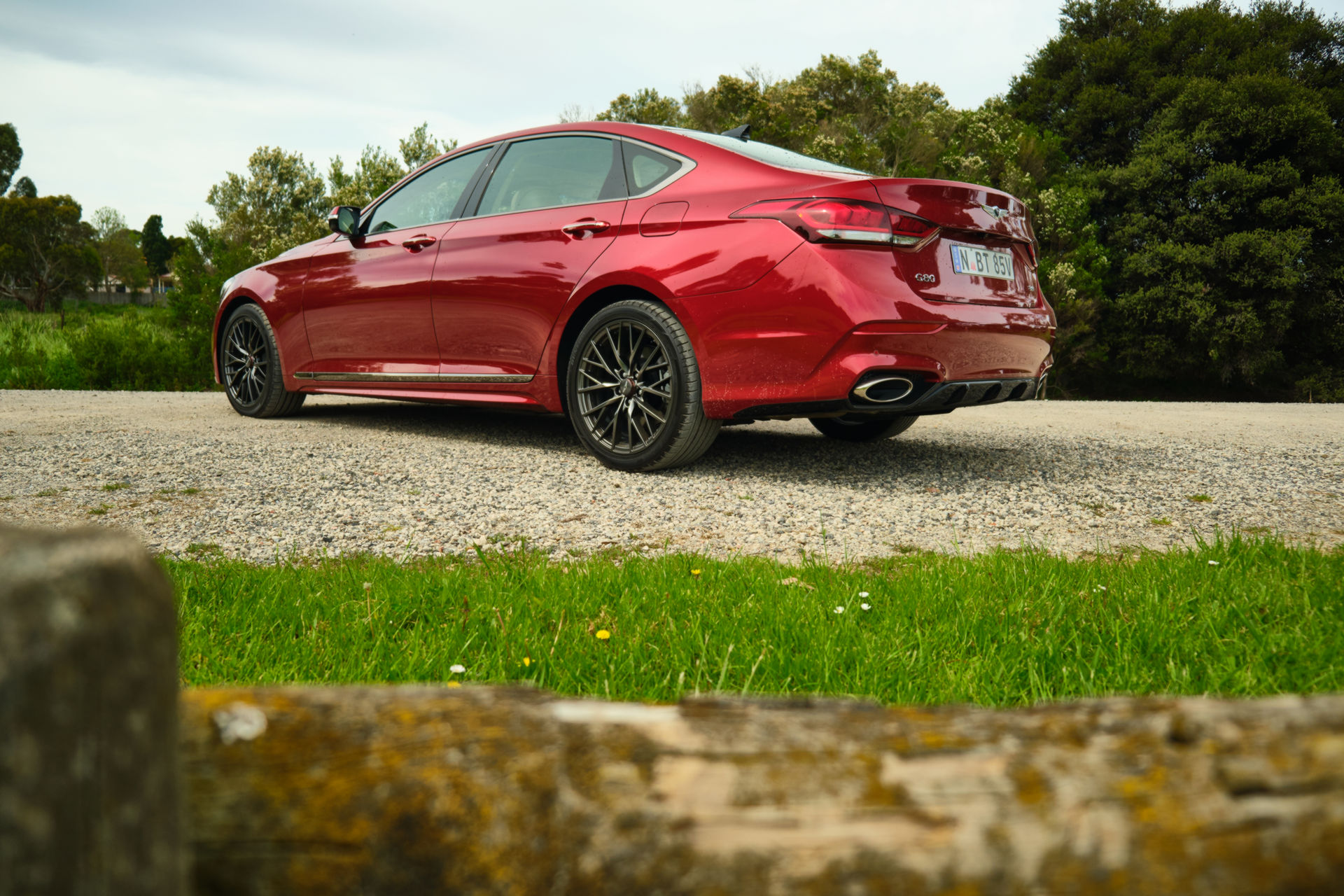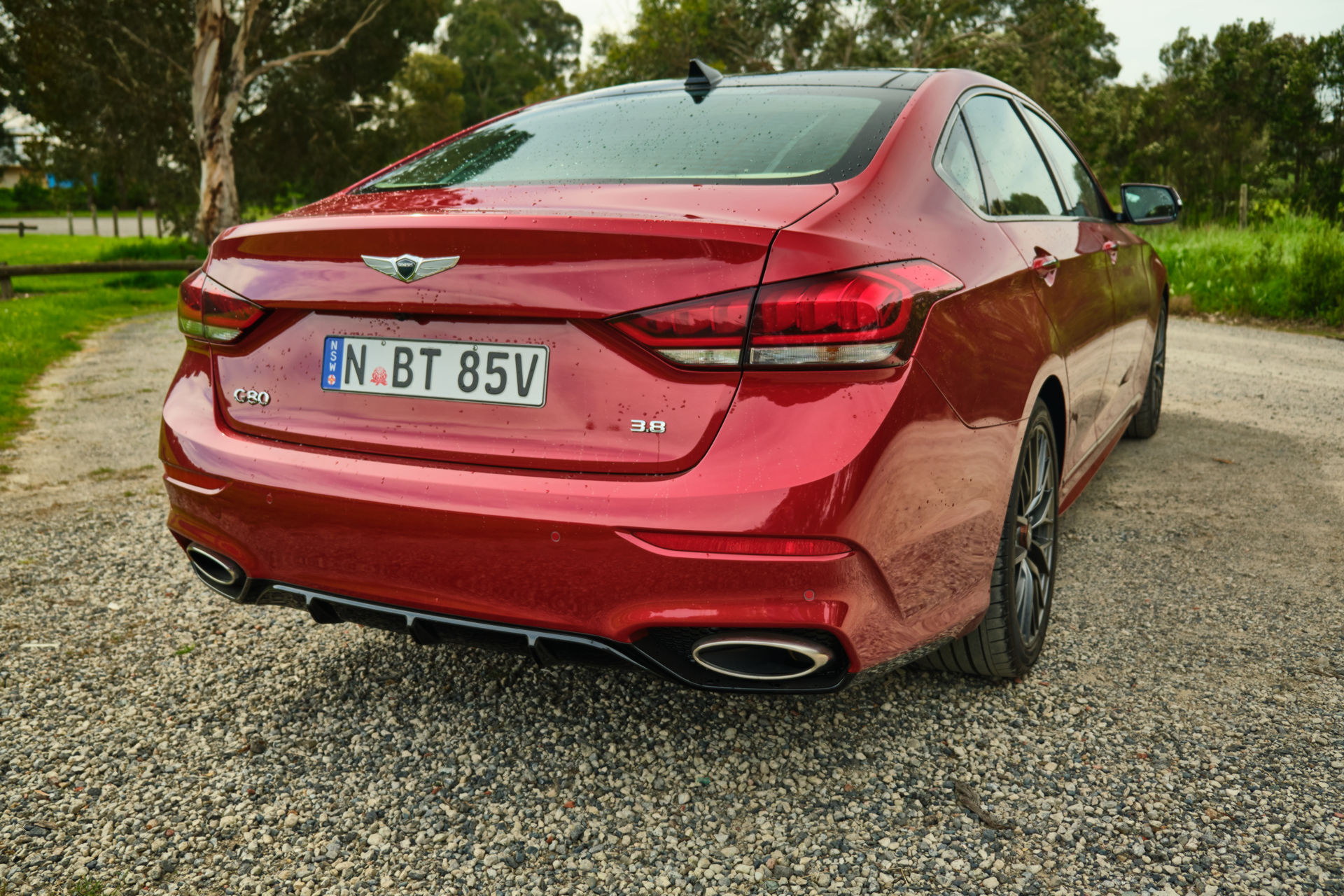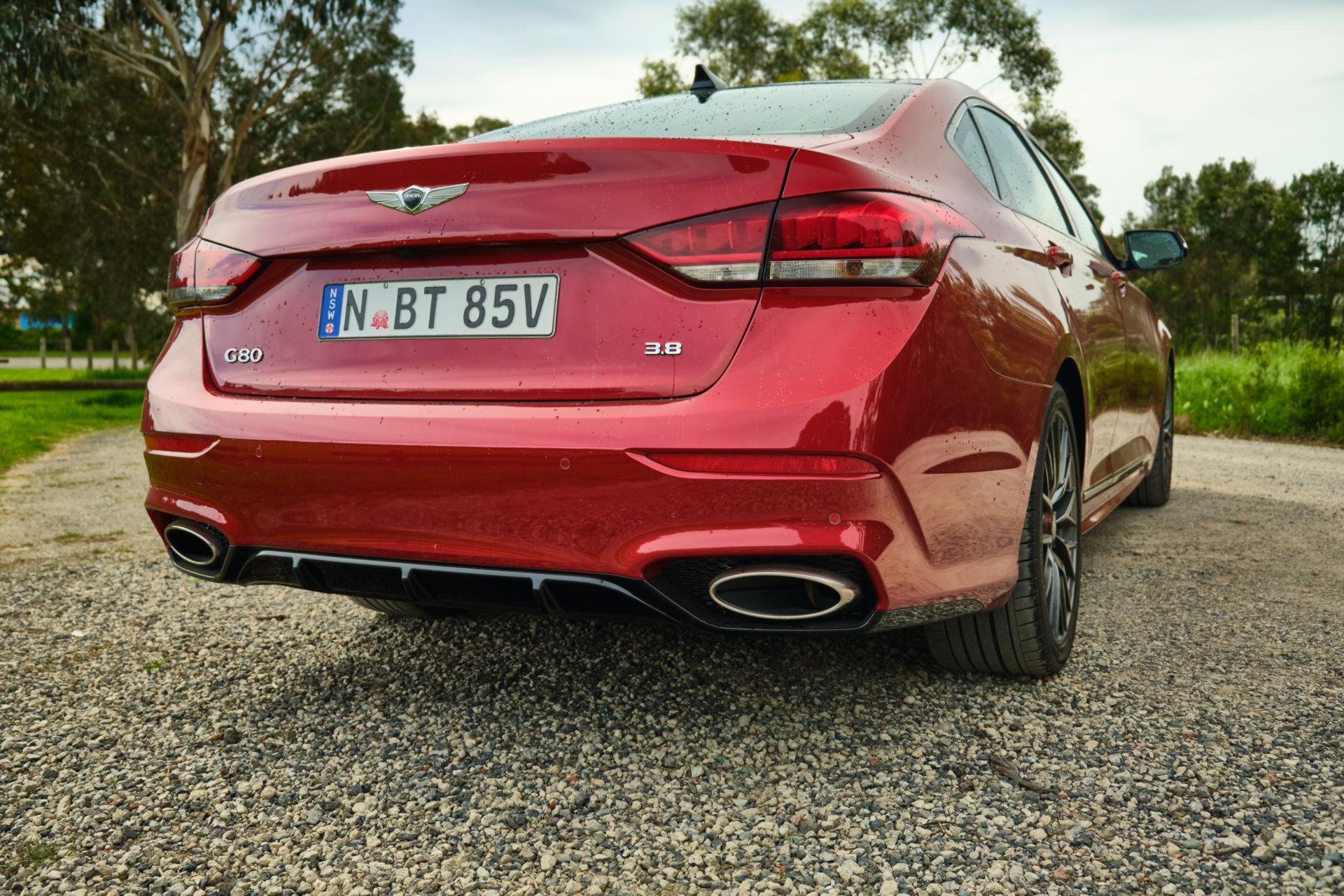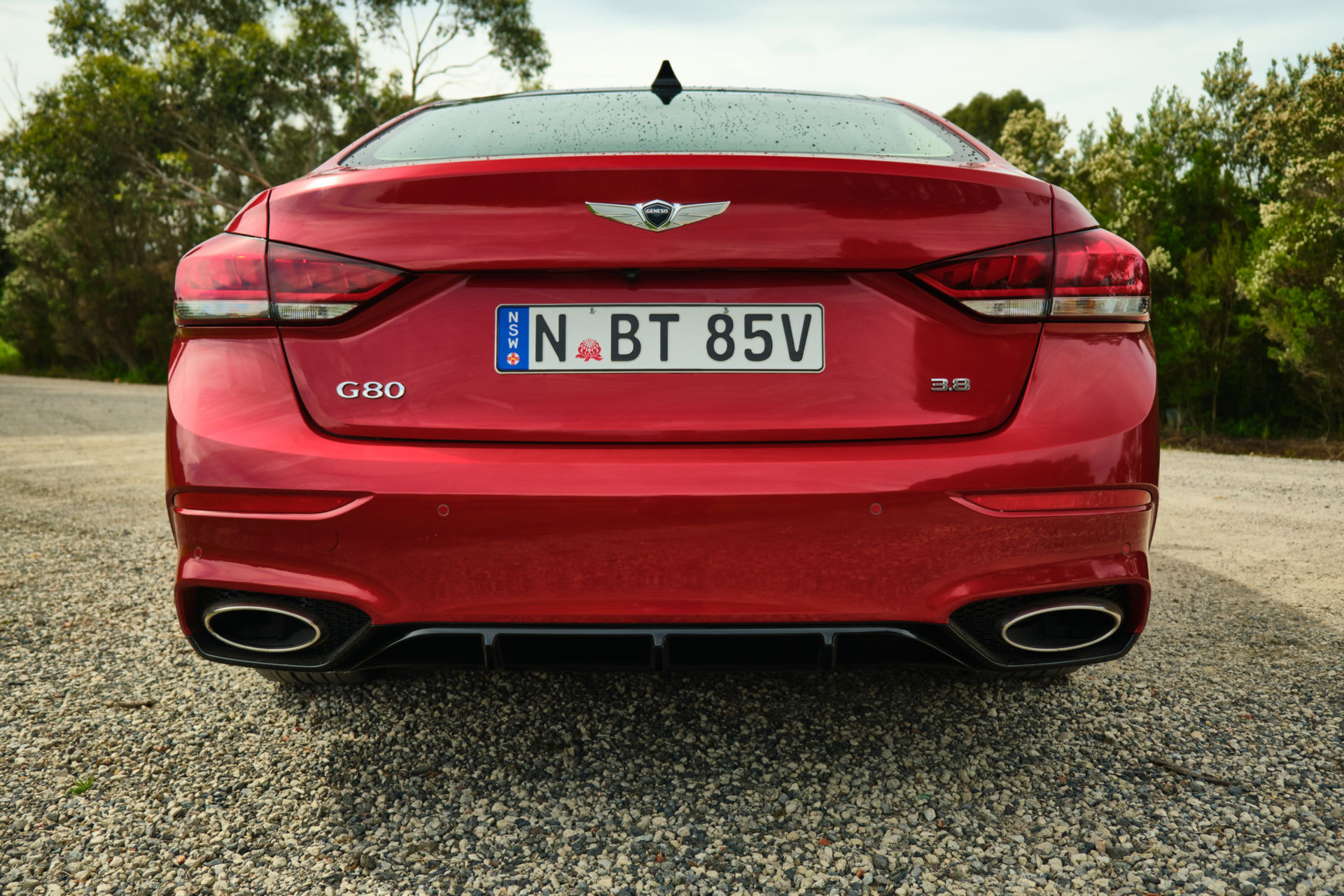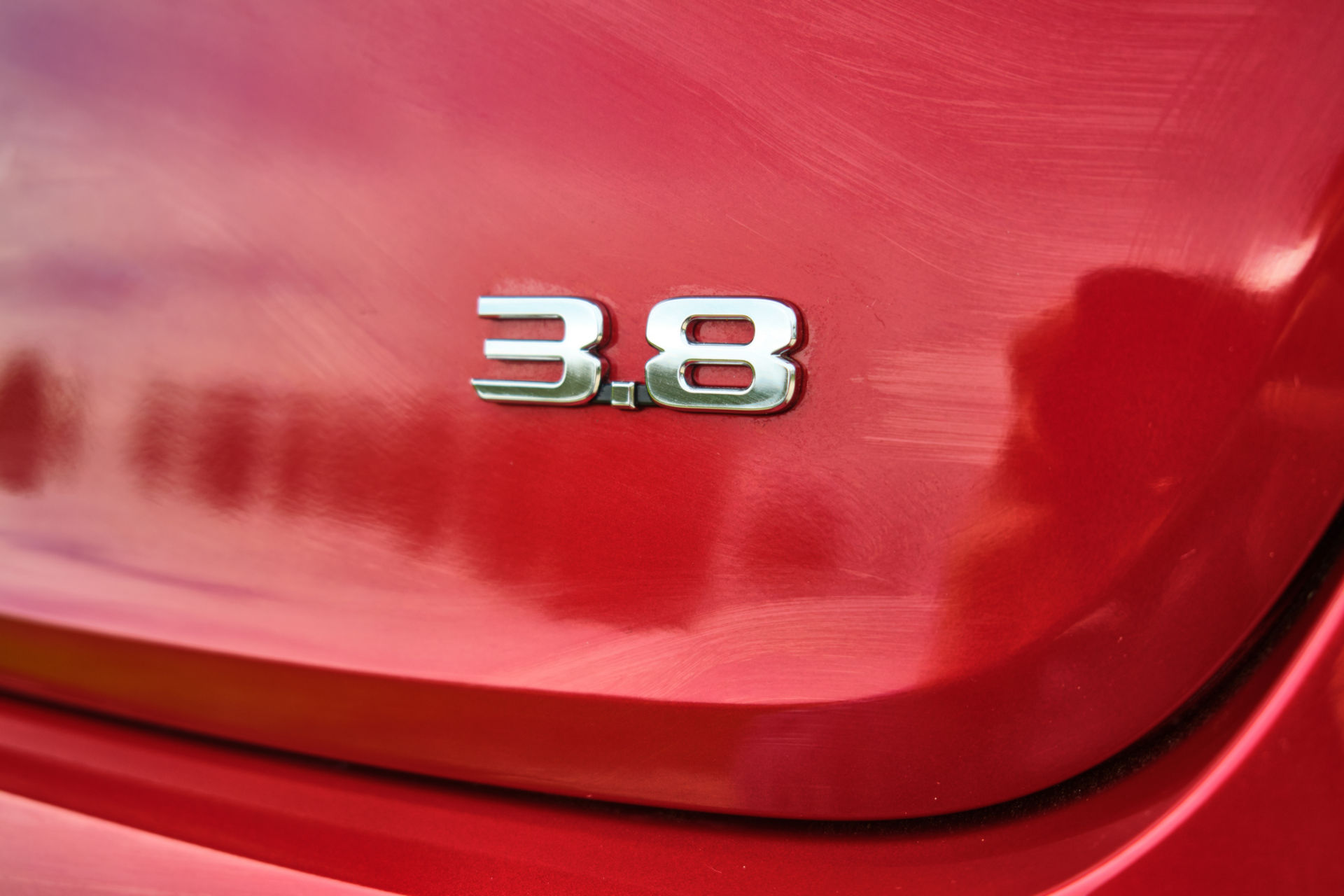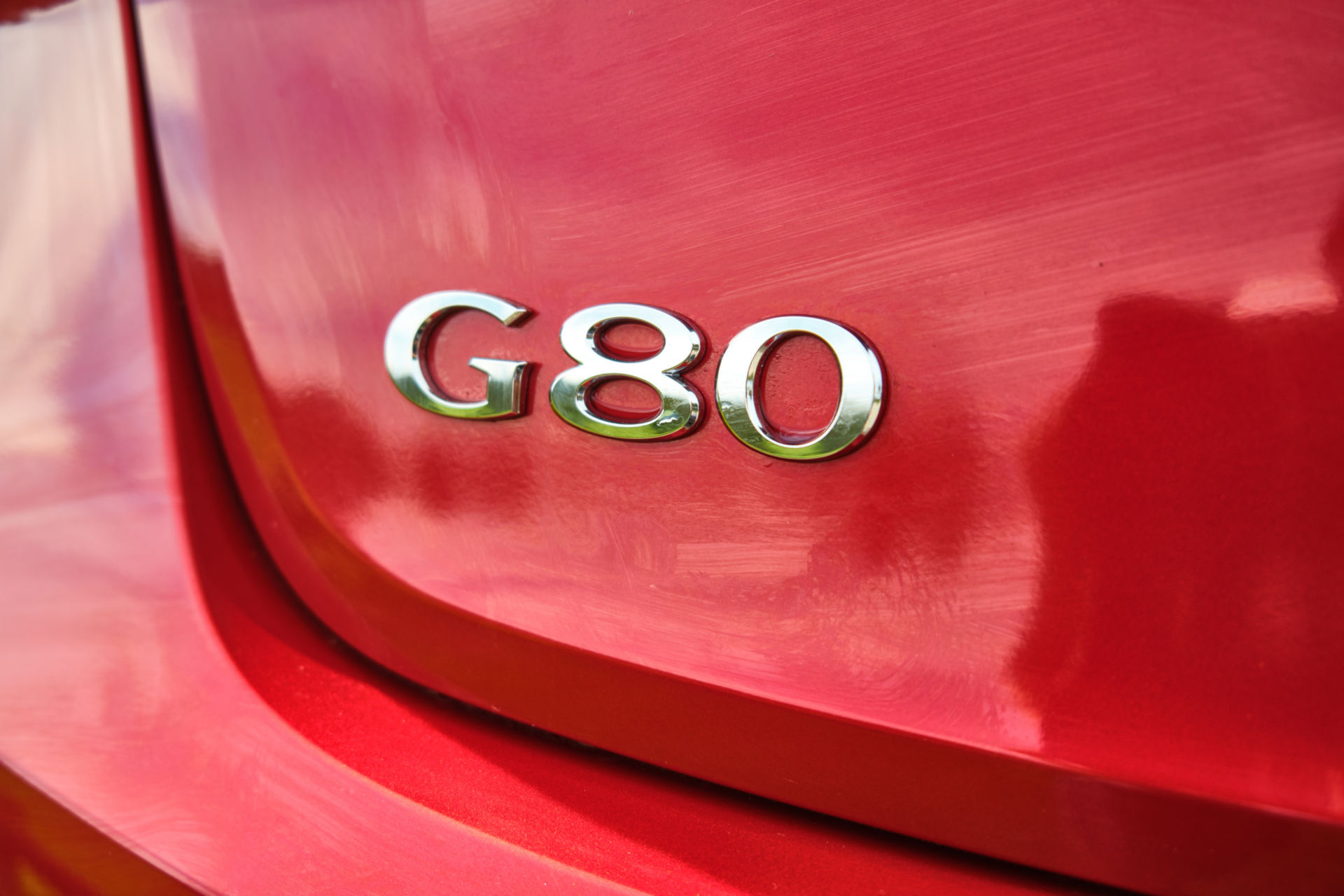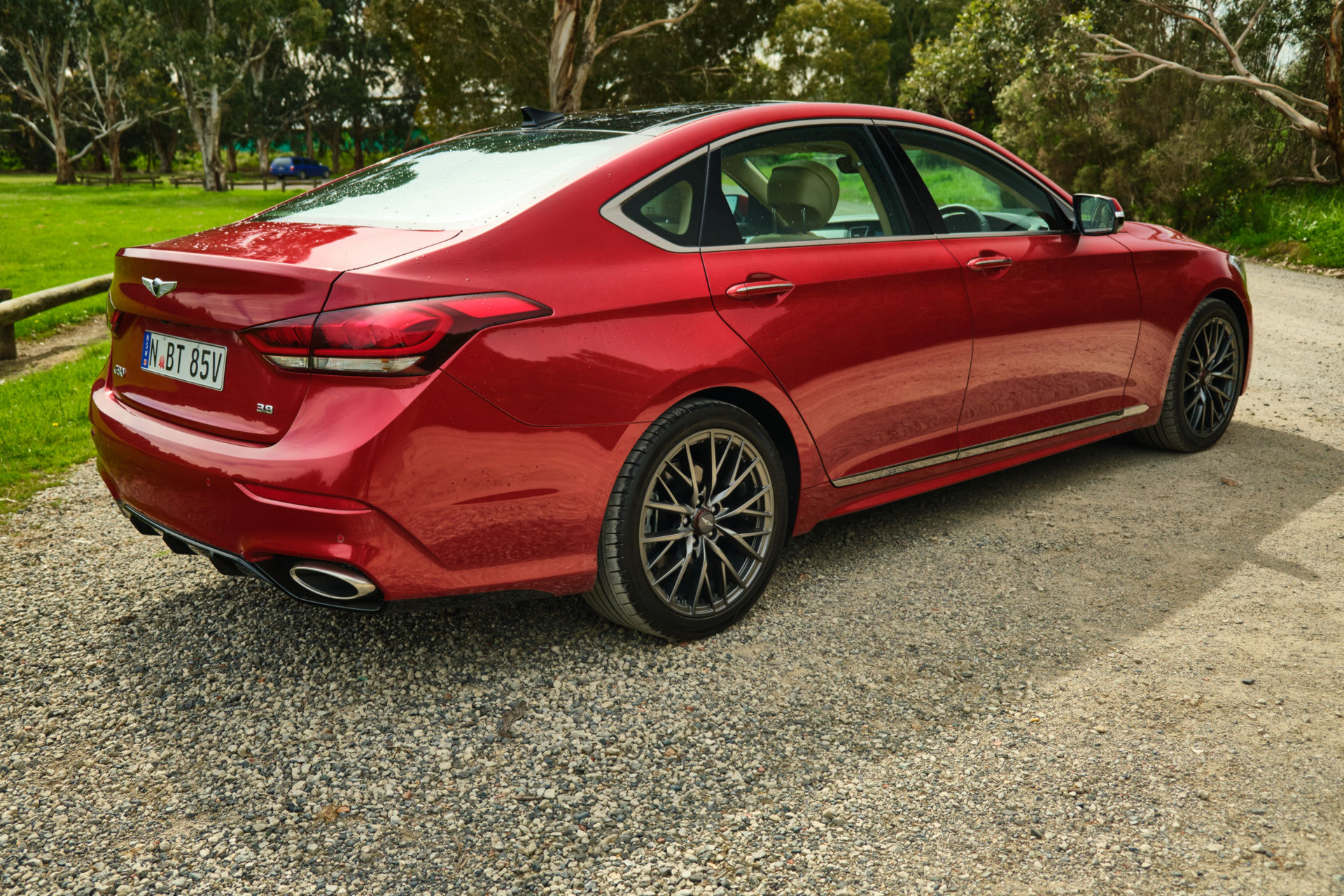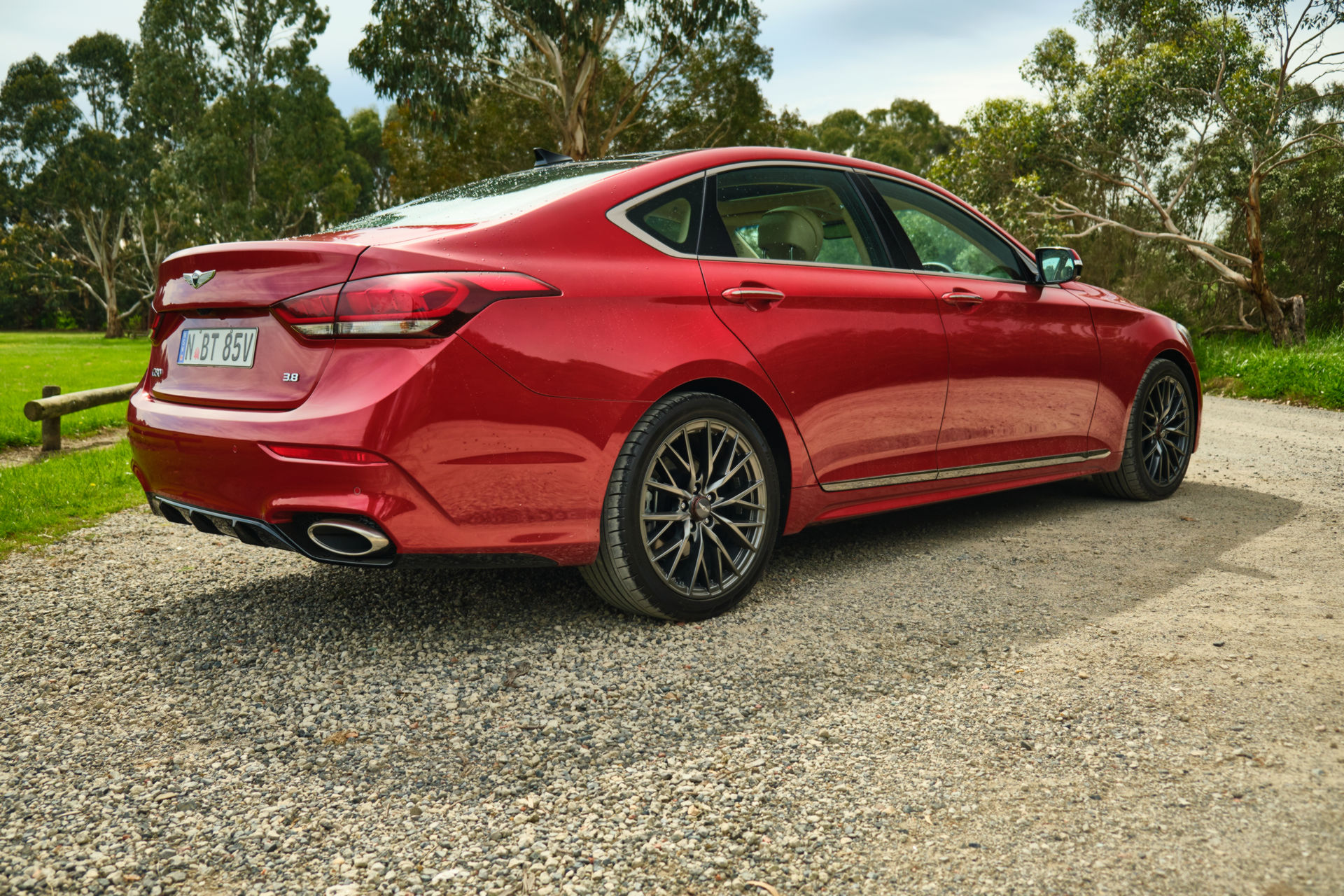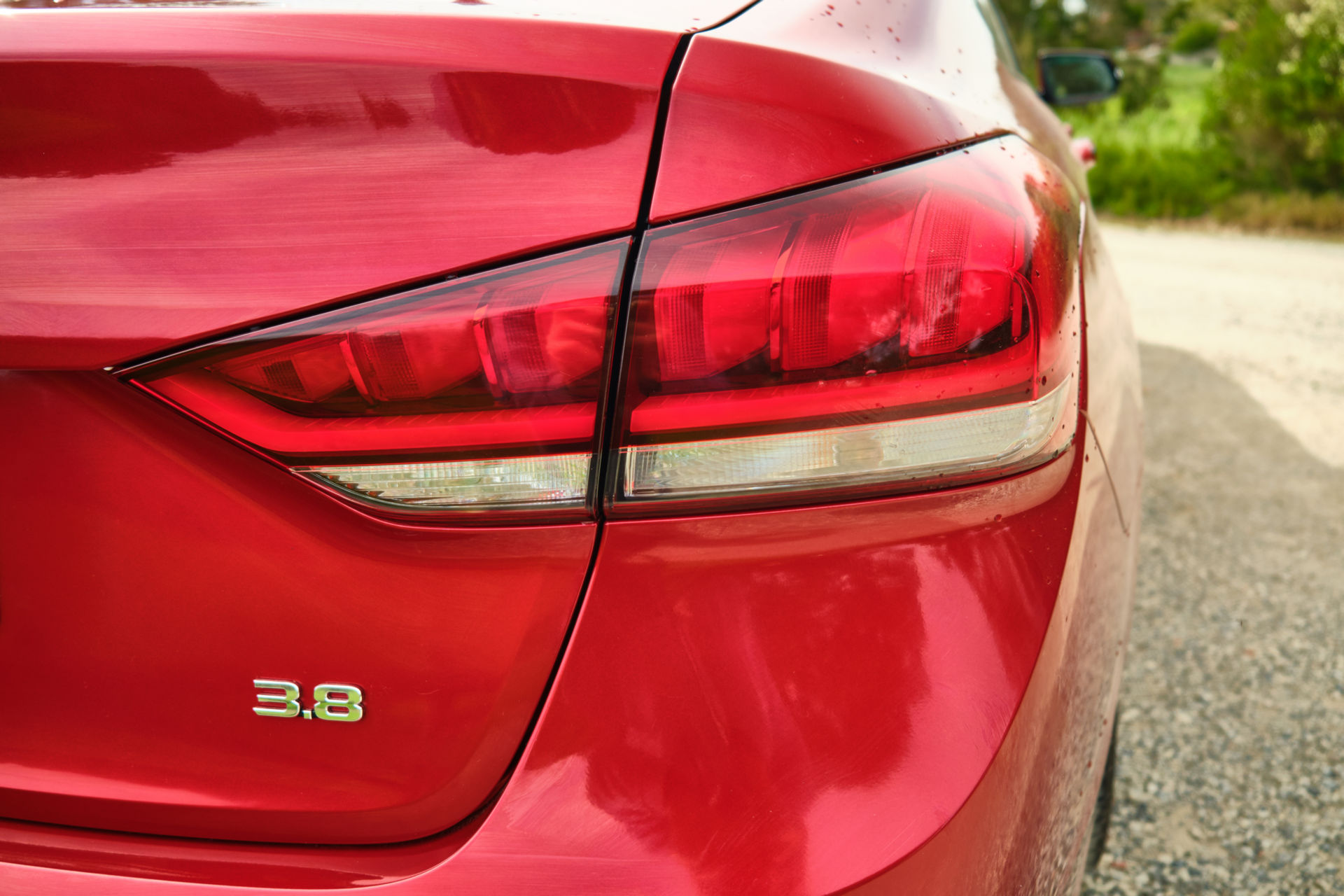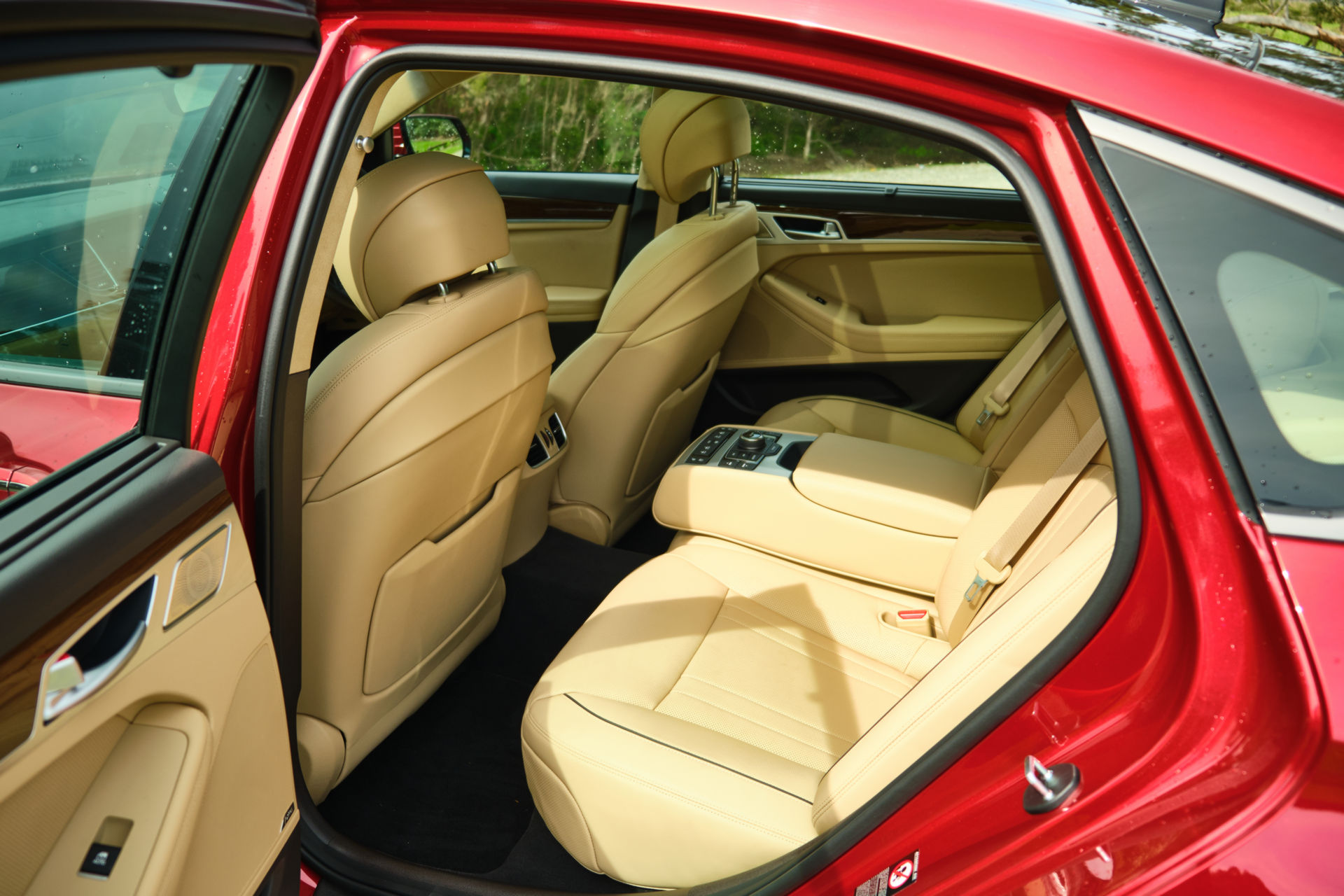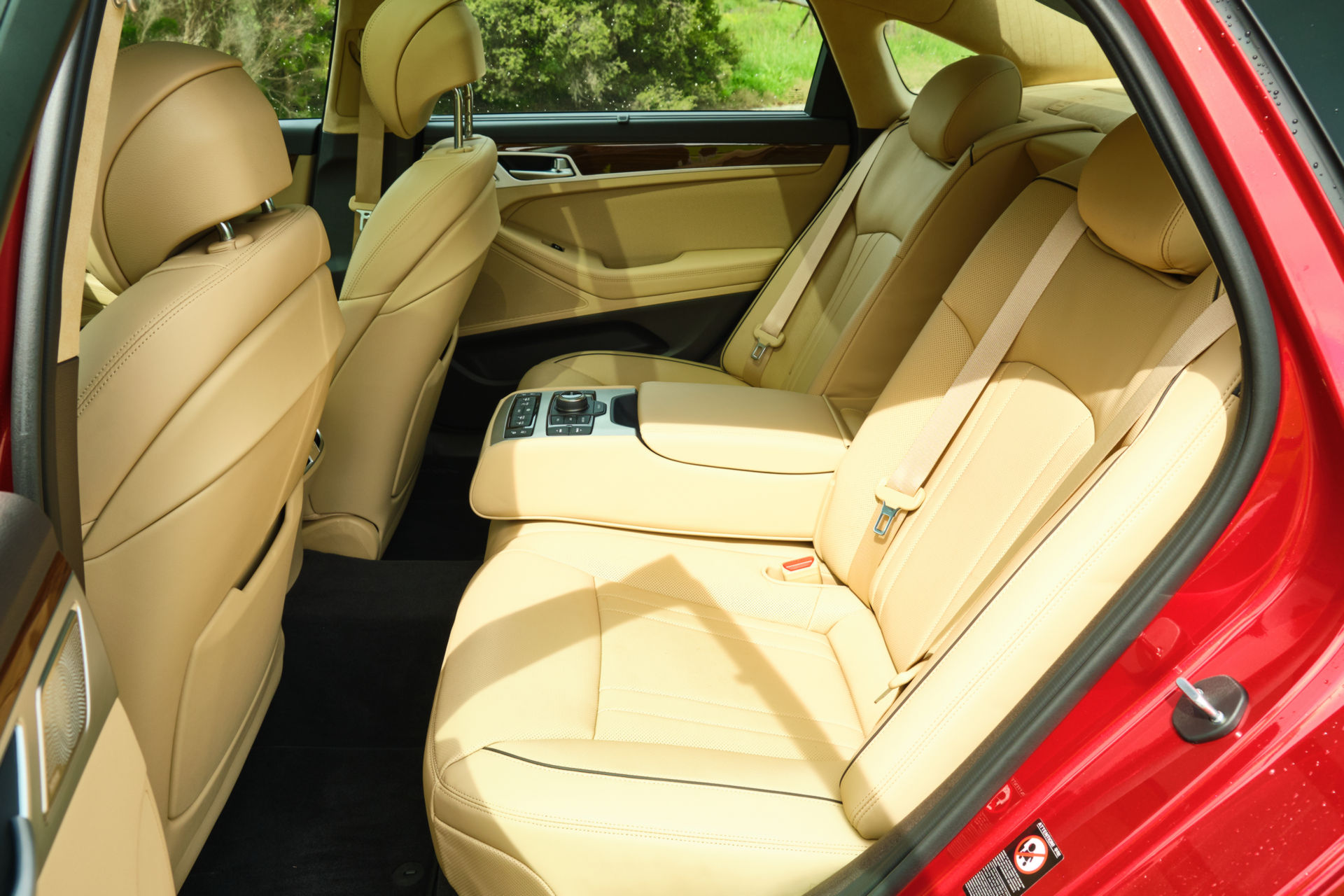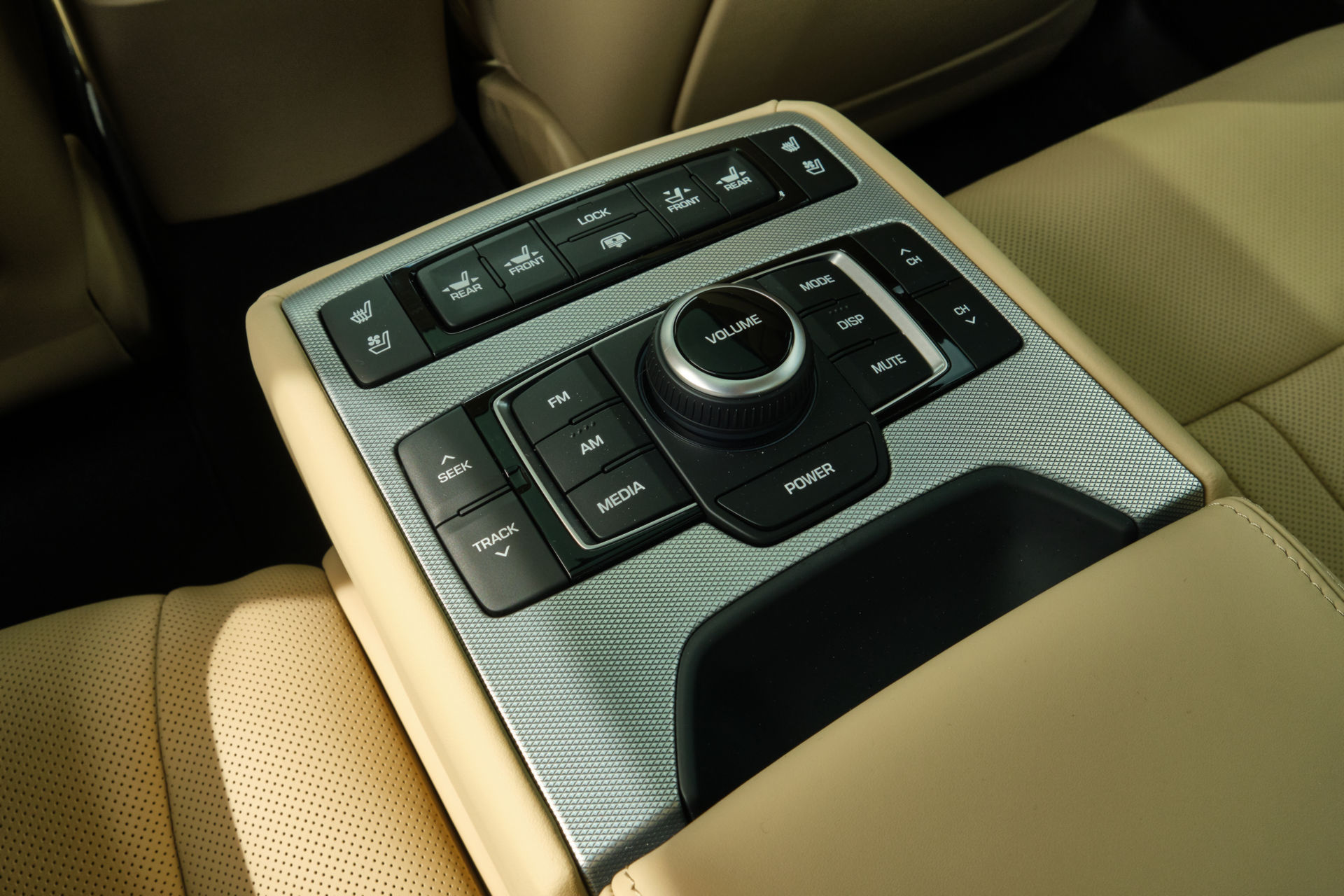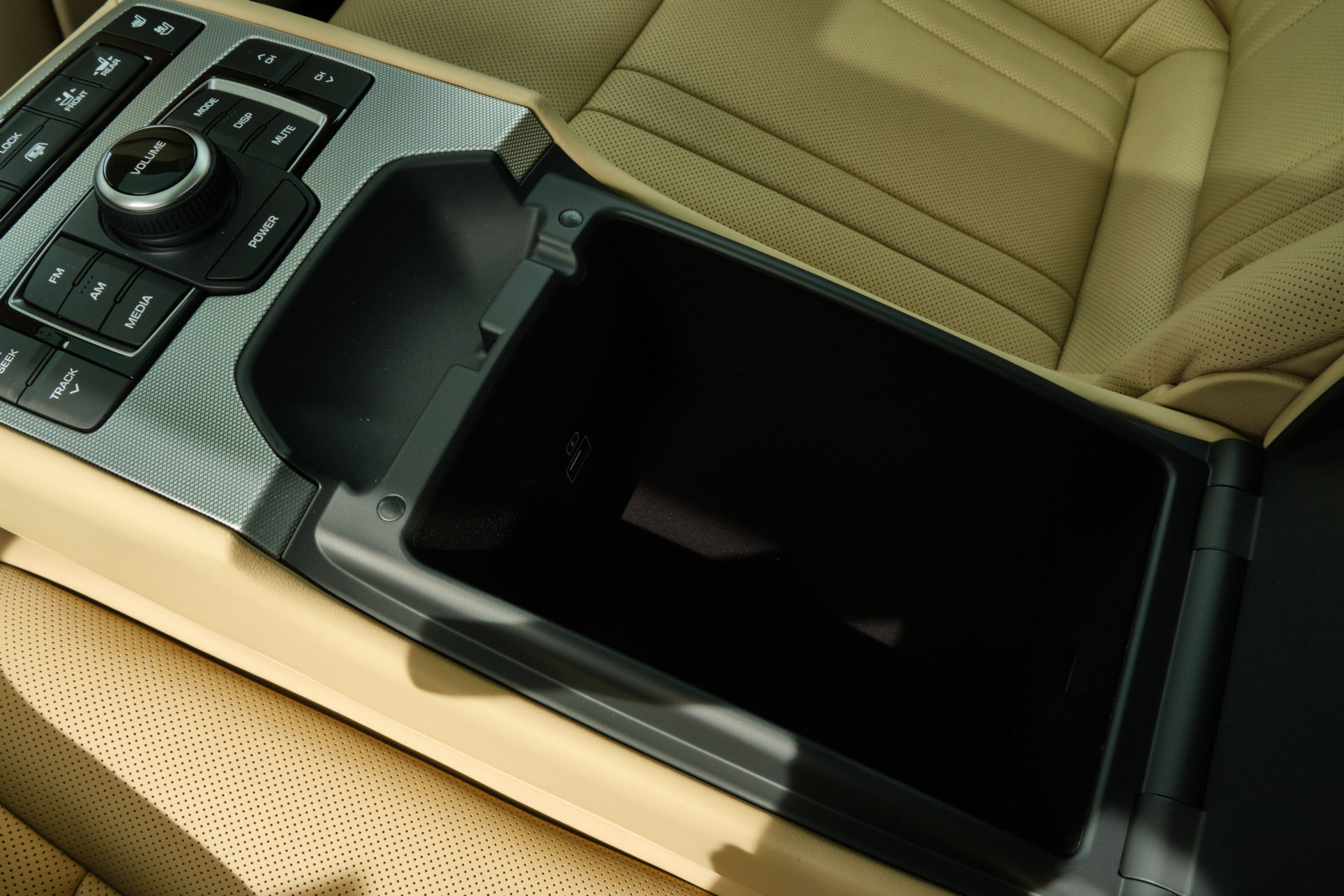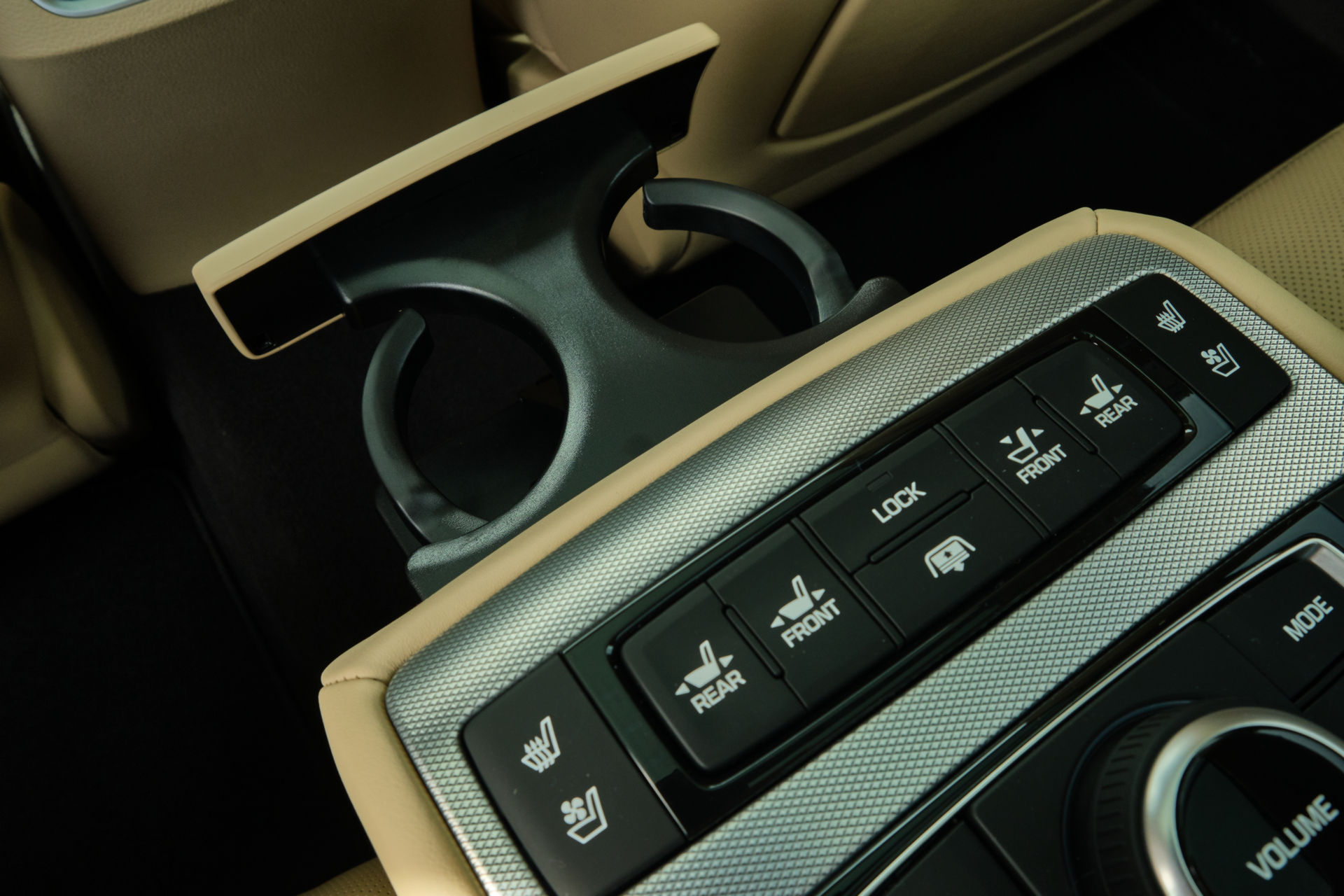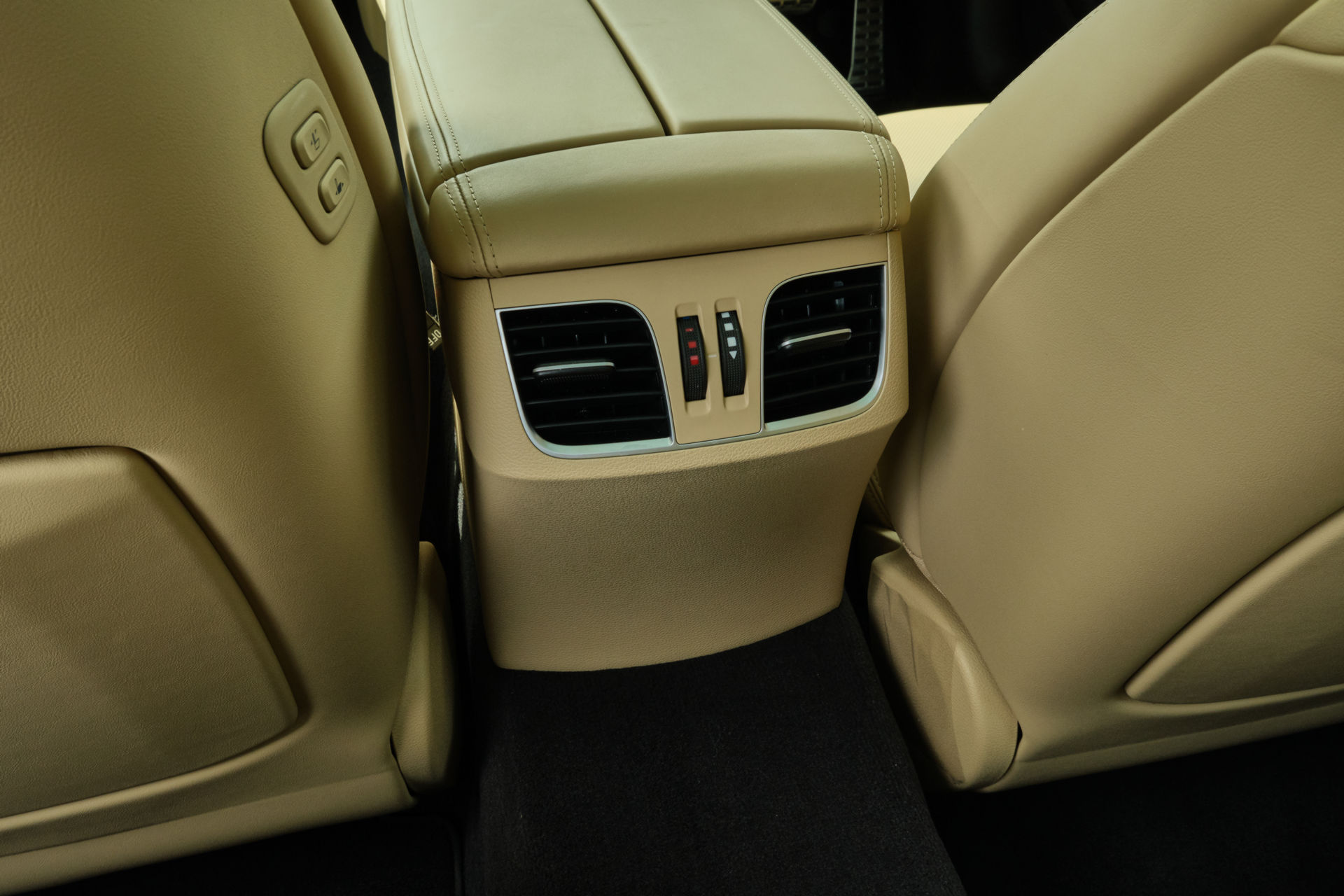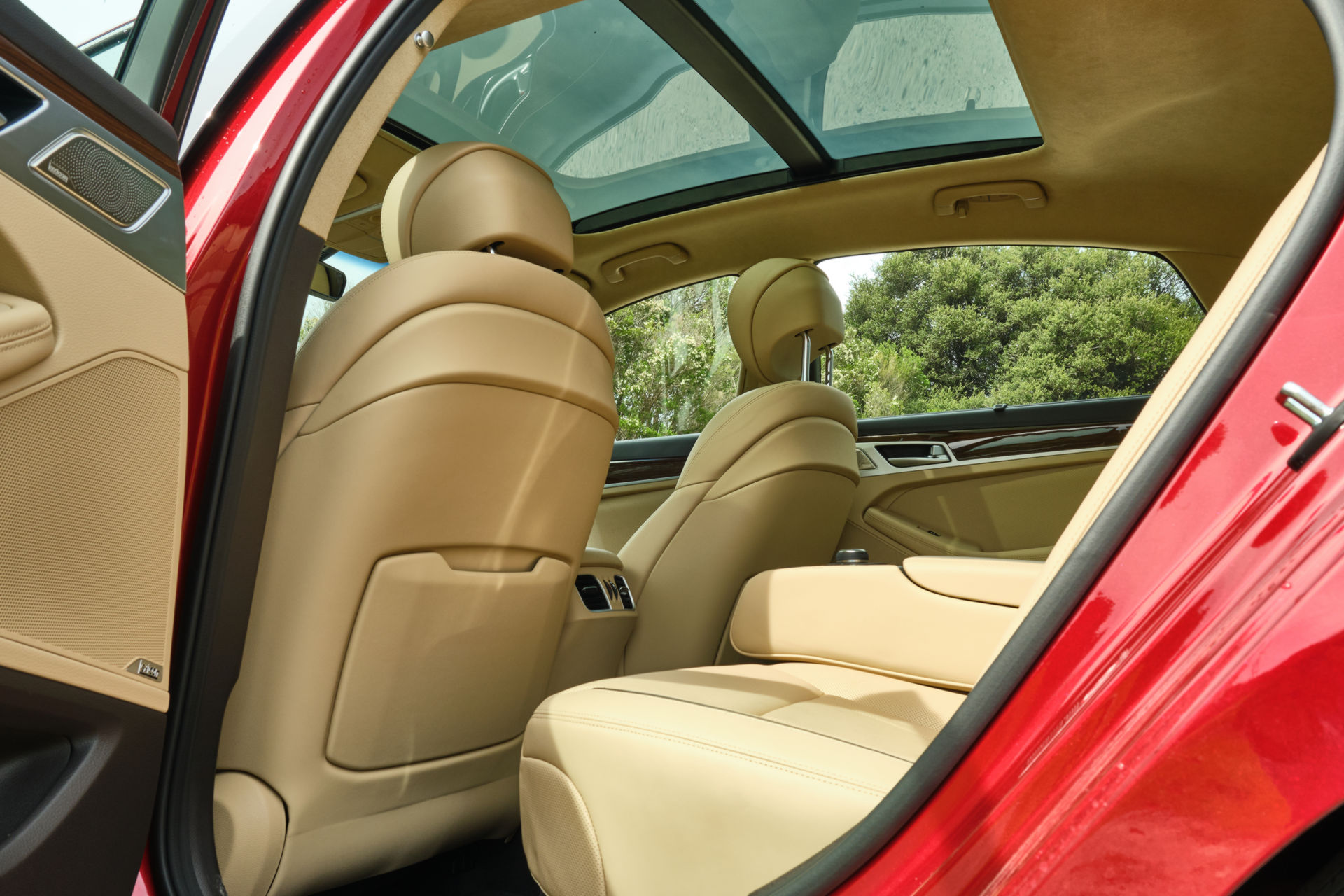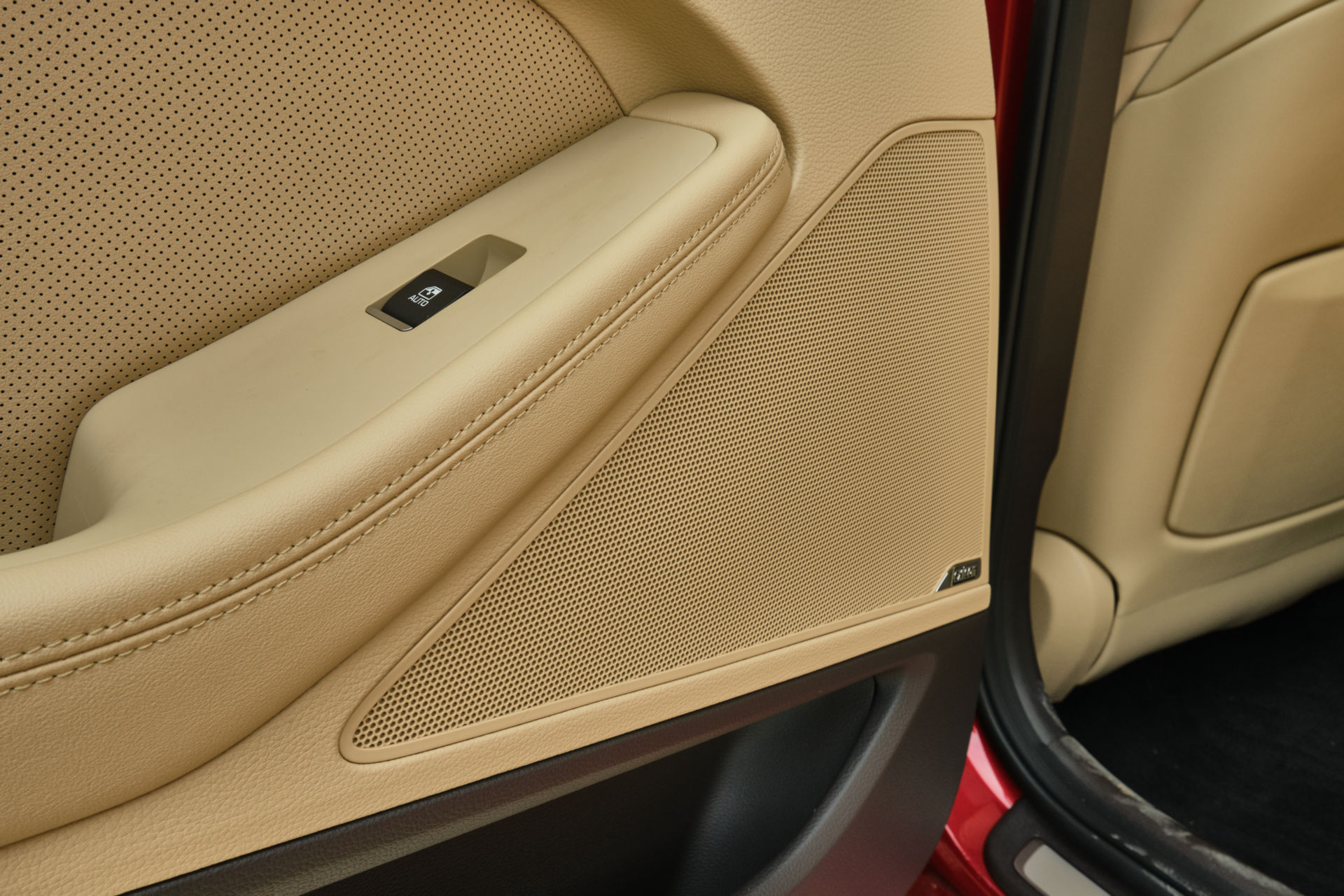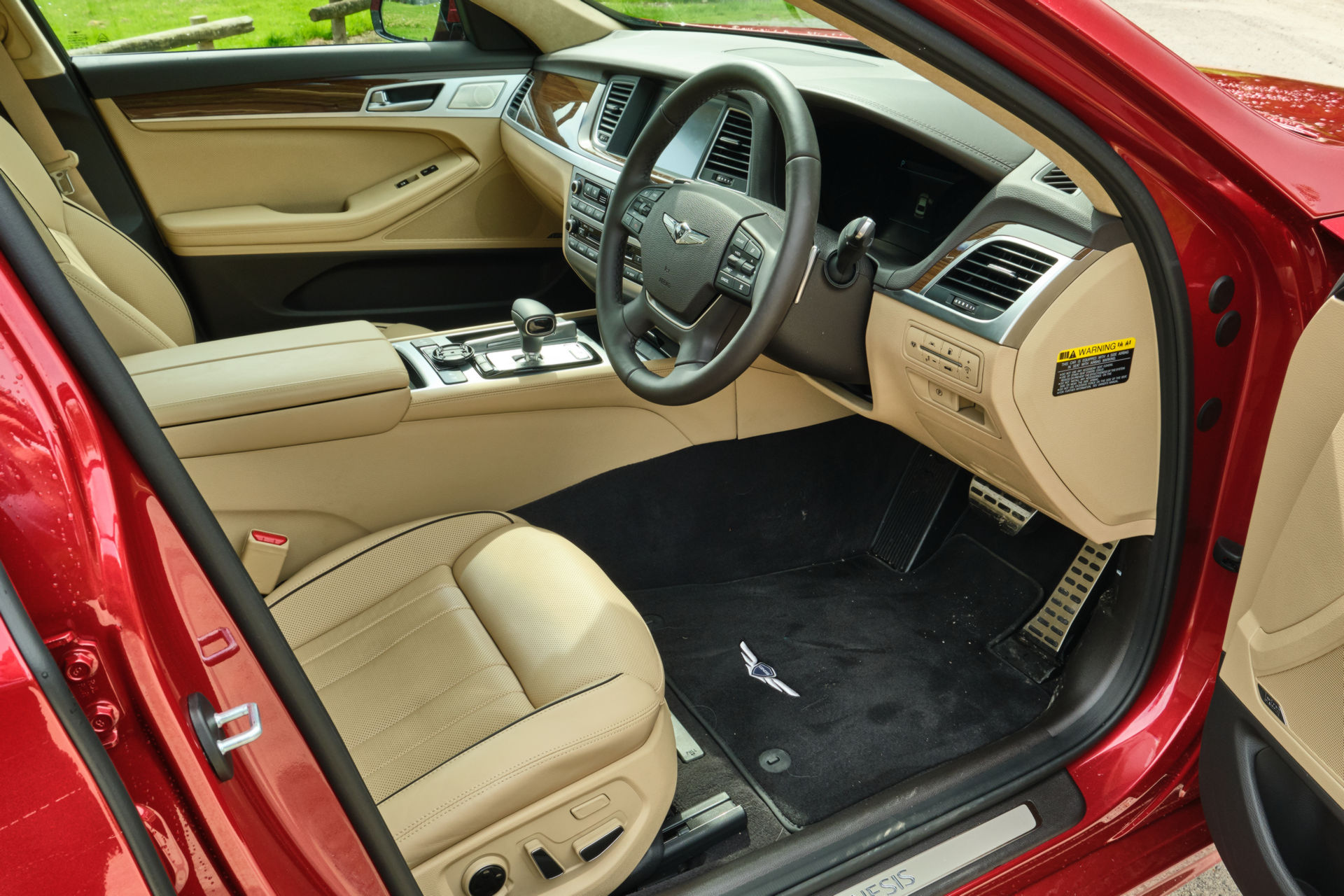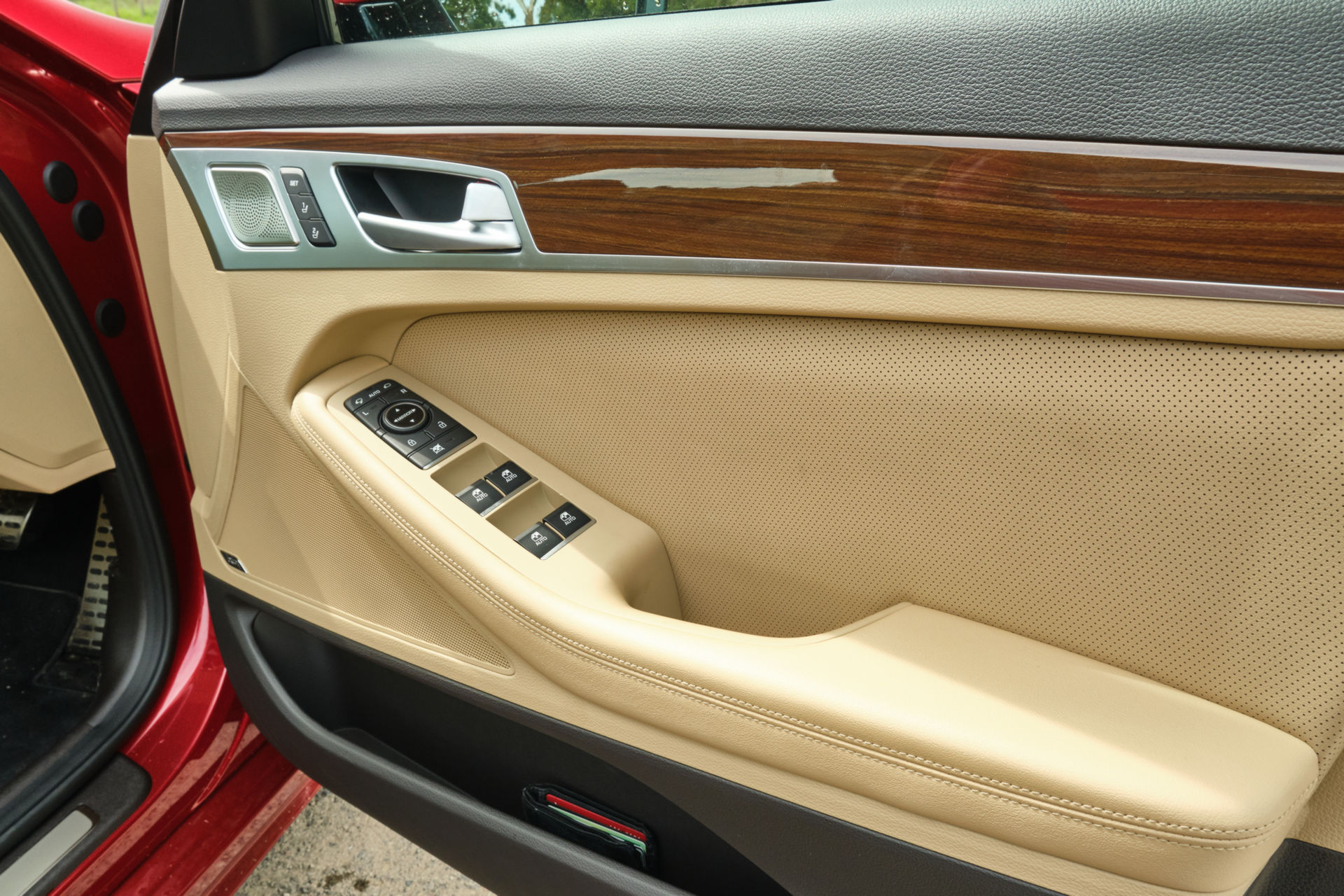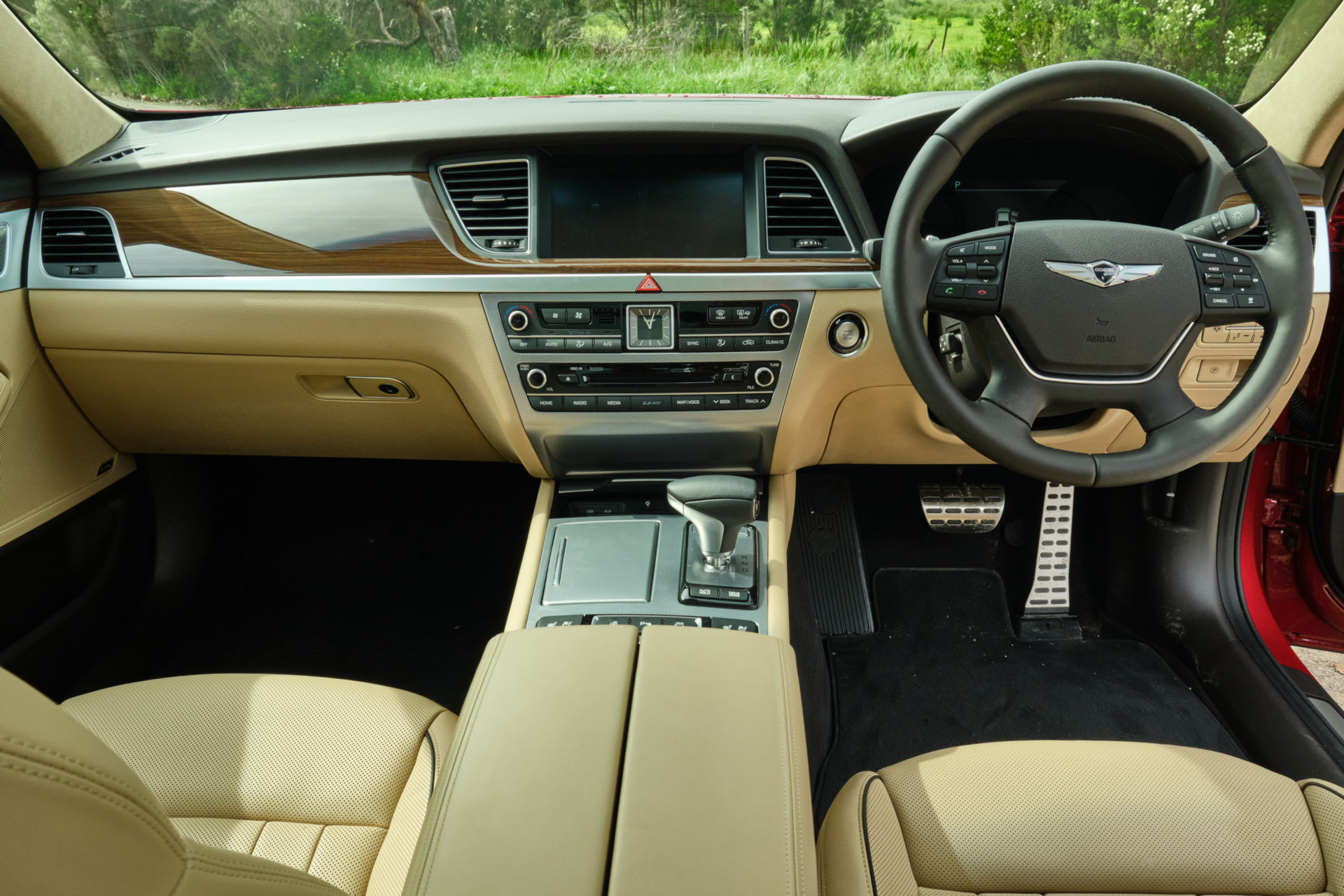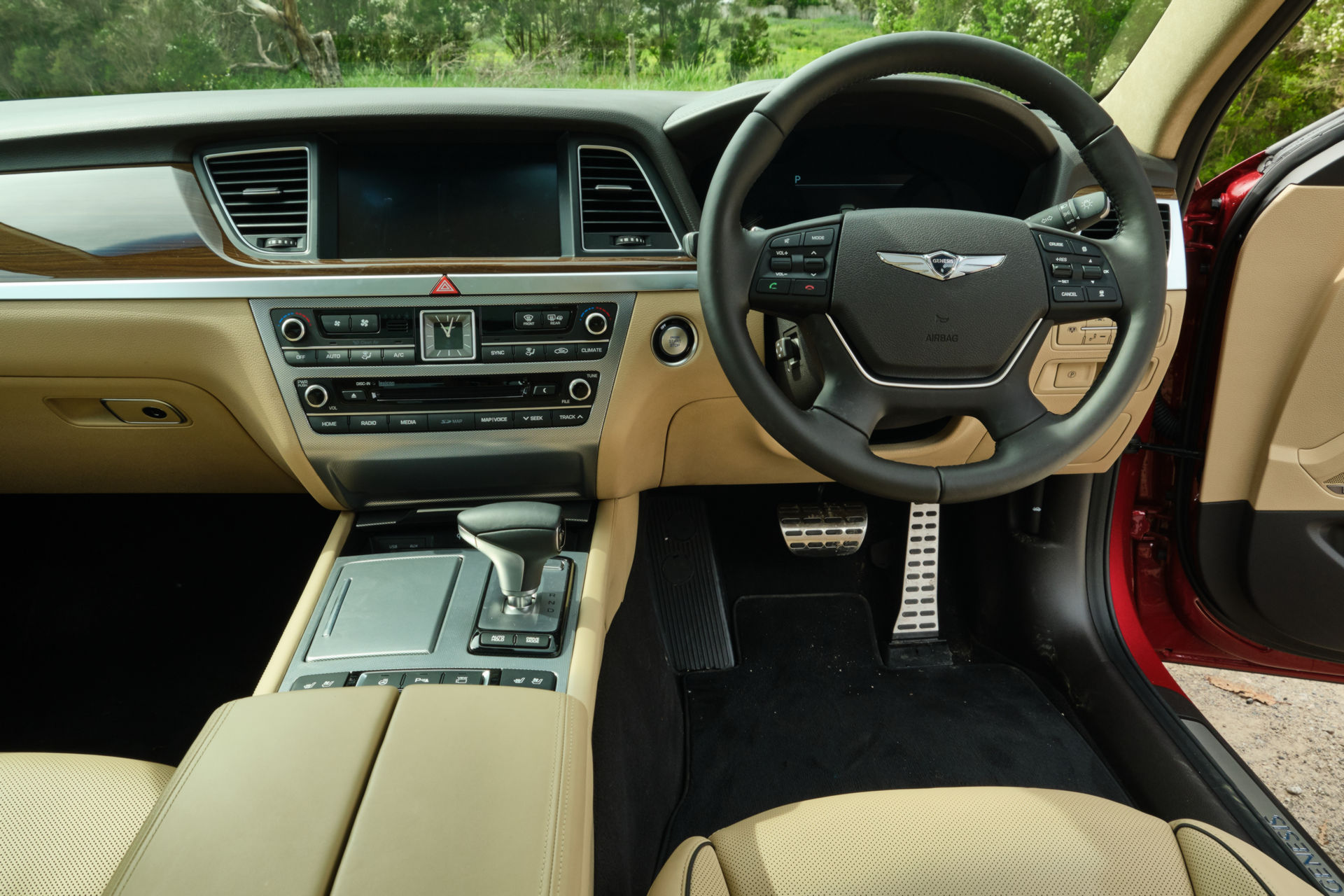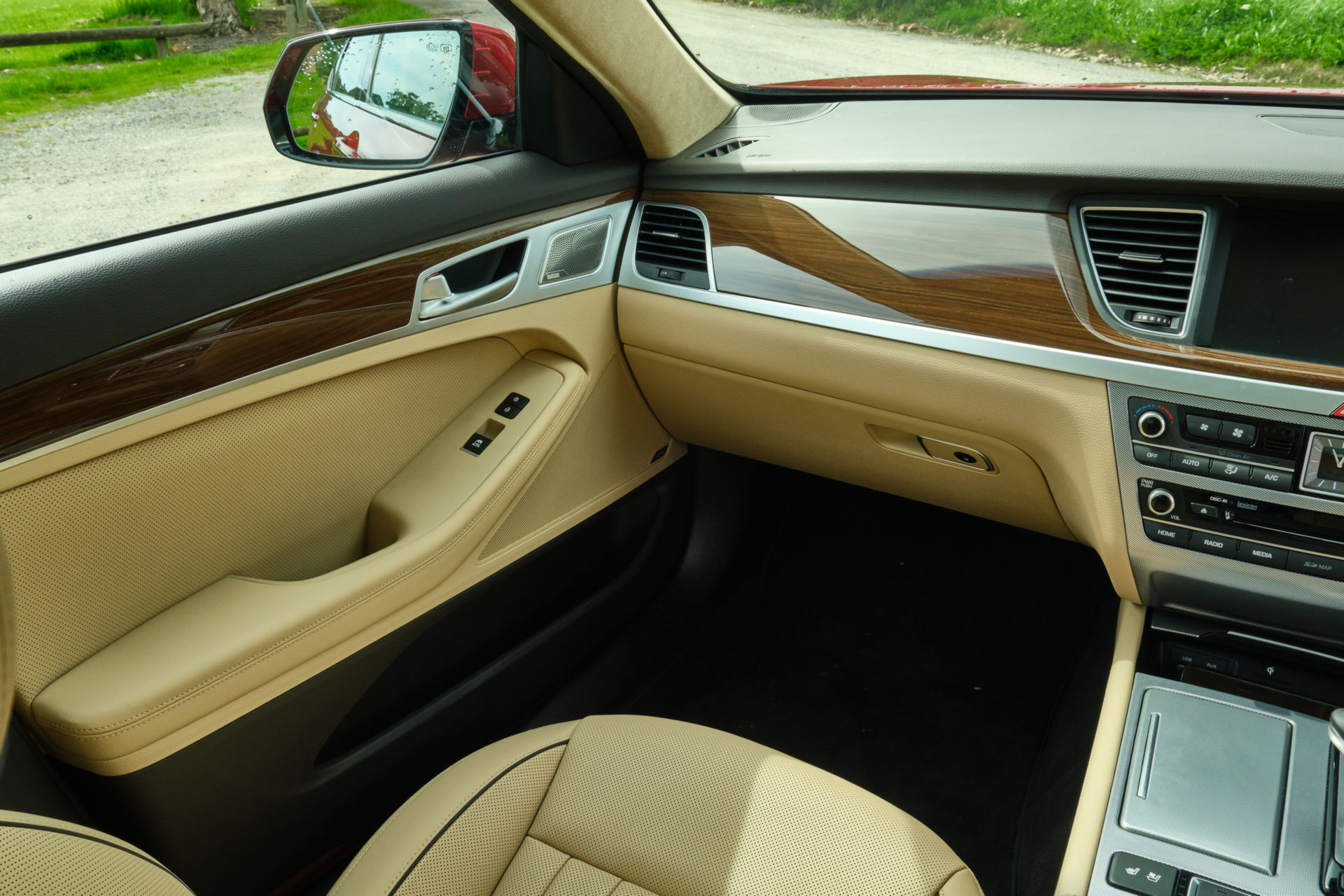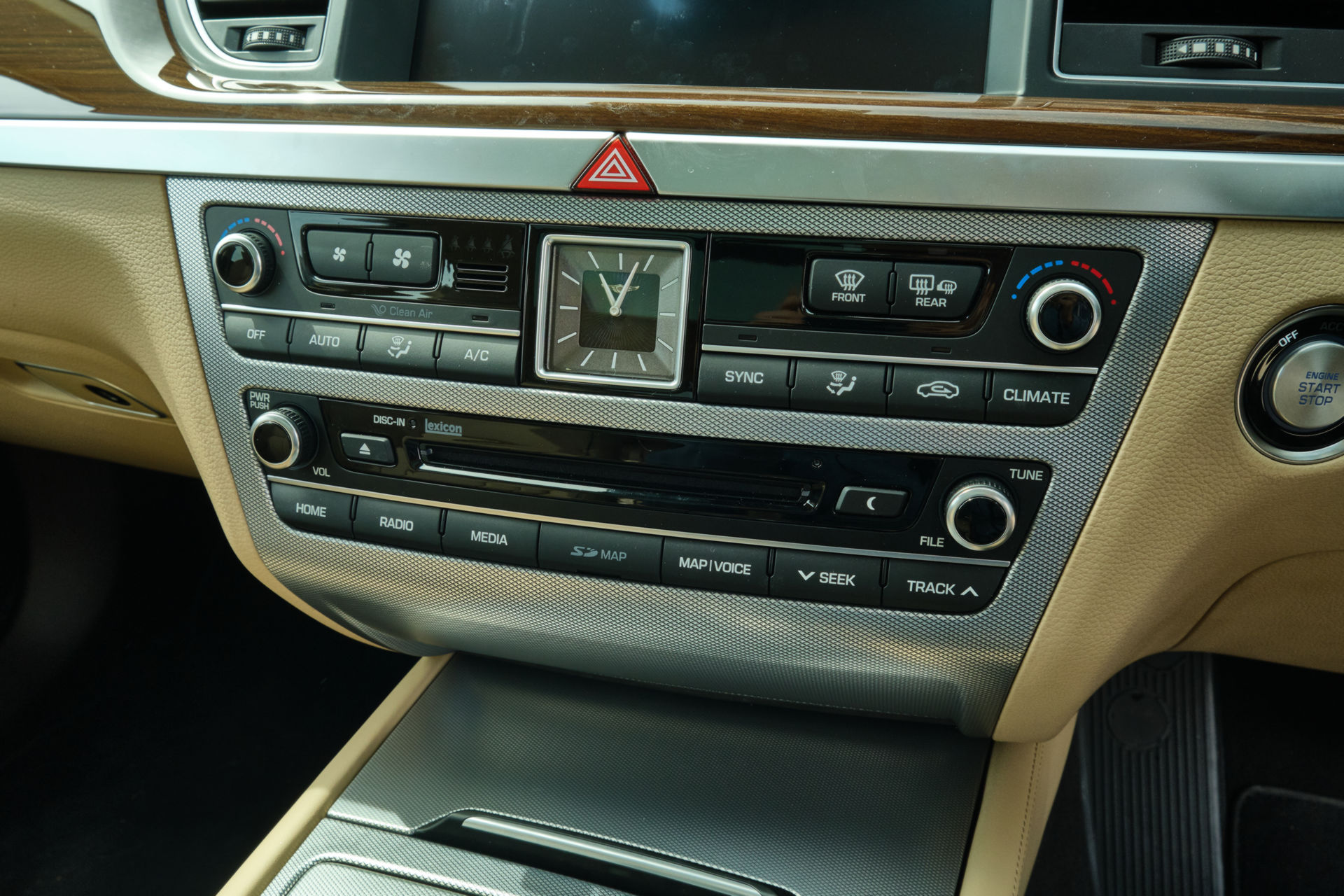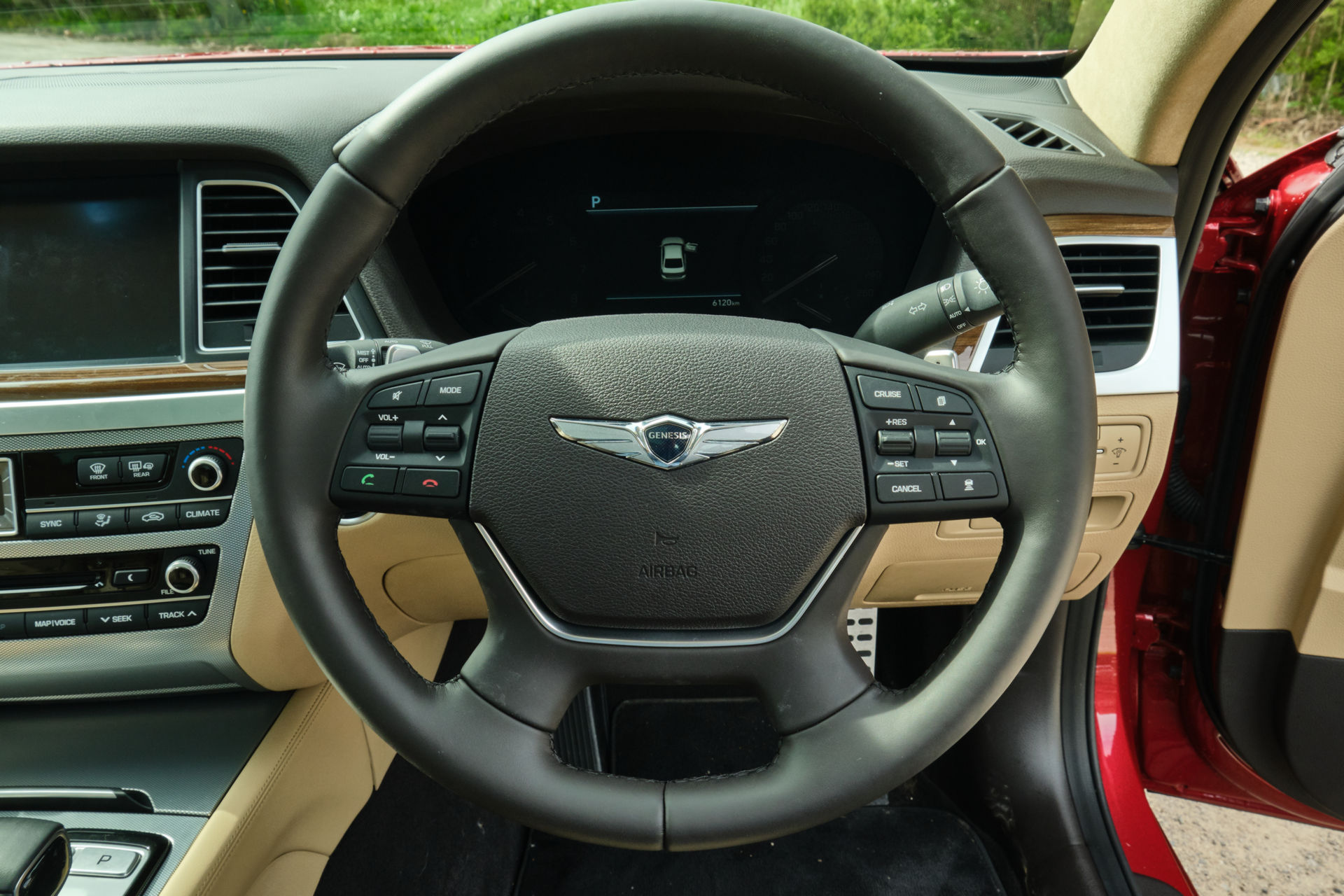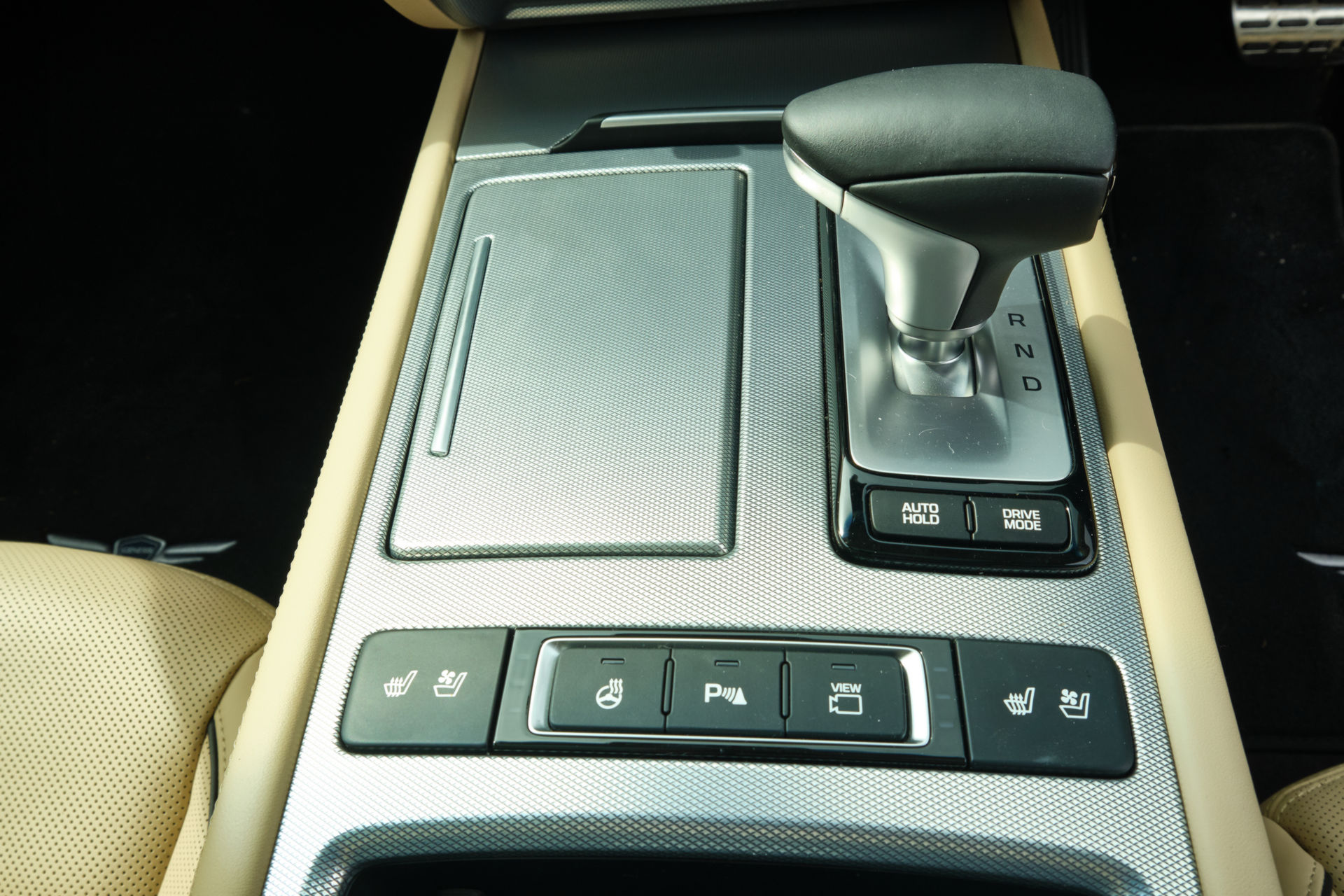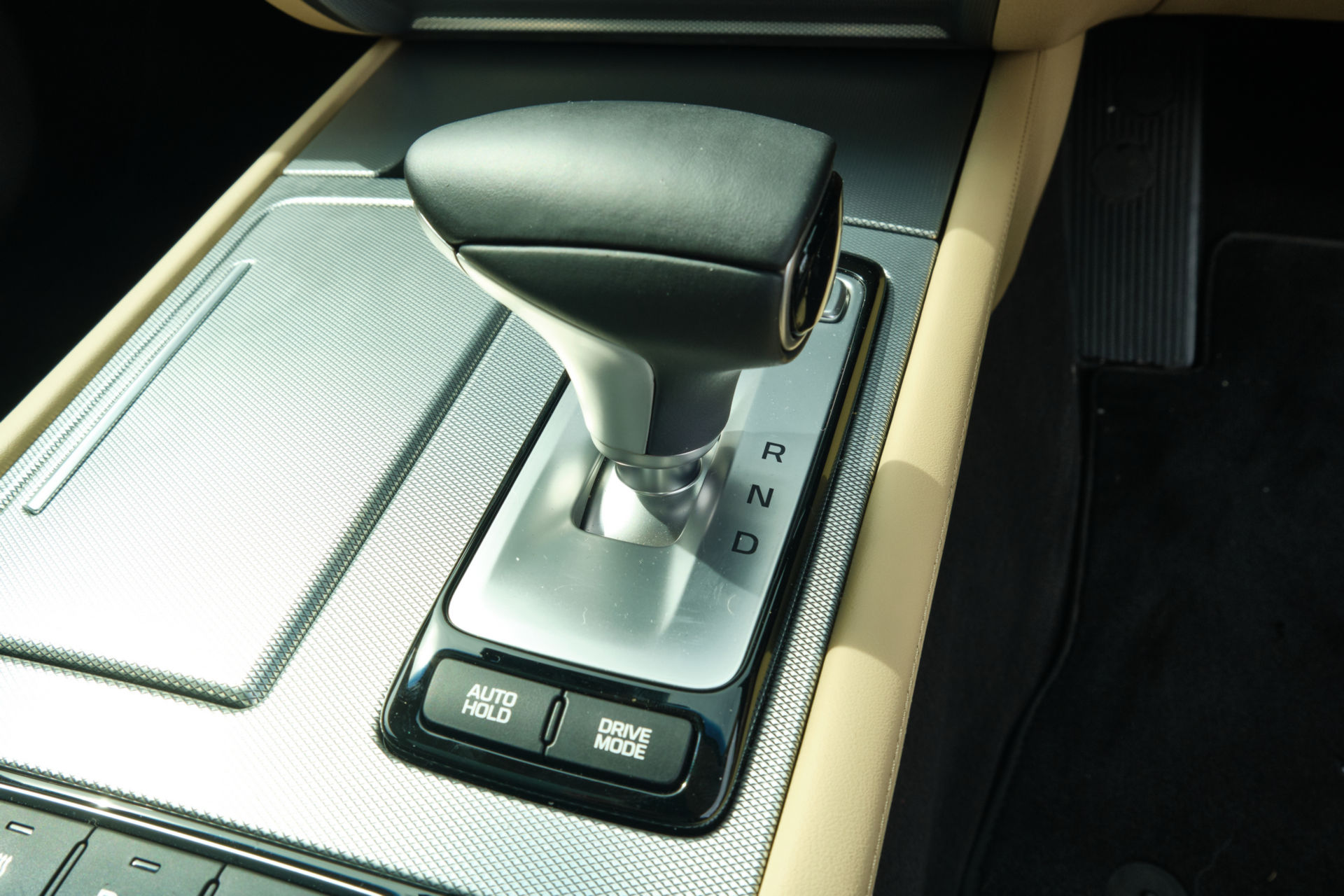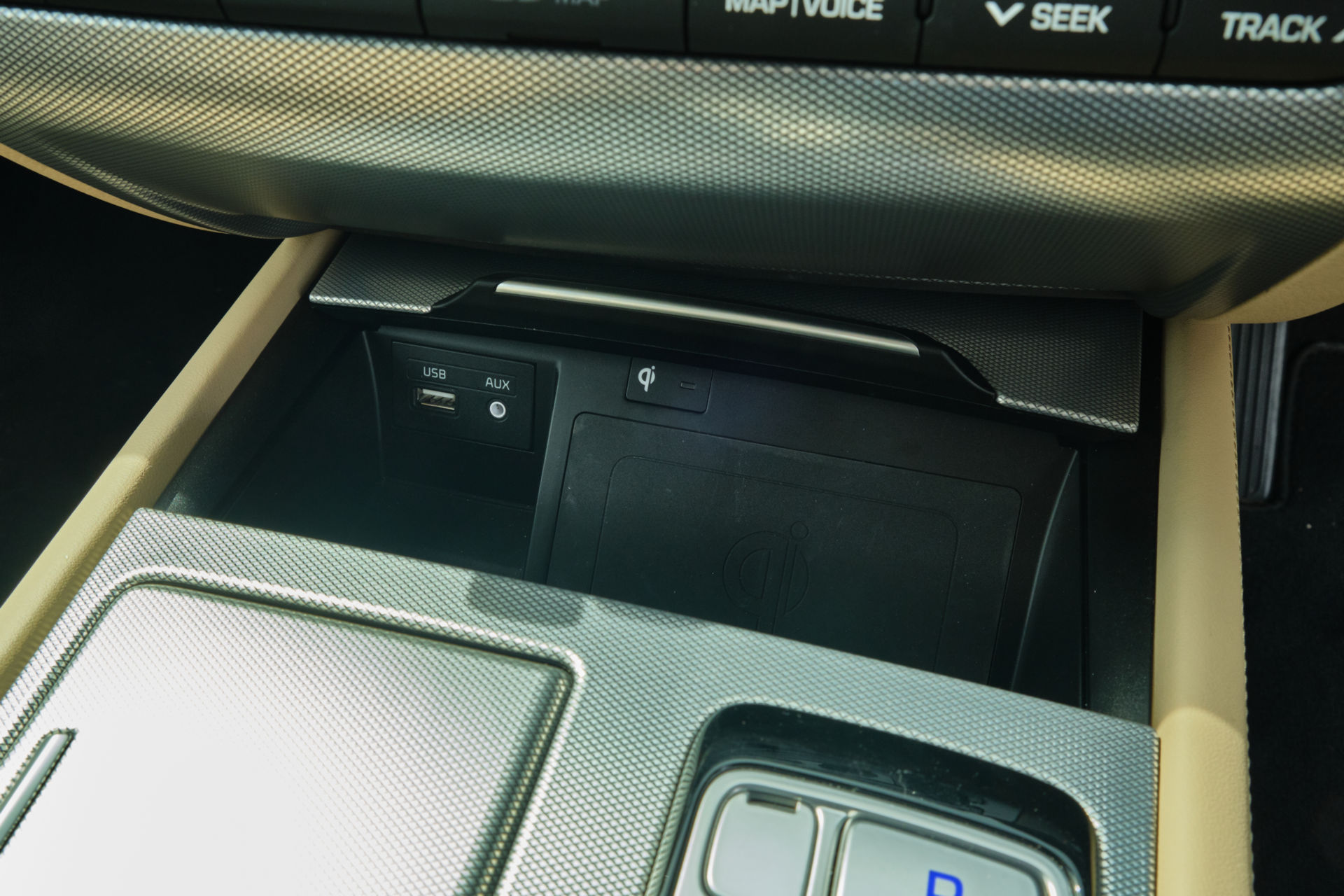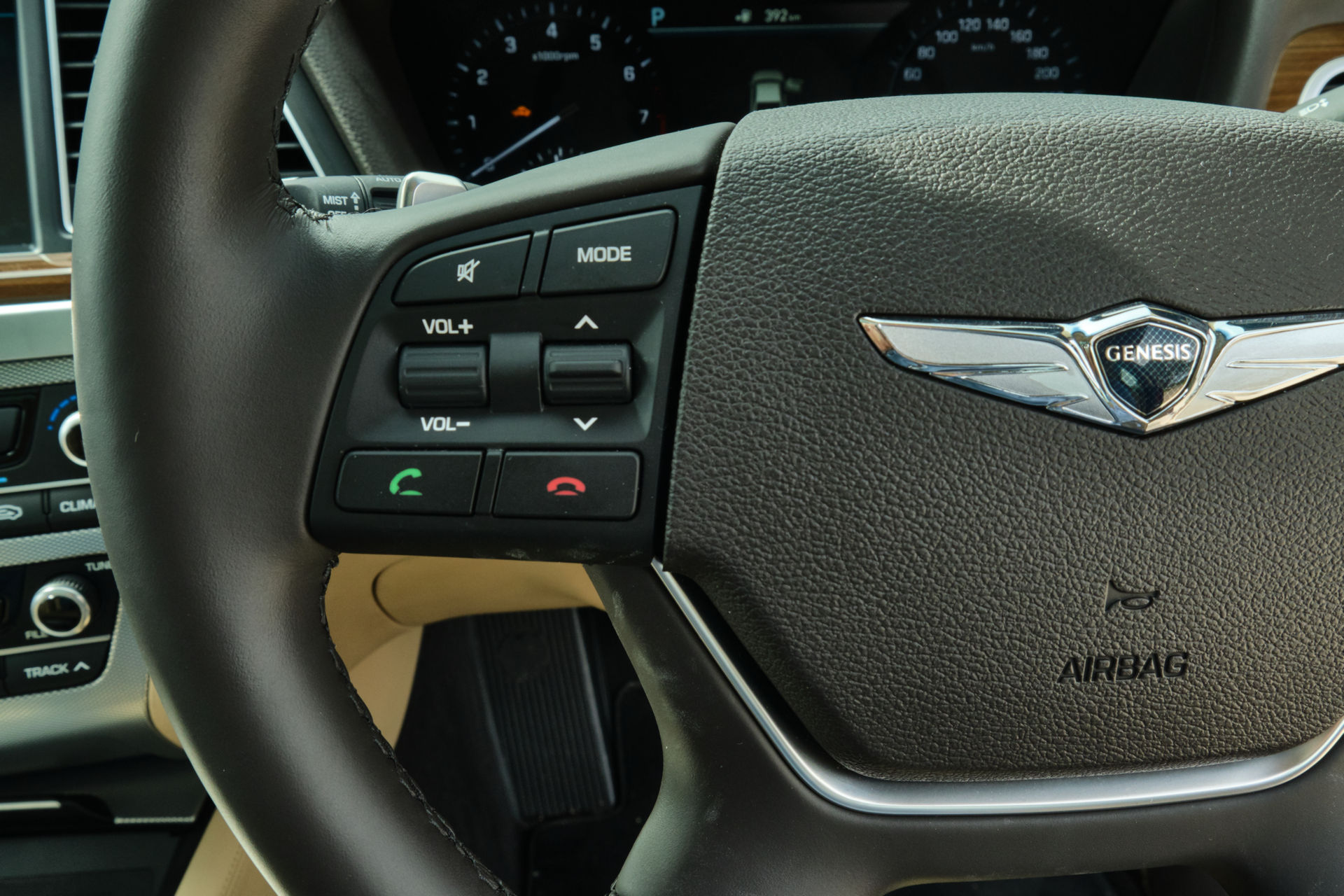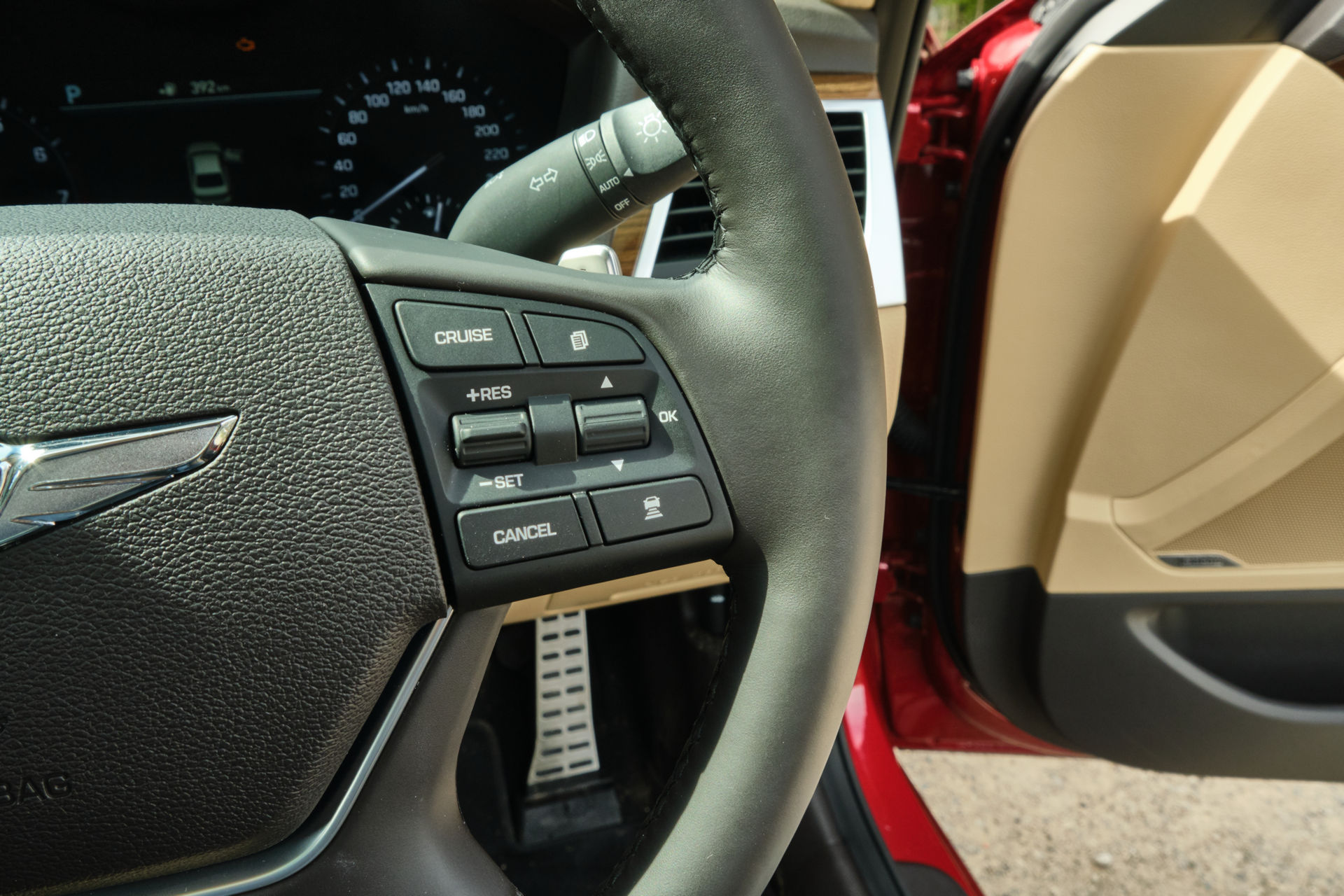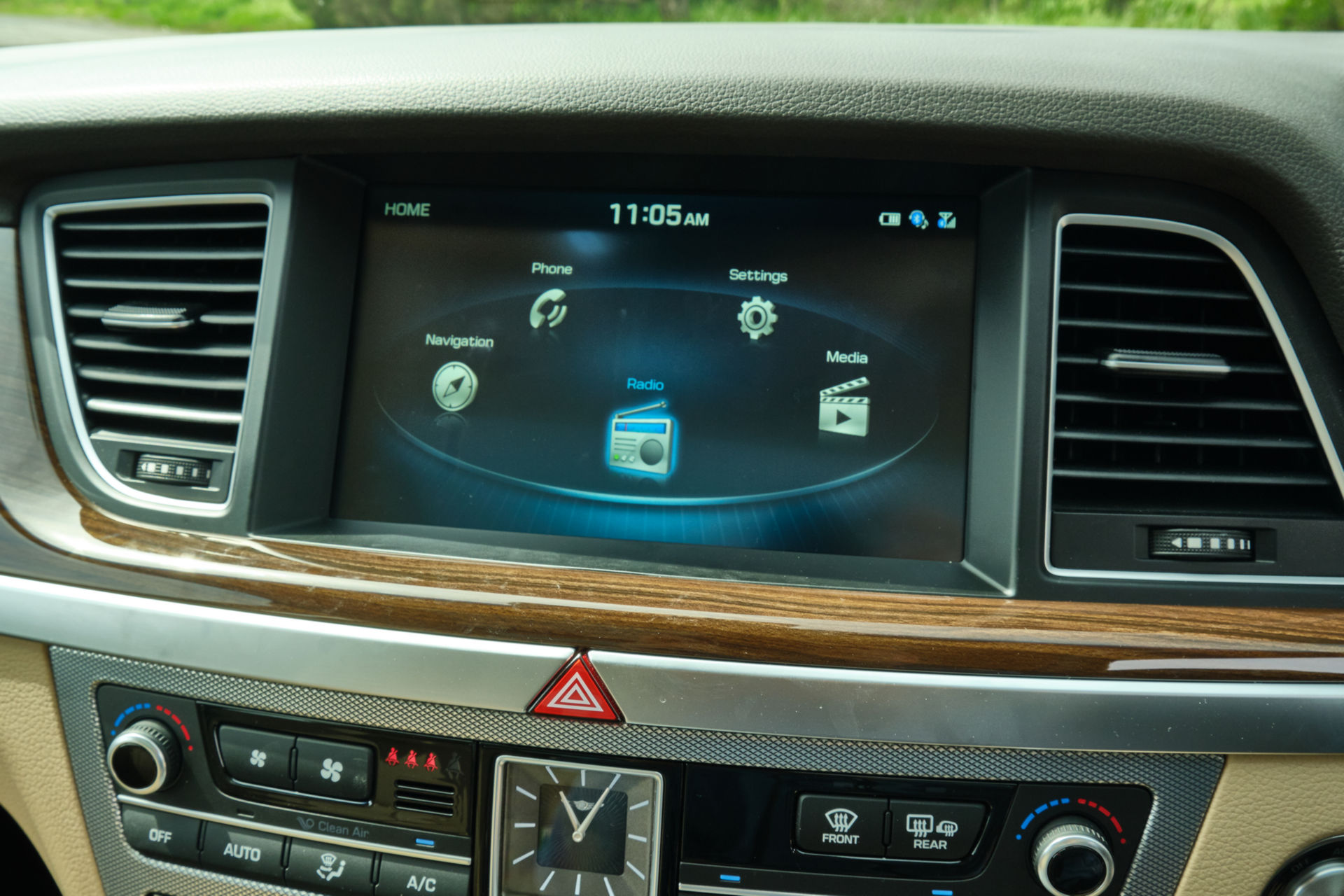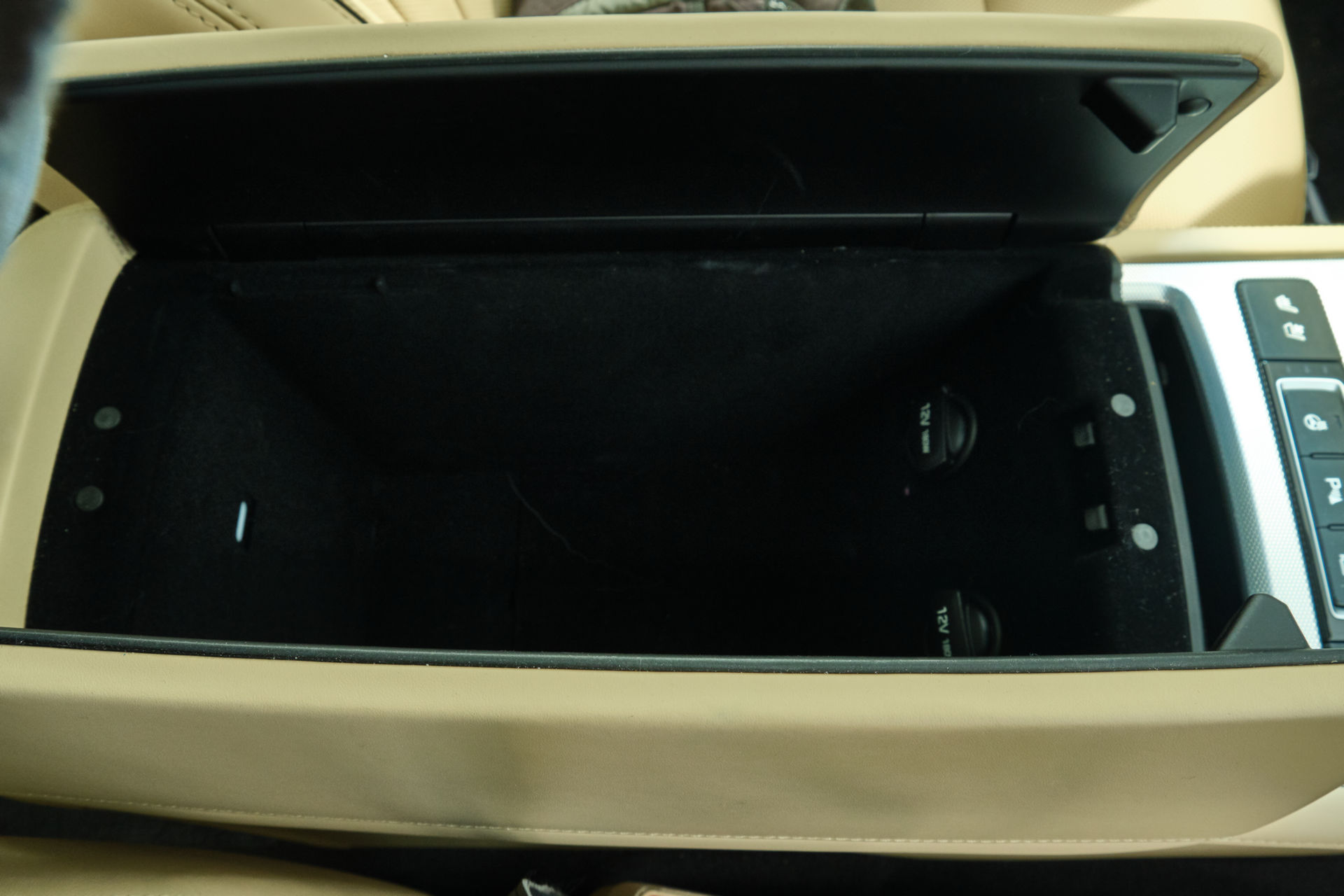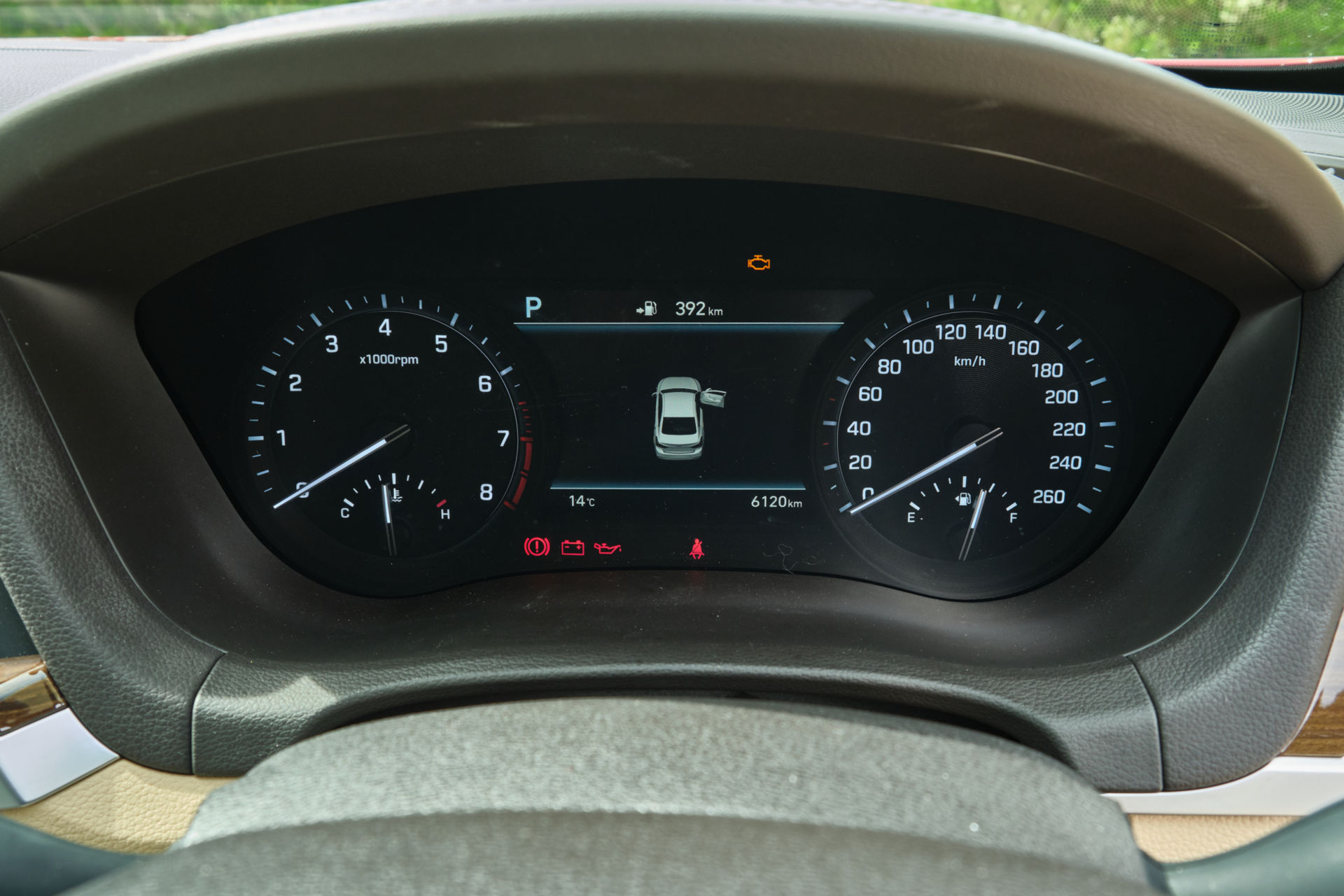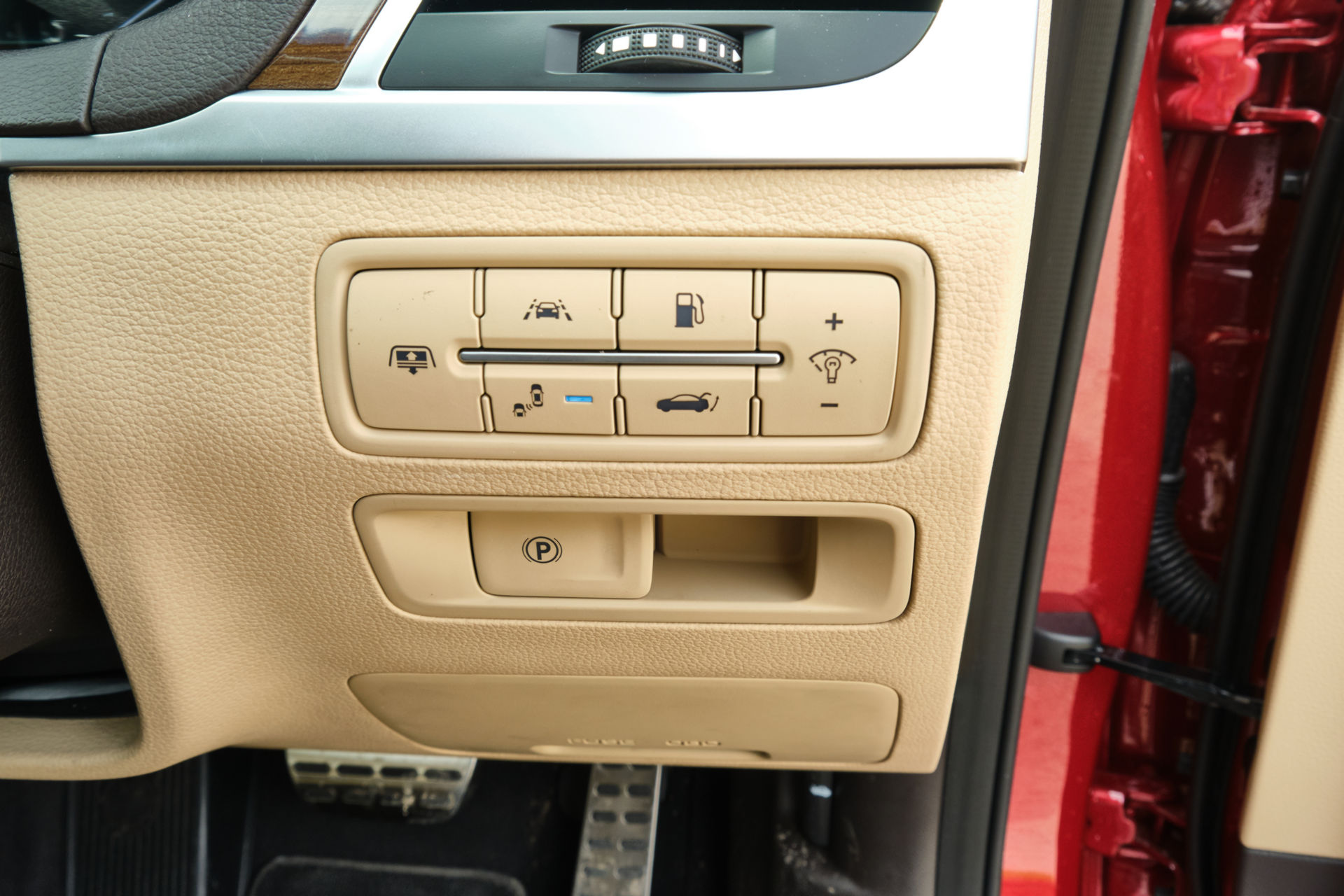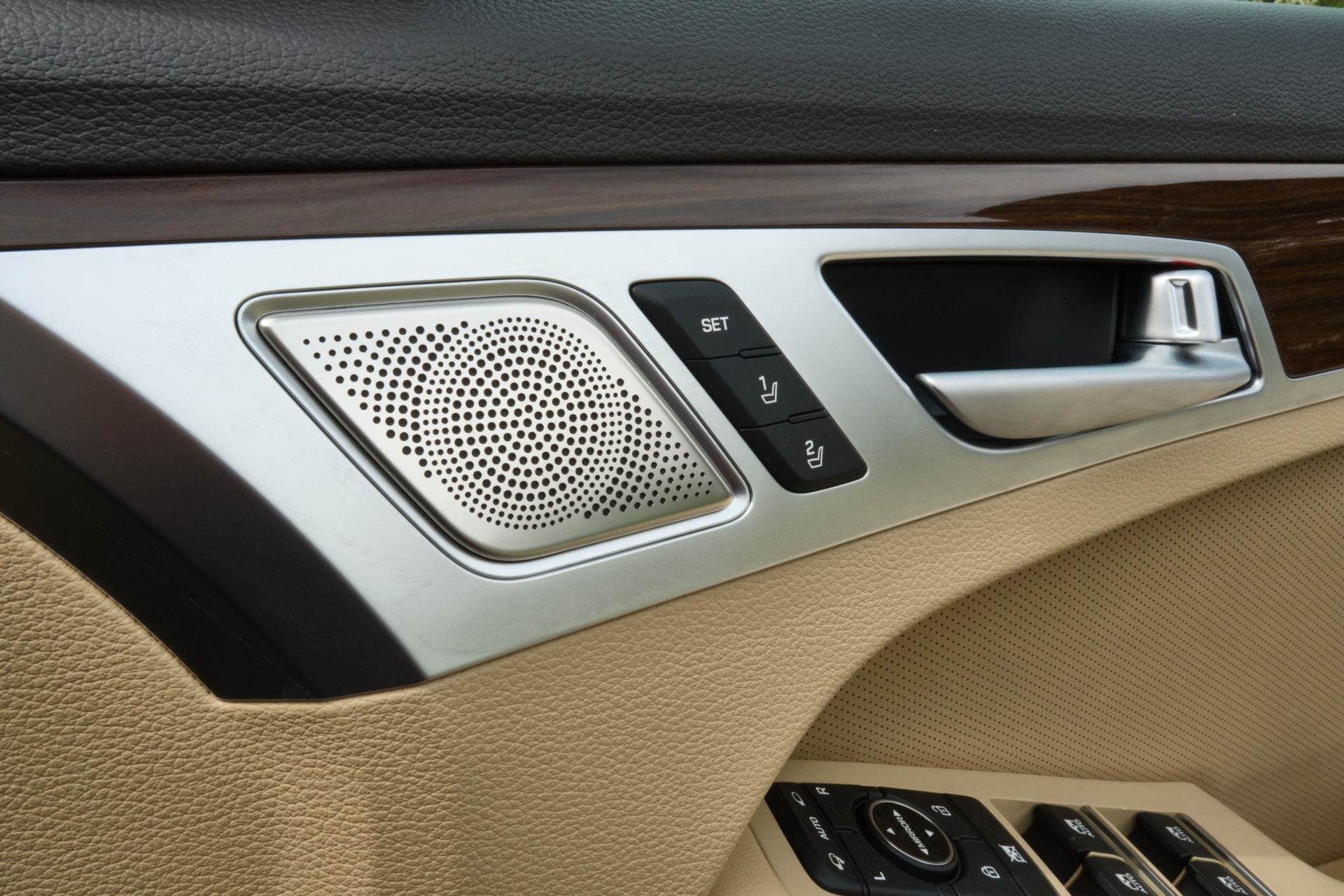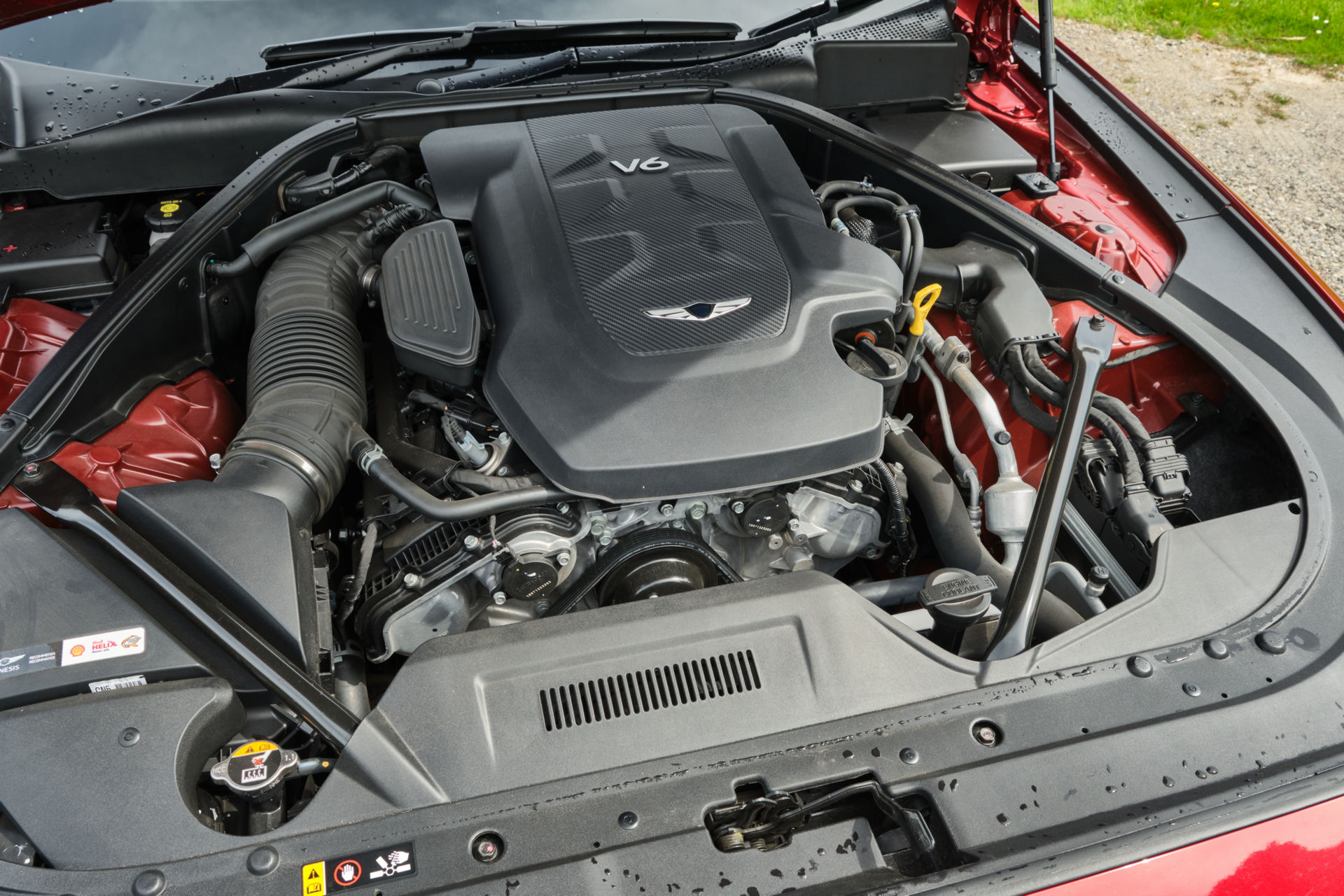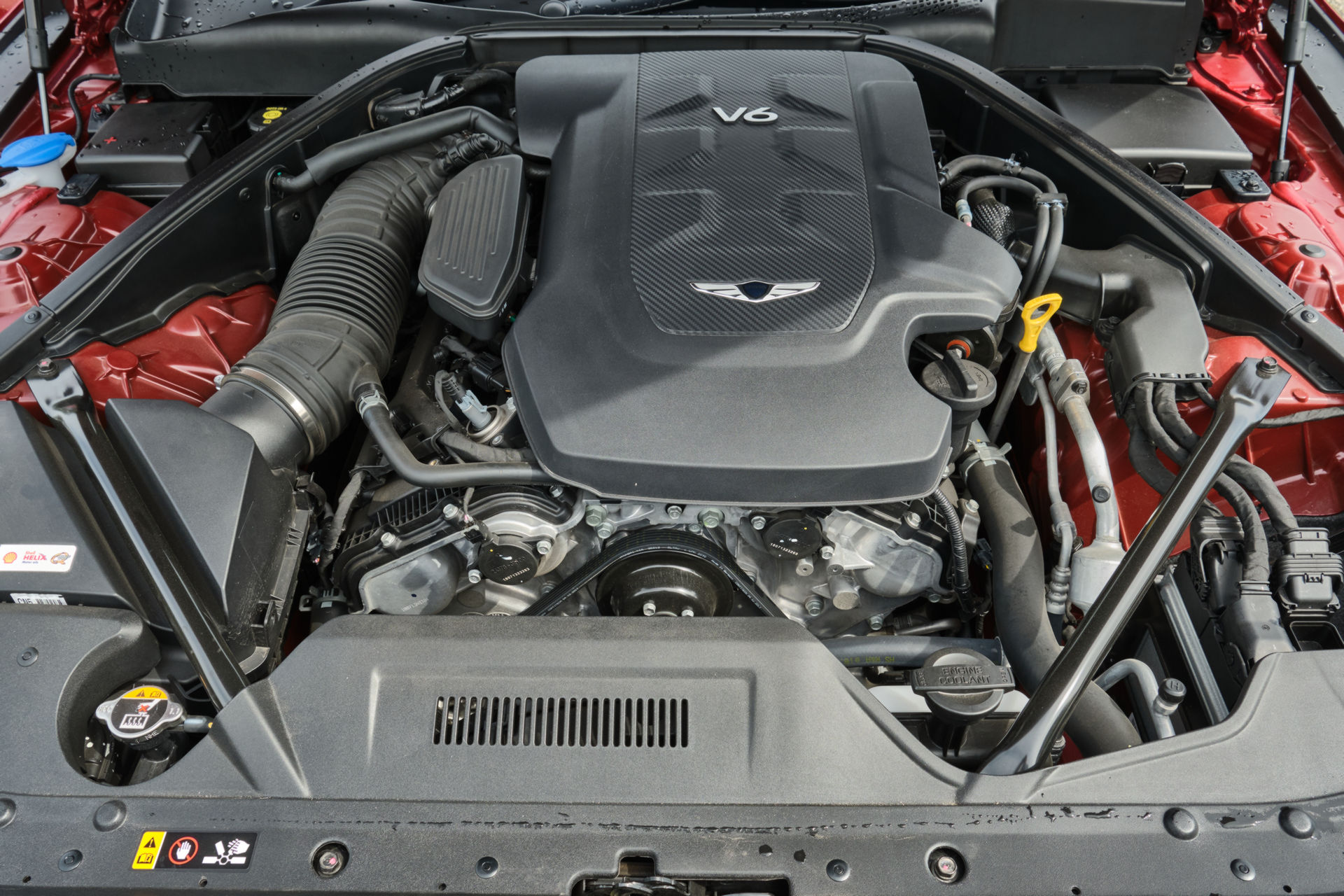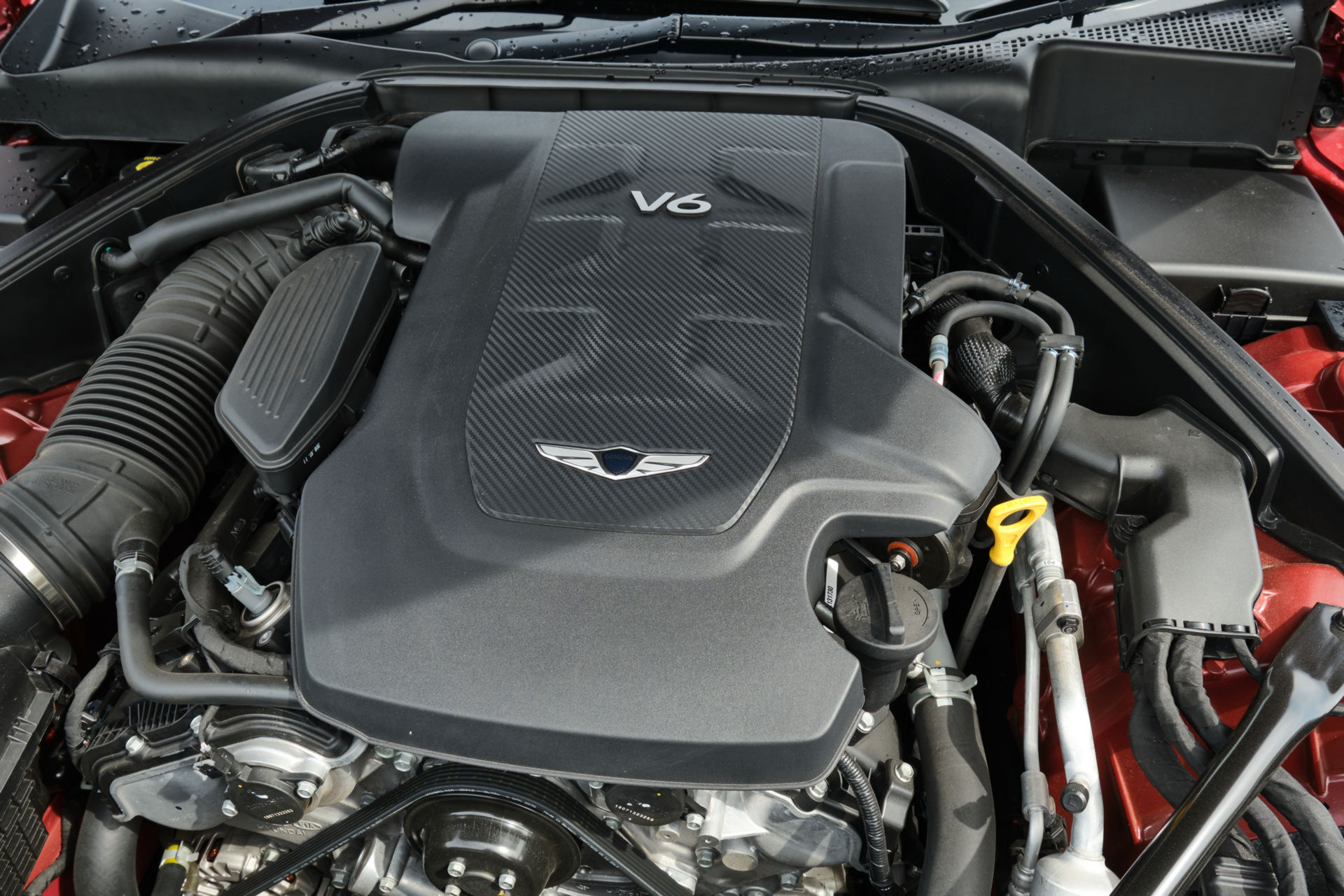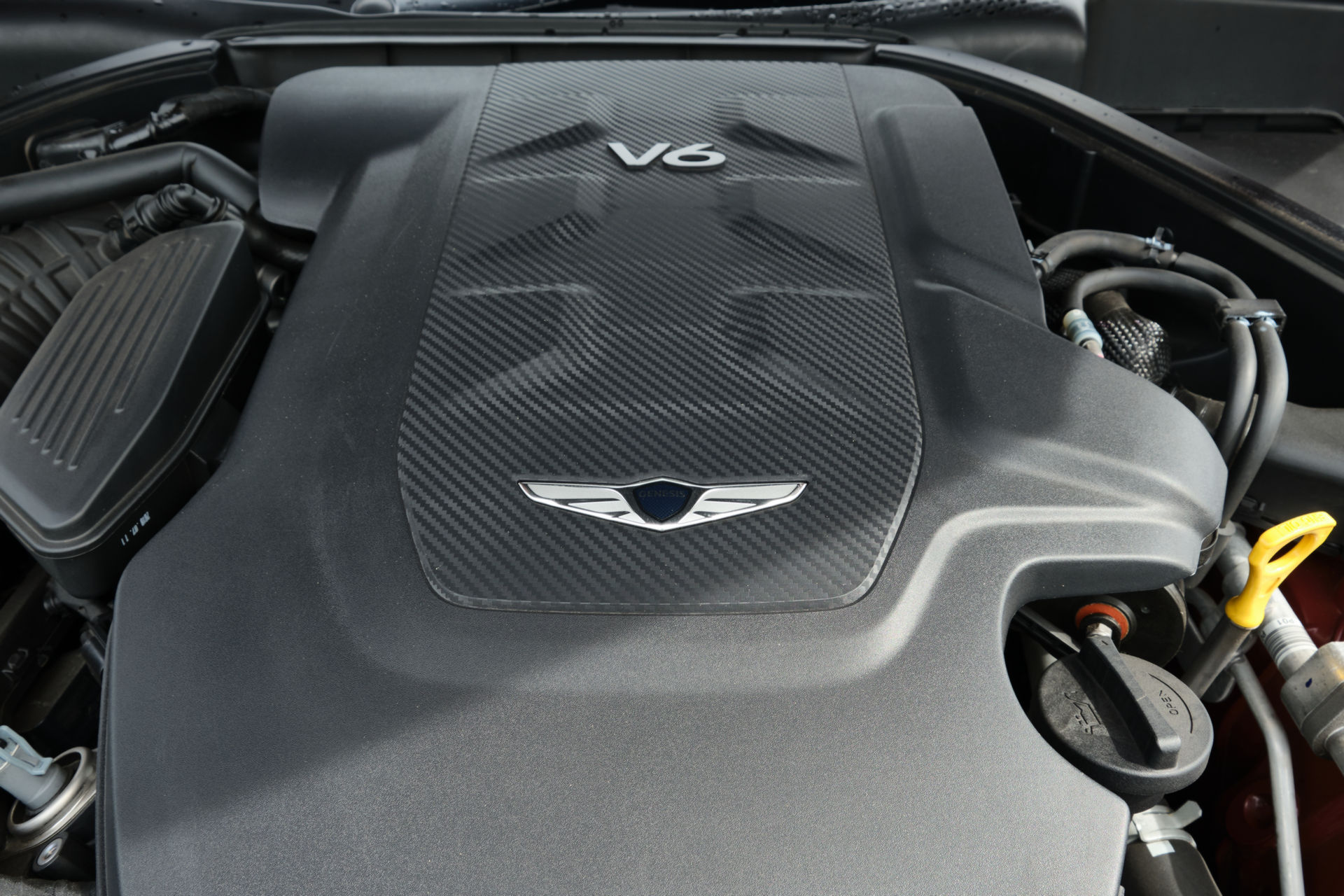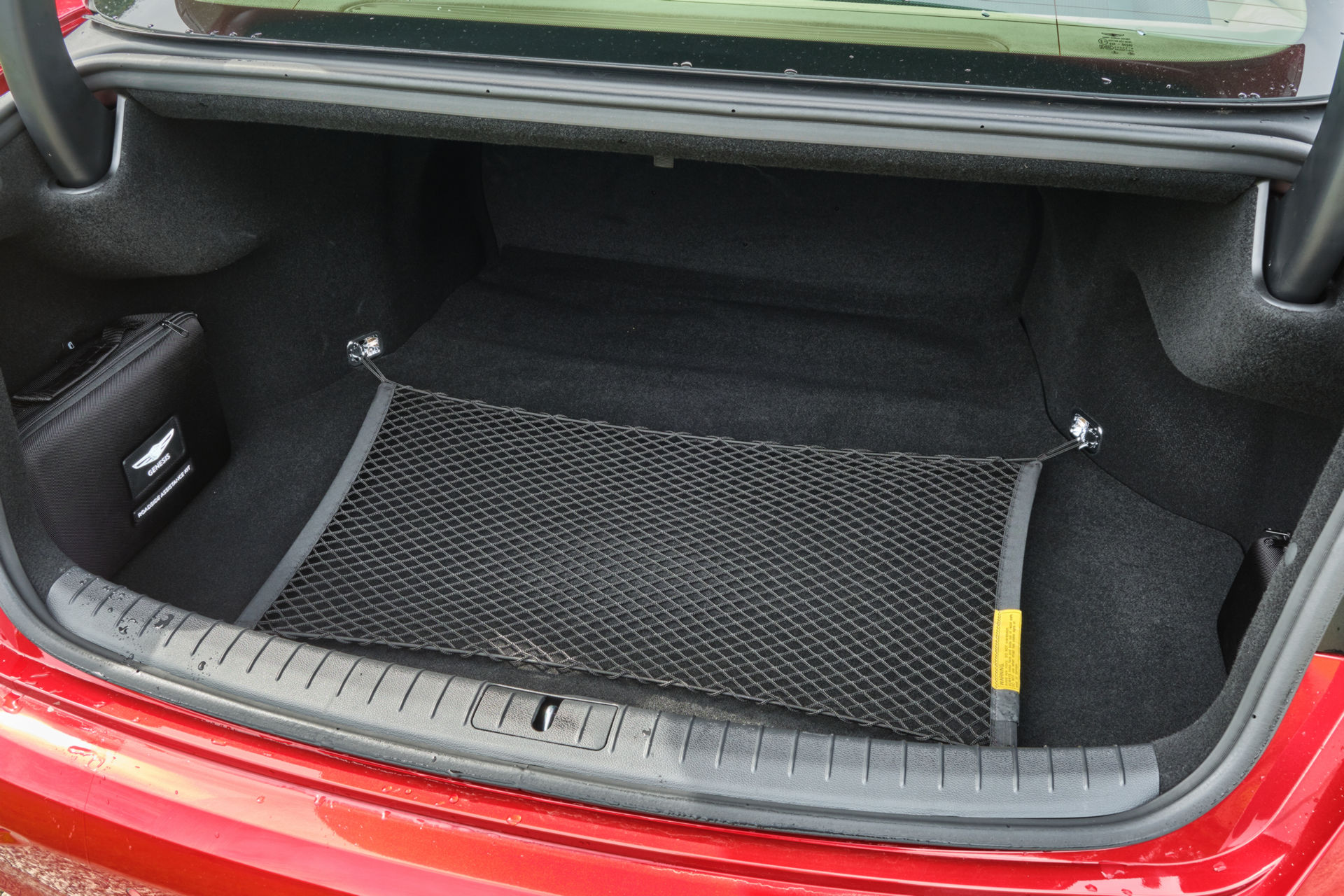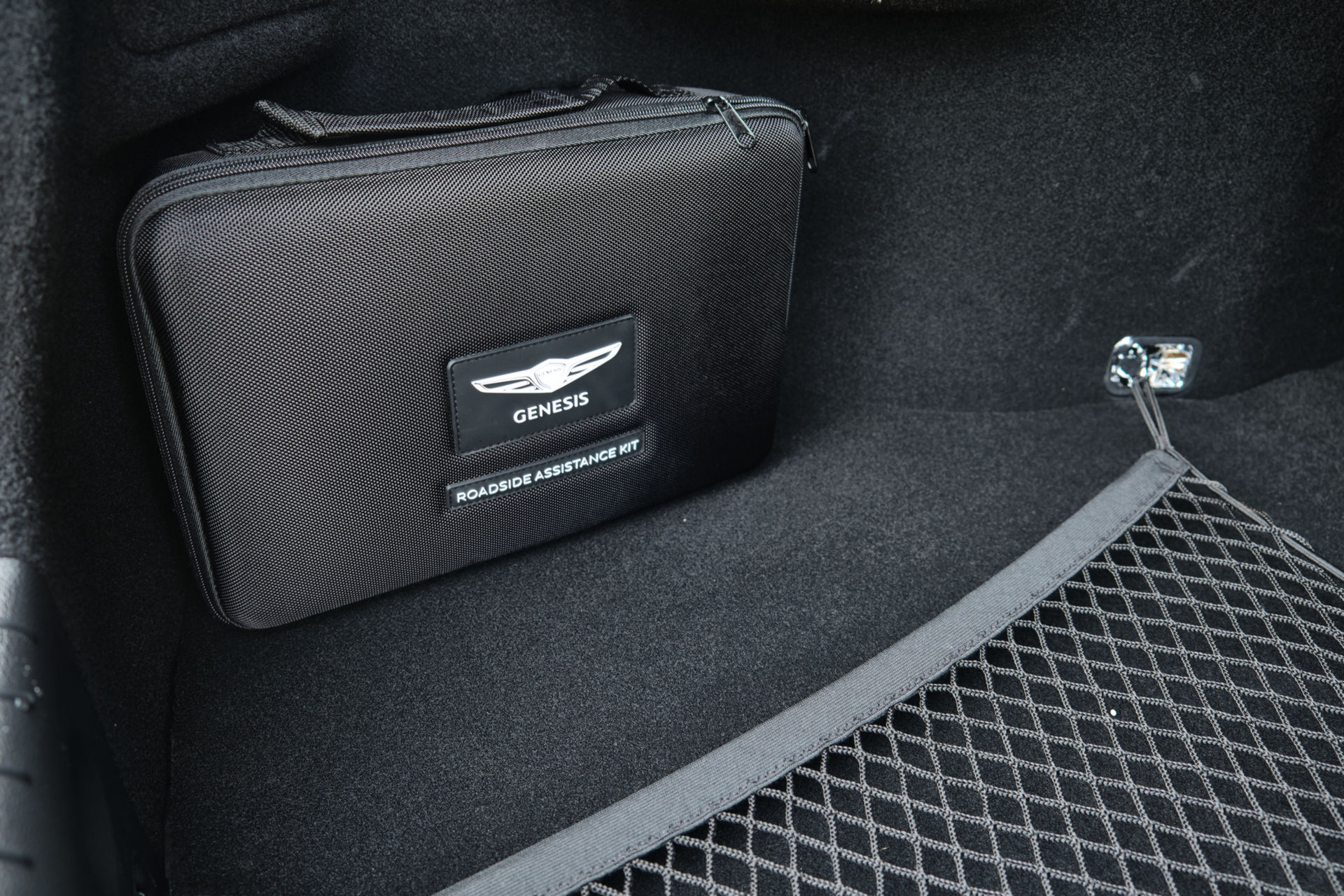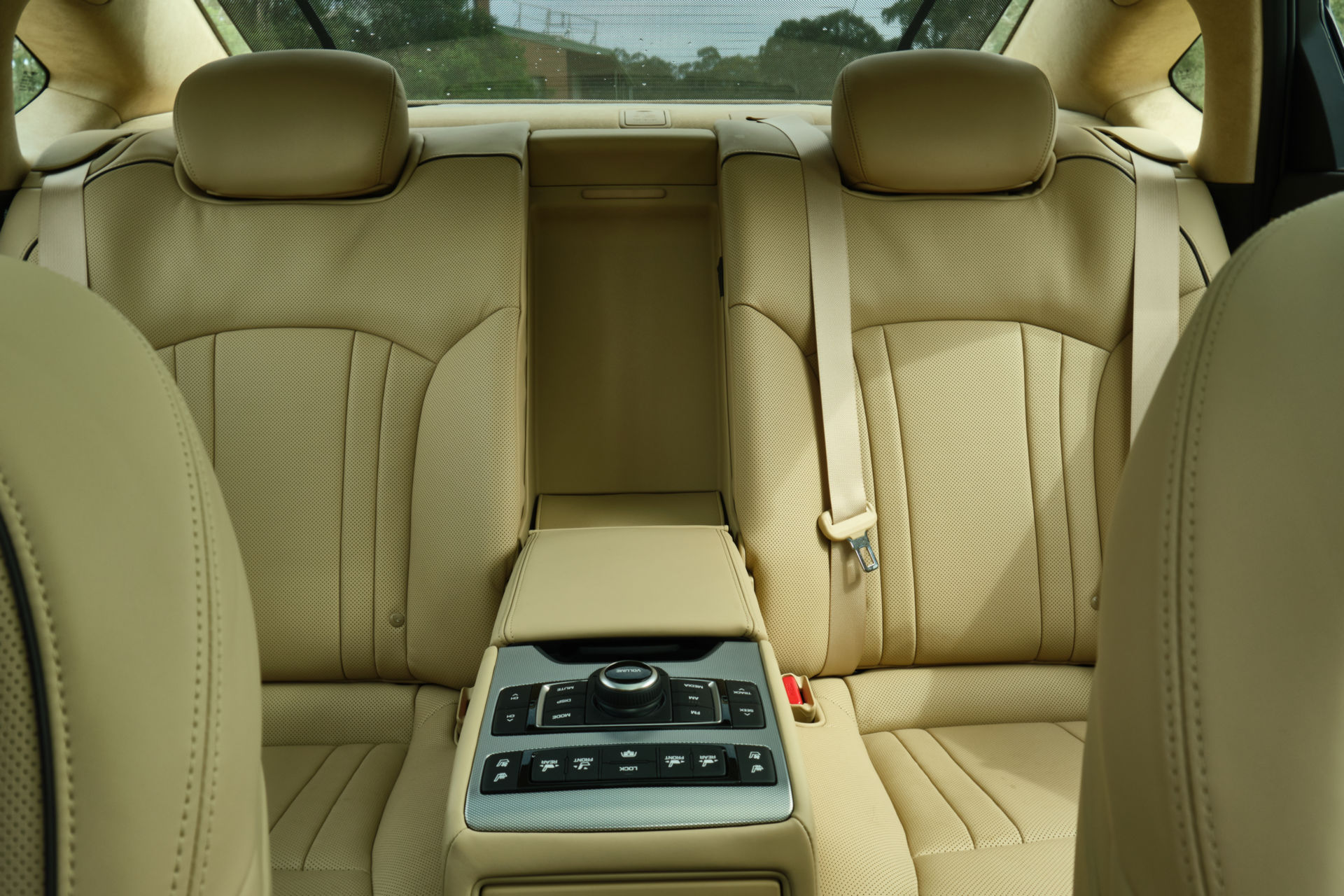The Genesis G80 is a car which just 10 years ago, couldn’t have existed. Back then, cars from the South Korean automaker were about as bland as could be. They also weren’t that well-known for their qualities. Well, things have changed dramatically since then.
Today, Hyundai is not only producing some exciting performance cars through its N division but ihas t also spun-off its Genesis sedan into an all-new luxury division. This saw the second-generation Hyundai Genesis, built since late 2013, re-badged as the Genesis G80 and re-introduced into the Australian market a few months ago.
The move to roll-out the dated yet luxurious BMW 5-Series rival was rather odd, since it is getting ready to launch a new, and presumably seriously improved, generation. However, as we recently discovered, the current G80 does retain a certain charming appeal.
Sexy in a red dress
This particular model is the 2019 G80 Ultimate Sport Design priced from AU$92,900 before any on-road costs ($63,678). There’s no denying that it looks the part.
Differentiating the Ultimate Sport Design from lesser variants is an aggressive sports bodykit with a sharp new bumper, 19-inch multi-spoke alloy wheels equipped with faux centerlocks, a host of dark chrome accents, bi-xenon headlights, stainless steel pedals, and dual chrome tailpipes. On more than one occasion we were approached on the street by onlookers who said they loved the style of the G80.
Admittedly, it does look drastically different than any of its more expensive German rivals although it also shares very little in common with the designs of newer Hyundai models.
Our test car was equipped with a 3.8-liter naturally aspirated V6 delivering 311 HP and 397 Nm (292 lb-ft). That latter figure is more impressive than the first, yet neither are all that exciting when you consider that some other markets get a 5.0-liter V8 with 419 HP and 520 Nm (383 lb-ft) as well as the 3.3-liter twin-turbo V6 of the G70 and Stinger with 364 HP and 510 Nm (376 lb-ft). Aussie models see the 3.8 engine coupled to an eight-speed automatic transmission sending power to the rear wheels.
We happen to think that this engine and transmission work quite nicely together considering their age. For a naturally aspirated six, there is more than enough power on offer as well as buttons in the center console allowing drivers to toggle between various modes, including Comfort and Sport.
There are some signs of age
Changing between these two reveals one of the vehicle’s shortcomings. In some more modern luxury sedans, especially those with an air suspension, changing between modes results in a drastic difference in ride quality. That’s not the case with the G80 we tested. In fact, there’s barely any noticeable ride comfort difference between them. Fortunately, the G80 is adequately smooth in both modes, helped in no doubt by the adaptive sports suspension that has been fine-tuned for Australian roads.
Another aspect of the G80 that shows its age is the transmission. Because it is not a dual-clutch, it can be slow to respond, especially if you’re driving in automatic mode and suddenly stab the throttle. Genesis has slapped on a set of paddle shifters behind the steering wheel should customers wish to shift gears themselves. Unfortunately, it’s no real manual mode, so it will change gears for you if it feels it’s necessary.
One of the biggest surprises driving the G80 for a week was just how well isolated the cabin is from the rest of the outside world. There is virtually no road and tire noise at speeds of up to 110 km/h (68 mph) and it’s incredibly easy to cover miles in the car. Making things especially easy are a nicely-programmed adaptive cruise control system with stop&go, a Head-Up display, rear cross-traffic alert, lane-departure warning, and driver-attention warning. Sadly, the G80 won’t do the steering for you on motorway jaunts even though much more affordable vehicles from the Hyundai family, like the much more humble i30, do – again, a sign of its age…
Our test car also included an excellent Head-Up display that would alert you to vehicles in your blind spots. This served useful on multiple occasions and means you don’t need to glance into the wing mirrors to see if there are vehicles hiding behind you.
The South Koreans can do luxury
Moving to the interior, it is nice. Very nice in fact, regardless of whether you’re driving the G80, sitting in the front passenger seat or relaxing at the rear. All seats and numerous other surfaces are clad in plush Nappa leather and there is also a suede headliner. Adorning much of the dashboard and parts of the door panels is wood and there are a number of covered storage cubbies in the center console.
The view from the driver’s seat is pleasant, although it’s hard not to feel as if you’re driving something out of a different era, not 2019. For example, the big four-spoke steering wheel, while pleasant to hold, looks outdated. In addition, the dashboard design is a bit two ‘square’ for our liking, over-run by horizontal and vertical lines and free of almost any curves. This extends to the analog clock which is a square as opposed to the more visually-appealing, circle-shaped analog clocks used by Lexus, for example. A 9.2-inch touchscreen navigation system is used. It too feels old and in Australia lacks Apple CarPlay and Android Auto functionality – but at least it has with a Qi wireless charger.
Cast your eyes back from the dashboard and the G80 quickly redeems itself. The 16-way driver’s seat is impeccably comfortable and includes a memory function. Also the front seats are heated and ventilated, and the handy buttons on the side of the passenger seat allow the driver to adjust it should someone in the back want a little more legroom.
It’s a similar story at the rear. The seats offer a range of adjustments through a control panel in the center armrest, meaning rear passengers can slightly recline their seats and make other minor adjustments. Genesis has also added a pair of manually-operated window blinds and a power-operated rear window blind. Another nice aspect of the G80’s cabin is its massive panoramic sunroof.
Genesis claims the sedan consumes 10.8 liters per 100 km (21.7 U.S. mpg), although during our testing, which included a mix of urban driving and motorway driving, we actually got 12.5 l/100 km (18.8 U.S. mpg) and suspect achieving the claimed figure could be difficult.
All in all, the 2019 Genesis G80 Ultimate Sport Design is an impressive piece of kit that hides its age reasonably well. It’s an extremely pleasant car to drive over long distances, though the 433-liter (15.2 cubic-feet) of luggage space is rather small.
Is buying a new G80 a wise move? Ordinarily, we would say yes, but the fact that an all-new model is just around the corner means it’s probably best to wait for that one to arrive. In its own right, though, and despite its age and shortcomings, it does hold a certain appeal, chief among which is its luxury.



